

Long Term Travel Planning: How to budget, book and explore

Long term travel planning is a very daunting task at the beginning of the process. The goal of this post is to take that daunting task of how to plan long term travel and break it into smaller and much more manageable pieces! We will address the tough questions that come up when planning long term travel.
There are tons of logistics that go into long term travel planning beyond deciding when and where. It is important to remember that you will also make mistakes and that is ok! Even though we consider ourselves “expert travelers” at this point, we still make mistakes. Travel is a continued learning experience!
If you read about how to quit your job and travel , it explains how we went through this process prior to backpacking the world for six months.
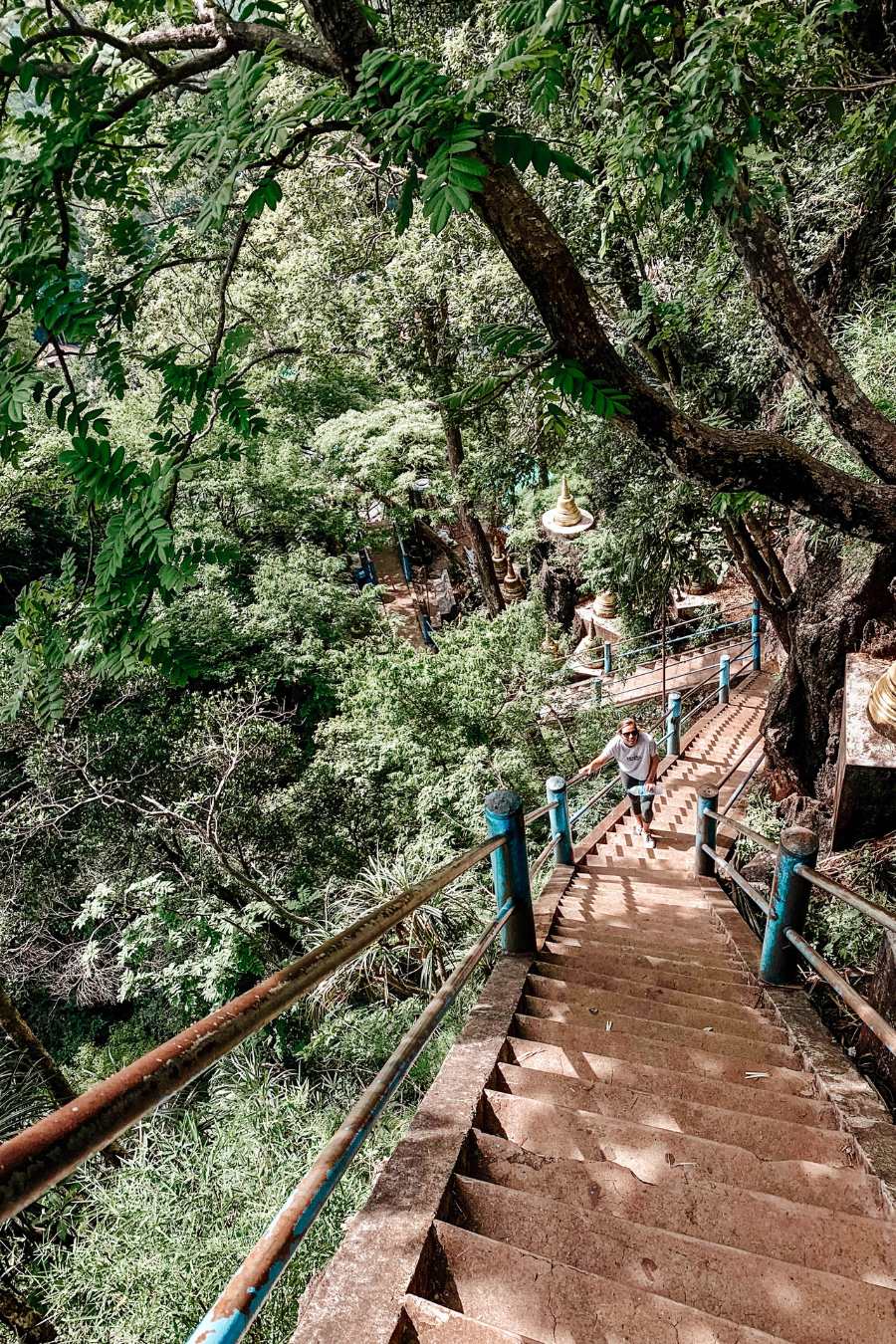
Determine your long term travel style
Depending on your travel experience at this moment, you may not know the answer to this exactly. Your travel style has a lot to do with your personality type and your level of comfort with discomfort. Your travel style will determine how you plan your overall trip and also your daily agendas. There is big picture planning and daily planning to consider.
Here is the difference between big picture and daily itinerary planning: When we went on our first backpacking trip, we knew exactly what days we would be in which cities for the entire six months. This was more cost effective and ultimately saved us tons of money because we booked transportation and housing in advance. However, this was not our approach within our daily itinerary. We love to wander around cities without a strict tourist to-do list. If we find ourselves enjoying an activity, no big deal if we extend that and miss out on something else. Worst case, we just have to come back another time! We simply knew where and when we would be in a city and we would go with the flow from there.
On the contrary, not everyone wants to be held back by even a big picture itinerary. We knew backpackers who simply bought a flight to Asia and figured out their itinerary one day at a time. In some countries, this is totally possible.
Ask yourself the question: How comfortable are you with discomfort?
If you land in a city and do not know where you are staying, will you be comfortable potentially sleeping in the airport if all hostels are sold out? If yes, great! If not, it is a good idea to plan your long term travel to an extent.
How much of your big picture itinerary do you need to plan?
There is absolutely no right or wrong answer to this question. For big picture itinerary planning, here are some examples of different long term travel planning styles.
Each day planned out: Experience everything you can in the time that you have.
This was our approach on our original six month backpacking trip around the world. We knew we had six months without jobs to travel, so we opted to see as much as we possibly could during that time. We moved to a new city every 2-3 days. This was exhausting but we loved it! We will probably never travel like this again, but it was exactly what we wanted at the time. Now that we work remotely and have been to so many different cities, we know exactly which cities we want to go back to and stay for a longer period.
Nothing planned out: The total go with the flow mentality
This is a classic backpacker travel style. We have so much respect for travelers who can do this and feel comfortable. These travelers buy a one way flight somewhere and just figure it out as they go. In destinations like Southeast Asia, you can totally get away with this. There are usually plenty of beds available in community hostels and flights between cities are affordable. As you meet other travelers, you can simply hop in on their plans and potentially check out a city that you didn’t even know existed! The cons to this approach are that housing and flights will be much more expensive. This can eat up more of your daily budget and potentially cut your time short if you did not plan in advance.
A mix of both: The ebb and flow itinerary
This is somewhere in between the two listed above. Most travelers fall into this category but it is not an easy thing to balance. If you go with this approach, we recommend planning at least the first 2-3 weeks of your long term travel itinerary. This way you can get your footing and figure out your next steps once you are in a new region of the world! The cons to this approach are the same as listed above. Housing and transportation will be more expensive. Another thing to consider with this approach is travel planning will take away from your current travel experience. You will need to take time in whatever destination you are in to plan your next move. This is totally not a deal breaker, just one more thing to consider!
Determining your travel style will greatly assist in the rest of your long term travel planning. You will know how detailed you need to be in the next steps! As for next steps, determining your travel budget and destinations go hand in hand with each other when planning long term travel. Depending on your destinations, your daily spend will be more or less. Also depending on the destination, you could spend one month or four months traveling on the same budget!
Again, we are aware this is a daunting task. Do a little bit at a time and before you know it, you will be ready for long term travel!
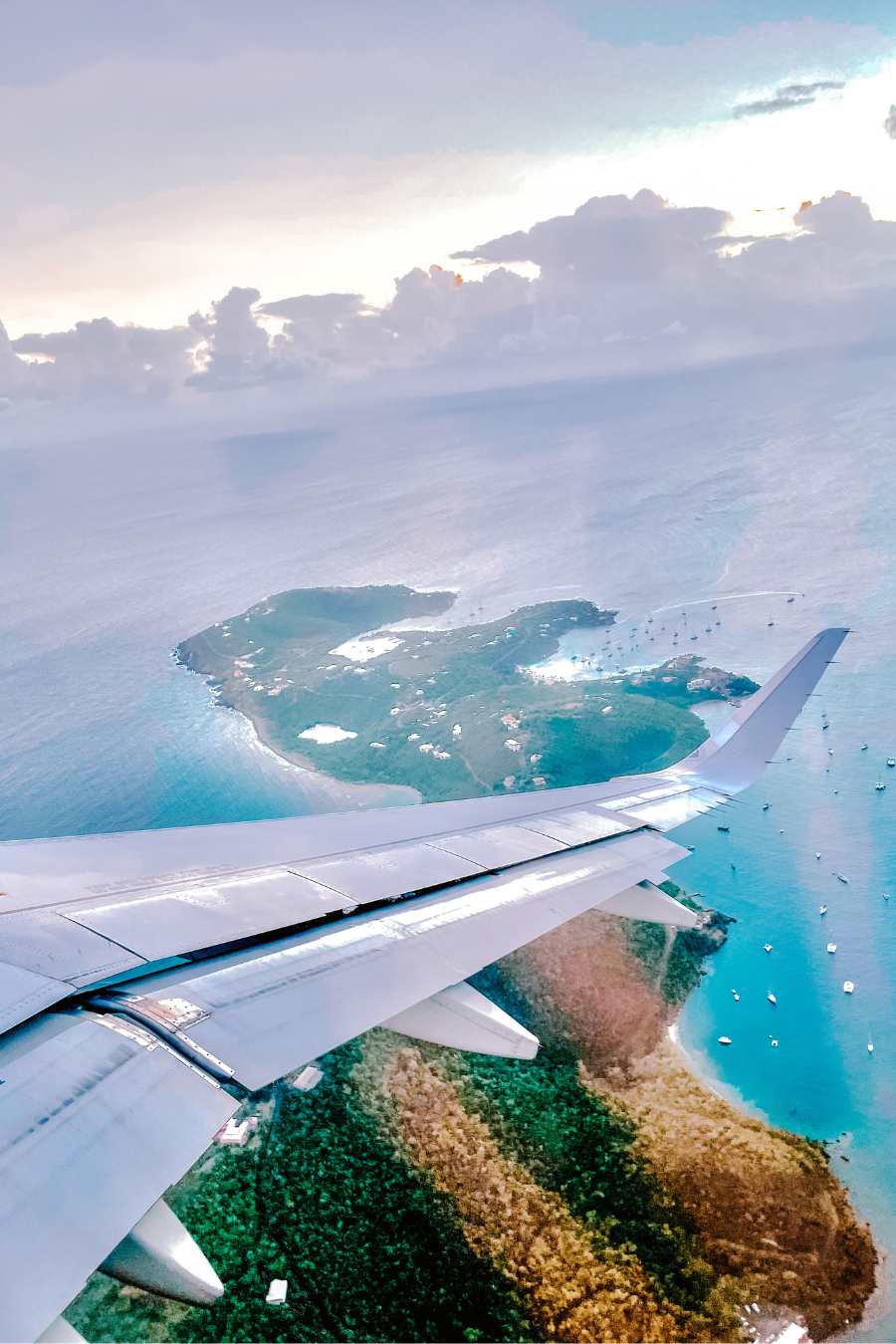
Determine your long term travel budget
Creating a travel budget is absolutely necessary, especially when it comes to long term travel planning. Similar to your travel style, your budget is partially determined by your level of comfort with discomfort. We had plenty of extra savings on our trip in case of emergency and as backup for when we returned without guarantee of jobs. Not everyone needs this level of comfort though! There are always ways to make money while traveling if you really find yourself in a pickle.
There are also so many ways to travel on a budget without sacrificing your experience. Even if we do not always travel on such a tight budget as our six month trip around the world, we will always use the majority of those principles. They just make sense!
Learn how to travel on a budget.
A few questions to answer while determining your budget:.
- Will you be working while traveling long term?
- What recurring expenses will you still have to pay while traveling? (ie. rent, car or student loan payments)
- What will your financial situation look like when you return from long term travel?
Our budget planning specific post goes into more detail, but here are the four steps to build your long term travel budget:
- Determine flight and transportation costs
- Determine housing costs
- Plan your daily spend
- Plan the costs for excursions and activities

Determine your long term travel destinations
While you are also determining your travel budget, you can also start to determine your destinations. The world is a big place and there is so much to experience. We still have a huge bucket list even after traveling full time for six months! Here is a breakdown of steps to figure out where in the world you want to travel long term.
Write out your bucket list
Where are your dream destinations? Once you write out that list, group things on that list that are in a similar region together. Is it possible to tackle them within the same time frame? For example, two things on our bucket list were to see the Great Wall of China and play with elephants in Thailand. It was actually a reasonably priced flight from China to Thailand, so we started our trip with that!
Once you know which bucket list items you want to check off, what else is there to do in that region? Vietnam was not on our radar when we first started planning and it turned out to be one of our favorite countries in the world. Research other things you want to do while slowly but surely tackling that bucket list.
Plan around the climates
This factor often gets overlooked when long term travel planning. You do not want to visit certain areas of the world during some seasons. For example, you can visit Asia during the rainy season (May – October), but be prepared for consistent heavy rains. If you want to backpack Europe when the weather is warm, then do not plan your trip from December – February. This may seem simple, but is important to consider when planning your long term travel route.
Use code JLJ10 for 10% off all eSIM purchases.
Consider your budget
Some countries are simply cheaper than others. If you are stretching your budget over a long period of time, it may not be worth checking destinations off of the bucket list in really expensive countries. We wanted to go to Switzerland but it simply did not make sense with how expensive it was for even just one night. We will go back when we are not on such a small daily budget!
South America and Southeast Asia are regions where you can really extend your budget. You can spend 4 months in those regions on a $4,000 – $5,000 total budget. There are also cheaper countries in Europe to explore like Hungary, Poland, Czech Republic and Croatia that are affordable backpacking destinations! We spent more time in these areas when we were on a stricter budget.
Remember your travel style
This is a good time to go back to the first thing we talked about. How much do you want to have planned? There is absolutely no wrong way to go about this! The more planning you do ahead of time, the less planning you will have to do while actually traveling.
Travel is messy! Things will go wrong no matter how much you plan. But the less you plan, the more contingency you should have with your budget for unexpected expenses and pricier housing and transportation costs.
Our favorite long term travel planning resources
Google flights.
There are tons of second hand websites for tracking flights and prices but honestly Google Flights is our favorite. You can gauge how much flights should cost and compare different airlines.
This is the best place to start researching housing in each city. Trivago will show you options for any budget and different types of housing. We also find more people leave reviews on housing they find here compared to other housing sites.
Hostel World
Most hostels will also appear on Trivago but it is a good idea to check Hostelworld as well to see budget housing options. Sometimes pricing will differ and be cheaper here compared to other sites!
This is the best website when researching and booking different transportation options between cities. It will show all options from plane, train, car, ferry and bus! When balling on a budget, it is important to know which option is cheaper. Sometimes that overnight bus is worth the savings!

Plan out necessary long term travel details
Once you know where and when you are going, it is time to work out the details!
Book the essential activities
Are there any major activities that you need to book in advance? If you know when you will be in a city with one of your bucket list items, book it now! You never know when activities will fill up, especially if you are visiting during the high tourist season. You do not want to find yourself missing out on an activity because you put off reserving your spot.
Know your neighborhoods
It is important to know where to stay in each new city. We always research the best backpacker neighborhoods in each city because then we know there will be fellow travelers staying in that area and it is most likely budget friendly. Consider your priorities when booking housing and see if you can find options in that area before committing to housing in a new city.
Housing priorities to consider:
- Distance to bars and restaurants
- Distance to public transportation
- Distance to airport or train station
Research, research, research
Travel blogs, Pinterest, and asking friends are all ways to learn more about specific destinations. You will be surprised how many friends are willing to send over restaurants, bars and must do recommendations!
Save recommendations in Google Maps
This is one of our favorite travel planning hacks and will save you time on last minute research when you arrive in a new city. It is very simple:
- Locate the recommendation on Google Maps
- Save the recommendation to a new list if you do not already have a list created for that city
- Write a note about that recommendation that will remind you of the specialty or reason you are saving it (for example, “best sandwich shop” in Florence).
Now when you go to your Google Maps later, you will have an entire list of places to try!
Now that you are well on your way to figuring out your itinerary and long term travel plan, it is time to prepare for long term travel. You need to make sure you are prepared from what to pack to making sure your passport is not expired. Read here everything you need to prepare for long term travel.
Additional Resources:
Learn how to pack light for long term travel! Here are 50 things to know before traveling to Southeast Asia. Backpacking Essentials: Here are 10 Items that every backpack needs.
We hope this post provides clarity on how to plan long term travel! Let us know in the comments if there are any key factors missing. Happy traveling!
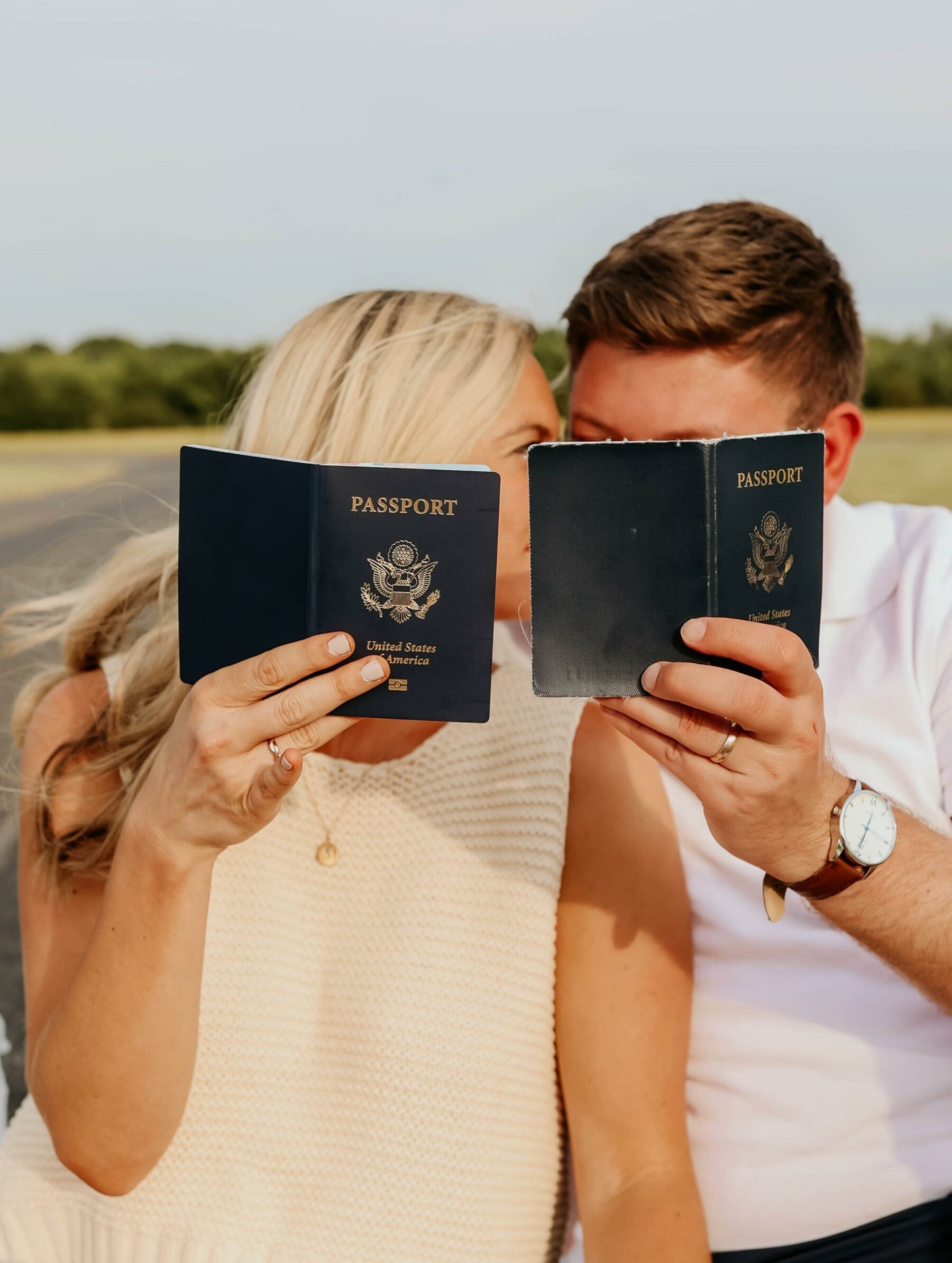
Hi friends! Welcome to The Jet Lag Journey.
This is an online destination that tackles difficult travel questions in order to make worldwide travel practical and accessible. Happy exploring!
Posts to Start with

50 Europe Travel Tips: A First-Timer’s Guide to Traveling to Europe

Travel Gift Guide: 25+ Best Gifts for all Travelers in 2023

How to Quit your Job and Travel
More posts you might like.

15 Europe Travel Essentials: Backpacking Europe Checklist

15 Sailing Trip Tips: How to Prepare for the Perfect Sailing Trip

How to Plan a Bachelorette Party: A Step-by-Step Guide
Leave a comment.
Save my name, email, and website in this browser for the next time I comment.
What are you searching for?

How To Prepare For Long-Term Travel: Step-by-Step Guide
- August 21, 2023
- Last updated: August 21, 2023
- Digital nomad
Home » Travel Blog » How To Prepare For Long-Term Travel: Step-by-Step Guide
What is long-term travel? The truth is, long-term travel can mean different things to different people.
No matter the span of time you choose, at its core, long-term travel is an incredible way to experience cultural immersion, as well as a period of personal reflection and transformation.
For some, long-term travel can involve trading in a traditional lifestyle for adventure and exploration, while for others it is merely a vacation approached differently. Whether it is six months, a year, or indefinitely long, you will be able to gain firsthand experience with foreign cultures, see sights you would otherwise not find the time to explore and tap into the magical feeling of being found in the expansive world around them.
Preparation for long-term travel is a key step to making the most of your experience. And before you even begin thinking about what to pack , we have some big-picture ticket items to cover. Let’s jump in!
Having the right mindset when preparing for long-term travel is essential. Before hitting the road, it’s important to think through what kind of journey you’re envisioning.
Are you headed out for a spontaneous adventure? Have you decided to take a sabbatical year to learn new skills and expand your horizons? An extended wellness retreat ? Do you intend to continue with your current dreams and goals, potentially taking your job online as you go? Or are you looking for opportunities to volunteer?
Give serious thought to all these possibilities so that, when the time comes, you’re able to hit the ground running. With the right attitude and mindset, you are sure to have an incredible experience that will stay with you forever!
2. PASSPORT
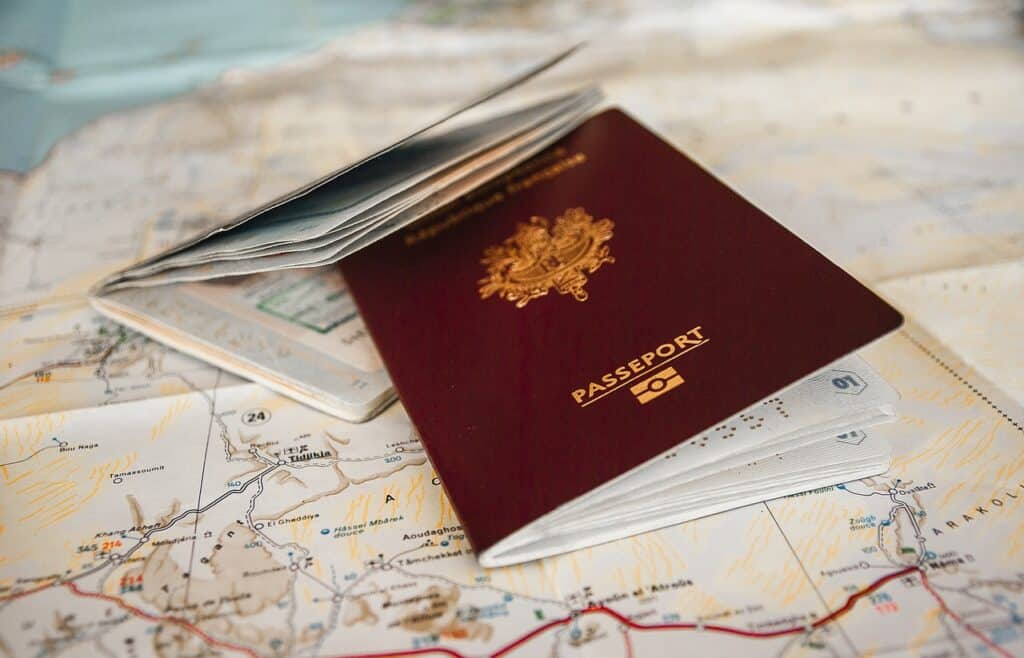
Traveling with a valid and up-to-date passport should be considered essential for any traveler, particularly for someone embarking on a long-term trip.
Start with checking your passport’s exploration date. Many countries require the passport to be valid for at least six months from the date of entry. Depending on how long you plan on traveling, you may need to renew your passport before you hit the road.
Not only should you make sure that your passport has not expired, but it should also have enough blank pages for entry stamps and visas. Some countries will deny access if a person’s passport doesn’t have enough usable pages.
To fully enjoy long-term travel, it is important to make sure that you are not hindered by visa requirements.
Before your journey, it is important to check the visa requirements of each country you plan to visit. Do this well in advance of your trip (I’d recommend six months before) because the visa application process can be time-consuming, and you don’t want to be scrambling at the last minute.
Depending on the desired duration of stay, there are a variety of visas available including working visas, travel visas, and even digital nomad visas in some countries, if you plan to work remotely while abroad.
Again, each country will have its own rules and regulations, so check your country’s embassy website for an idea of how to get started.
Check out some useful posts:
- Remote Digital Nomad Jobs: The 5 Best Sites to Find Them
- Best Destinations for Digital Nomads
- 5 Common Digital Nomad Mistakes and How to Avoid Them
4. BANK CARD
When traveling long-term, most people opt to bring at least two debit cards: one primary and one backup. I recommend this approach, too.
Before taking off, make sure that your bank is aware of where you are traveling so that they will not block your card when you are trying to withdraw money internationally. This applies to both credit and debit cards.
Companies like Wise and Revolut are ideal especially if you plan on frequently traveling abroad. They come with minimal or no transaction fees or foreign exchange fees. However, always be sure to read the fine print before signing up with these companies because various conditions and fees may apply depending on your particular needs.
5. SIM CARD

Preparing a sim card for a long-term travel trip can be somewhat cumbersome and may require advanced preparation. The best option is to purchase a local sim with data. This is usually the lowest-cost option, as well. Research local providers in the country you are traveling to or ask in online forums or Facebook groups for recommendations.
But even if you are planning on buying a local sim, still bring your regular sim card with you, especially if that phone number is connected to your bank account or other important services. In case you need to authorize something or receive a confirmation code on your regular number, you can always switch out the sim card for a couple of hours.
6. HEALTH & TRAVEL INSURANCE (Plus Check-Ups)
Health insurance should be at the top of the list when it comes to planning for a long-term journey. Especially if extended activities such as trekking or high-adrenaline sports are involved.
Health insurance will provide financial protection in case of unexpected medical emergencies or illnesses that may occur during your trip. Without insurance, medical expenses incurred abroad can be costly. Your insurance typically covers the cost of medical treatment, hospitalization, prescription drugs, ambulance services, and other medical expenses. If you are bringing expensive photography gear and computers, consider investing in travel insurance to cover your valuables in case of theft or damage.
Last but not least, I recommend getting a checkup from both your primary care physician and dentist before leaving on the trip. You’ll feel more confident beginning your travels with a clean bill of health.
Get more inspiration:
- Travel Medical Insurance for Digital Nomads: Why You REALLY Need It
Digital Nomad Packing List: The Ultimate Guide to Traveling Light
- Teach English online: How to Find the Best Fit for You
7. INTERNATIONAL DRIVING LICENSE
If you plan on renting a car during your trip, you may need to get an international driving license. You can sometimes get away with using your domestic license but double-check the legal requirements of your destination country.
In some countries, the law requires you to have an International Driving Permit (IDP) in addition to your domestic license. The fees for the IDP vary depending on where you live, but generally speaking, it is quite affordable and easy to obtain.
8. TAXES & FREELANCE REGISTRATION

For those planning to work while traveling, you may need to do some preparations around taxes and other legal work-related documents.
If you pay taxes in the country of your residence, make sure you are registered as a freelancer and get your tax number OR that your employer will pay taxes and deduct it from your wage if you intend to continue with your job online.
If you’re not sure what the best course of action is, consult with your accountant. I recommend looking for an accountant who specializes in working with nomads or expats. They’ll be most knowledgeable about how to set you up for success.
9. POWER OF ATTORNEY
When you are away from home for an extended period of time, there may be important decisions that need to be made in your absence. Without a power of attorney, it can be difficult to ensure that these decisions will be made in the way you would like them to. And you defenitely don’t want someone making decisions on your behalf without your permission or knowledge.
A power of attorney is a legal document that gives another person authority to make certain decisions and act on your behalf while you are away. This could include managing finances, signing documents, or making medical decisions if needed. I know – even in 2023, there are places where you can’t get away with an electronic signature and require a physical one!
Having a power of attorney ensures that any necessary actions can still take place even when you’re not present.
10. YOUR STUFF & HOUSE/APARTMENT
Before departing for a long trip, you’ll need to decide what to do with your stuff and how to handle your house or apartment.
If you own a house, you may want to rent it out or have someone, like a housesitter, manage and maintain it while you’re away. It’s also important to make sure that all your bills are taken care of and automated so you don’t have any surprises when you return.
If you’re renting a place, it may make more sense to give up your lease and move your belongings into storage. This can be a great way to save some money. Alternatively, if you’re looking for a fresh start, you can do a big garage sale for most of your belongings and reduce your possessions to what you can fit in a suitcase.
You should also consider shipping your existing vehicles to your destination as it will help save you money over renting cars or buying a new one.
If you have pets, you’ll need to make plans for their care and well-being while you are away. Consider hiring a pet sitter or asking a friend or relative to take your pet in while you travel.
11. LANGUAGE & CULTURE
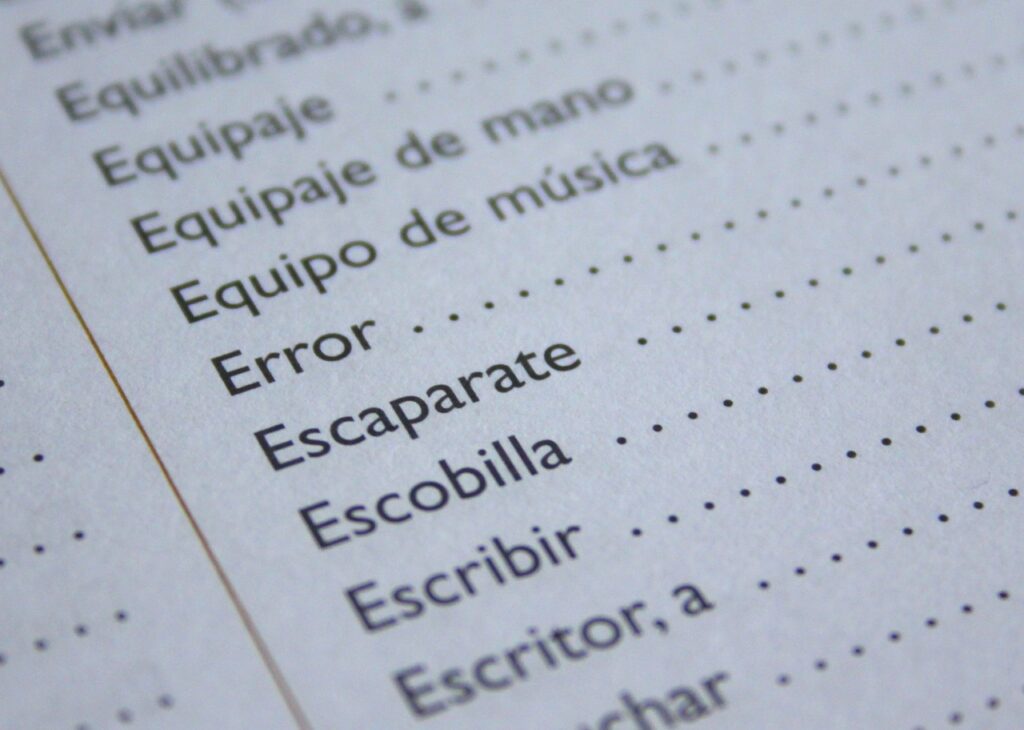
To truly elevate and make the most of your travel experience it can be fun to learn a little bit about the language and culture of the destination you are going to.
Learning the basics of the local language can open doors to authentic experiences while traveling. Start learning French , for instance, if you’re headed to Paris. Use language apps, practice with locals, and embrace mistakes. A simple “Bonjour” can lead to meaningful connections, making your journey unforgettable.
Learning just 15 basic phrases in the language of the country you are traveling to is a great place to start. You’ll be surprised how much locals will appreciate the effort you show. It also demonstrates an important level of respect and openness to the culture and people. Doing some extra research on the local ‘do’s and don’ts’ can also spare you from some embarrassing situations related to local taboos and culture.
Knowing basic information about regional history or famous classics may even break the ice in making local friends or finding subtle insider tips from locals. Language and culture really bring travelers closer to a place, so take some time to learn those prior to your next venture – you won’t regret it!
Starting your long-term travel in Asia?
- Bangkok Tips: How to Survive Your First Time In the Capital of Thailand
- Thailand Travel Guide
- The Best Things to Do in Chiang Mai (Update 2023)
- Where to go in Vietnam: Must-See Places for Your Vietnam Itinerary
- Things to Do in Taipei, Taiwan: Tips on Attractions, Food and Best Hotels
BONUS: MAKE COPIES OF ALL IMPORTANT DOCUMENTS
This is an often-overlooked aspect of preparing for a long trip, but it’s essential.
Before you leave, make copies of all your important documents, such as your passport, IDs, flight ticket, health & travel insurance, driving license, tax number document, visas, and any other important paperwork you may have.
Not being lazy about this and making both digital and paper copies has paid off for me more than once while traveling! Store the digital copies in a secure online cloud storage and the physical copies in a travel document organizer. This way, you will always have easy access to the key details and documents on hand if needed.
Wrapping Up
Traveling long-term can be a daunting prospect, but with the right preparation and research, it doesn’t have to be. From getting your finances sorted out to making copies of important documents and learning some local language basics – these tips should help make your travel planning easier.
So don’t let anything hold you back! Go explore new places, meet interesting people and create unforgettable memories on your month–, year–, or full-on digital nomad adventure!
- Published: August 21, 2023
You may also like...

How to Make Your Travel Blog Interesting

Why You Should Visit the Philippines as a Digital Nomad
SHARE WITH YOUR FRIENDS!
This post may contain affiliate links. Please visit our Privacy Policy for more info.
Useful links
AFFILIATE DISCLOSURE
Nomad is Beautiful is a participant in the Amazon Services LLC Associates Program, an affiliate advertising program designed to provide a means for us to earn fees by linking to Amazon.com and affiliated sites.
2024 © All rights reserved - Nomad Is Beautiful
Web by Nimble.help (EN) | (SK) | Graphic design & Logo: Gabriela Holcer

How to Prepare for a Long (and We Mean Long) Trip
- Copy Link copied

Last October, I began the greatest adventure of my life : a solo bucket list trip through Central and South America. I had no set plan or time frame except to check three major places off my bucket list: Patagonia , the salt flats in Bolivia , and Cuba .
Since 2008, I have been on the road non-stop working mostly as a freelance photographer. I’ve visited 43 countries and lived in five. Long-term travel seemed overwhelming until I learned how to prepare properly.
Here are a few tips about how to prepare for your own long-term trip:
Do The Research
Cost of Travel
The biggest myth about traveling is that it’s expensive. Asia, aside from Japan and Singapore, is traditionally very cheap. Australia isn’t cheap, but Europe is more affordable since the euro has dropped. Flip through guidebooks on your destination to get an idea about the cost of the three biggest travel expenses: transport, accommodation, and food. Gathering a little information will guide you through setting the appropriate trip budget and savings goal.
Visa costs and requirements are listed on the U.S. Department of State’s website . Many visas are available on arrival while others are required in advance. Several places in South America, including Argentina and Bolivia, charge Americans a reciprocity fee to enter.
High/Low Seasons
Be aware that prices can triple during high seasons and holidays. Rates drop in low season, but monsoon rain, sporadic transport, and business closures can cause trouble. Shoulder seasons are often best to avoid crowds and high prices.
Bucket list activities will likely be a large portion of your travel budget. For example, Inca Trail permits sell out six months or more in advance. The Peruvian government only allows a limited amount of non-transferable permits. Plan accordingly with both your money and time!
Health & Safety
Visit a travel doctor about vaccination requirements and stock up on medication for traveler’s diarrhea. Be sure to pack probiotics that don’t require refrigeration.
Read up on the history of your destination. Follow any recent or potential political/military conflicts closely. Avoid traveling during elections as most businesses close and riots are possible.
Check the U.S. State Department’s website for travel warnings and sign up for their Safe Traveler Enrollment Program for email updates. Talk with other travelers and review guidebooks for specific travel concerns (solo women travelers, taxi hijackings, etc.).
Working Abroad
There are endless options to work abroad, but some require a little preparation. Go Overseas is a great resource for teaching English. Check out Wwoof.net and Workaway.info for work exchange opportunities for free room and board. Working Holiday Visas are options in Australia and New Zealand for Americans under 30.
Tell Everyone
The moment you start to talk about your trip, it transforms from a daydream into reality. Once you’ve set the departure date and spread the news, it also boosts your courage levels. Plus, it’s a great way to get your friends involved and make plans to meet up for a portion of your trip!
Find the Time
I quit several jobs over the past eight years to both travel and work abroad. During my adventures, I met people with a variety of careers—doctors, lawyers, teachers, and bartenders—who did the same. Always be honest about why you are leaving. There’s a good chance your boss will be jealous of your trip!
If you plan to change jobs, take advantage of any large gaps of time to travel. Post-graduation trips are also common. Consider freelancing from overseas. I still continue the majority of my freelance work abroad.
Travel Banking
The easiest way to save money while traveling is to avoid ATM fees and international transaction fees. I have a Charles Schwab Investor Checking Account, which does not charge ATM fees or international transaction fees. ATM fees charged by other banks are refunded monthly. Capital One does not charge international transaction fees on any of their credit cards. Many rewards cards are starting to do the same.
Most U.S. health insurance policies offer limited coverage abroad. Invest in a good travel medical insurance plan that covers emergency evacuations, adventure sports, short visits to your home country, and end-of-trip home coverage. If you have a serious preexisting condition, research your options thoroughly. Some policies will cover an “unexpected occurrence” of these conditions.
Consider a policy or additional insurance that also includes trip delays, lost luggage, and electronics. I insure my camera gear through State Farm’s Personal Articles policy. Be aware that most policies will not cover smart phones.
Get Healthy
Hit the gym and cut the caffeine. Traveling can be physically exhausting. Carrying a 30-plus pound backpack around airports, city streets, and hiking trails for months will take a toll on your body. Six months before my recent trip, I focused mostly on strengthening my upper body since my lower body was fairly strong from being an avid runner.
Before my first big trip in 2008, my caffeine addiction was causing havoc on my health, with horrible withdrawal headaches and pain from dehydrated muscles. I didn’t want caffeine to control my mood while traveling so I weaned myself off six months prior.
Keep in Touch
Distance doesn’t have to affect your relationships or love for sports. My closest friends live on three different continents. I talk to them regularly through various apps like Skype and WhatsApp. I share my adventures with friends and family through regular updates on Instagram and posts on my travel blog. When I’m lucky enough to have fast internet, I stream football and baseball games.
Send postcards. Everyone loves real mail. Set reminders for birthdays. If you can’t find stamps, use the Postagram app to send a postcard with your travel photos!
Sell Everything
Think like a Buddhist and rid yourself of attachment to your possessions. It’s better to invest in experiences than things. Ebay is always great for selling collectable items like my childhood Hard Rock Café shot glass collection, which sat in boxes at my parents’ house for years. It sold instantly and covered the cost of the first week of my trip! Consignment shops are great outlets to sell clothes, housewares and art. Donate everything else to charities.
Set a deadline three months before your trip. After this deadline, you can’t buy anything that isn’t for your trip.
Eliminate Bills
You should have no bills while you travel. That’s right—none! Cut off your Pandora, Netflix, Amazon Prime, etc. Sell, rent, or have a friend list your house/apartment on Airbnb for a small commission. Sell your car or rent it to Relayrides.com or Flightcar.com . Several cell phone carriers will allow you to suspend your service without billing or for a small fee. For student loans, save enough money to cover payments for the entire duration of your trip plus an additional two months after you return.
The movie Fight Club was right: The things you own, own you.
Pack one week’s worth of clothes and do laundry often. It’s that simple. Trust me, your back will thank you.
Here is a short list of my top five essentials to pack from eight years of wandering the globe:
1. Quality Rain Gear
Invest in a quality raincoat with zippered underarm vents for hot conditions. It also serves as a top layer for insulation in cold weather and helps with wind.
2. Headlamp
The headlamp is the single greatest invention after the burrito.
3. Stainless Steel Water Bottle and Water Filter
Save the environment and your health by investing in a stainless steel water bottle and chemical-free water filter. I use a Klean Kanteen water bottle and a Sawyer Mini Water Filter. Both are great for your bank account and pack easily.
4. Dr. Bonner’s Soap
Dr. Bonner’s is organic, biodegradable, and smells great. Use it as body wash, dish soap, and laundry detergent.
5. Quick-Drying Towel or Sarong
A small quick-drying hand towel will dry your entire body. Sarongs are great multipurpose items; they are a towel, dress, skirt, blanket, and mop all in one!
Additional Packing Tips:
- Consider the cost of renting camping gear versus the burden of carrying your own gear for the duration of your trip.
- Make sure all electronic chargers are dual-voltage . Don’t forget plug adapters.
- To avoid over packing, don’t wait until the last minute . Start a few days before you leave. Then, go back and eliminate items. Make sure the majority of clothing matches to maximize options.
- Pack for one season . I packed mostly for summer on my trip and spent $20 on a llama sweater with matching gloves and socks when I got to colder weather in Bolivia.
- Don’t forget a good paperback travel book for long bus rides. When your Kindle battery dies, you’ll thank me. I recommend anything by Pico Iyer or Paul Theroux.

- Travel Planning Guide
Long Term Travel Planning & Around the World Trips

Many people dream of taking a year long sabbatical from work and traveling around the world, but few actually do it. Many people see this dream as unacheivable, or only for the super rich. The reality is that international travel is surprisingly affordable and accessible. If you find yourself unemployed with some money in reserve, then heading abroad to certain countries will actually cost you less than staying home and living off your savings. Hostels and even budget hotels in many parts are of the world are surprisingly affordable. Food can be cheap and entertainment is often free.
More and more people are making this dream a reality. Many people take time to travel between different years in school. These "gap years" often involve volunteering, backpacking, and a decent amount of partying. A growing demographic for long term travel is the young professional population. During the economic recession in 2008 and 2009, many young professionals lost their jobs and struggled to find new employment. This presented the perfect opportunity to hit the road. Travelers in their late 20's and up through their ate 30's are becoming a more substantial part of the long term travel community. Even older demographics are traveling longer and cheaper, too.
India Travel Costs Although finances and careers are often reasons why people pass up the chance to travel, fear is perhaps the biggest deterrent. People are afraid of the unknown. Transportation, food, and accommodation all seem a little more intimidating when you're in a new country. But with the growing trend towards international, long term travel comes many resources to help with travel planning. Guide books are everywhere and many have sections focused specifically on spending extended amounts of time abroad. Transportation can be surprisingly easy in many places and even where it's more challenging, you will rarely find yourself in a situation where nobody is willing to help you. Accommodation is available is so many forms. Hostels and budget hotels are abundant in most touristy destinations. Couchsurfing has even opened up a new world for travel. You can stay, for free (or a small fee), with a local resident of the community. Not only is this an affordable option, but it lets you see a completely different and new side of city. Furthermore, services such as Airbnb are letting travelers find accommodation in places where hotels never existed. Once you're on the road, you'll often find that your initial fears were completely unfounded. As a general rule, people are good, and they are eager to show you their home, culture and community. You can ask anybody, almost anywhere around the world for directions or advice and more times than not you will be greeted with smile and a more help than you possibly expected.
And don't let a lack of experience in a foreign language hold you back, either. English has become the international language of tourism even if it's not the most popular language in the world. Even if English is your second language, knowing just a little will get you by in almost all countries. Otherwise, a little touch of basic Spanish or French can suffice, and this is something that you can pick up faster than you think.
Kenya Travel Costs Putting your life, both personally and professionally, on hold to travel can be a huge undertaking. You may feel that your career will suffer or that you'll lose relationships at home. The reality is that when you return, jobs will likely still be there, and your relationships, at least the important ones, will grow stronger. You'll become a more independent, confident, and stronger person and that will be reflected in your interactions with others. The life skills you learn through travel will stay with you for the rest of your life.
New Experiences
Regardless of your age, reason, or motivation for packing up and hitting the road, long term international travel is a life changing experience. It opens your eyes to new cultures. You meet people from around the world. You learn about yourself and what truly inspires you. You learn how to deal with unknown situations. If you find yourself with the unique opportunity to spend an extended amount of time abroad, whether it is for weeks, months or years, then it is a chance you should not pass up. You will return to your school or work and your life a completely different and more inspired person.
We've designed this guide to help you realize just how accessible your travel goal really is. In the guide we'll walk you through the process of planning, budgeting, and making the leap that gets you out in the world. Of course, you don't have to travel for exactly a year, and you don't need to do a traditional "around the world" trip to make use of this guide. It is intended to help you plan any type of long term trip to any part of the world. Think of it as a long term trip planning guide, not just an around the world trip planning guide. We've broken the guide into the following sections for easy navigation.
Rule Number 1: Staying Flexible
How on earth could anyone make reservations for hotels, flights, trains, and everything else for an entire year? It's just not possible (nor cost effective). In fact, many "backpackers" often don't make reservations or wait until just a few days ahead of time to do so. Outside of the U.S., Europe, Australia, and other developed nations, it can often cost more to make a reservation than if you just show up at a hotel or hostel. On top of that, your schedule will change. You will end up staying in some places longer than you planned, and leaving other places early. Don't worry, this is the beauty of long-term traveling. You're not working. You're on your own. Why do you need to stick to an appointment book? Most far-off reservations you make will likely end up getting cancelled anyway. Stay flexible, plan a general route through the countries and cities you want to see. Take advantage of good things when they come along, and you'll enjoy yourself even more. And if needed, you can always make reservations when you know that your next destination is crowded, or a specific hotel might be booked up when you arrive. Flexibility means doing what you want or what you need to do, but without having too much structure. This will get easier with experience, and you will "plan to not have a plan." Don't be scared!
Budget Your Trip

Share This Article
Subscribe to our newsletter.
By signing up for our email newsletter, you will receive occasional updates from us with sales and discounts from major travel companies , plus tips and advice from experienced budget travelers!
Pin This Page
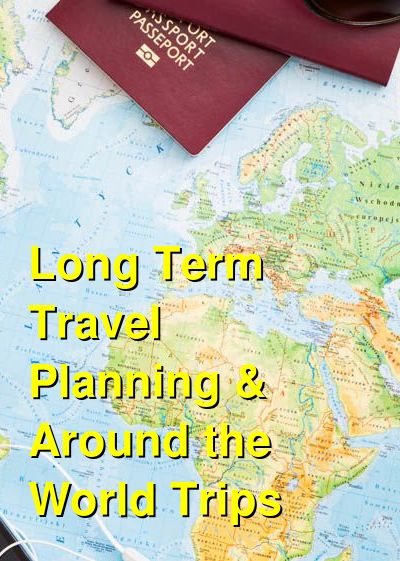
Some of the links on this website are sponsored or affiliate links which help to financially support this site. By clicking the link and making a purchase, we may receive a small commission, but this does not affect the price of your purchase.
- Privacy / Terms of Use
- Activities, Day Trips, Things To Do, and Excursions
- Beginner’s Guide
- Credit Cards
- CardMatch Increased Targeted Offers!
- Travel Rewards Cards
- Small Business Cards
- Hotel Cards
- Airline Cards
- Cash Back Cards
- Amazon Deals
- Amex Offers
- Bank Account Bonuses
- Gift Card & Spending Deals
- MtM Podcast (Travel/Points)
- MtM Vegas Podcast
- MtM Diamond Community
- The MtM Team

Get Started
Learn more about Credit Cards, Travel Programs, Deals, and more.
How To Plan Month+ Long Term Travel For Maximum Enjoyment
Enjoy MtM's content? Shop Amazon and we earn a commission!
Find all of the latest deals.
Learning how to plan long term travel can be very daunting.
But for me, planning a long stay in one place is more daunting than planning long-term travel! I love being on the move, exploring new places, and just generally not stopping.
When planning long-term travel, the main trick is not to plan too much.
Let’s take a look.
Table of Contents
Book Long Term Travel in Advance (But Not TOO Far in Advance)
When planning long travel, it’s a good idea to know at least generally where you want to go and what you want to do. This depends on how you’re going to be traveling, of course.
If you have one month and want to visit as many places as possible, you might want to consider booking everything in advance to make sure you get to see everything you want to.
But, I would strongly recommend against this…
You never know what you’re going to find when traveling. Or what you’ll learn on the way!
It’s a good idea to book the first few days, at least. Then just kind of… wing it once you’re there. Sounds scary, but I promise it’s not. If you’re looking at how to do long term travel for over a month or so, having everything planned takes away the excitement of it all. Plus, it means you have a plan you HAVE to stick to – unless you don’t mind losing those booking fees and deposits. Maybe you get to a city and HATE it – so you leave the next day, even though you planned to stay a week.
Sometimes, you fall in love with a place and end up staying one month there. Change happens, and that’s definitely something you should be prepared for when planning long-term travel.
You might even find out some new travel hacks that make booking things a lot easier and cheaper. Maybe you made some mistakes at the start that you don’t want to keep on making. Or you meet some cool people to hang out with and want to travel with them for a while, too!
Of course, you should also be mindful of where and when you’re traveling. If you’re traveling somewhere in peak season, or if there is an event going on – all accommodation or trains might be booked out.
For that, you’ll need to book things in advance!
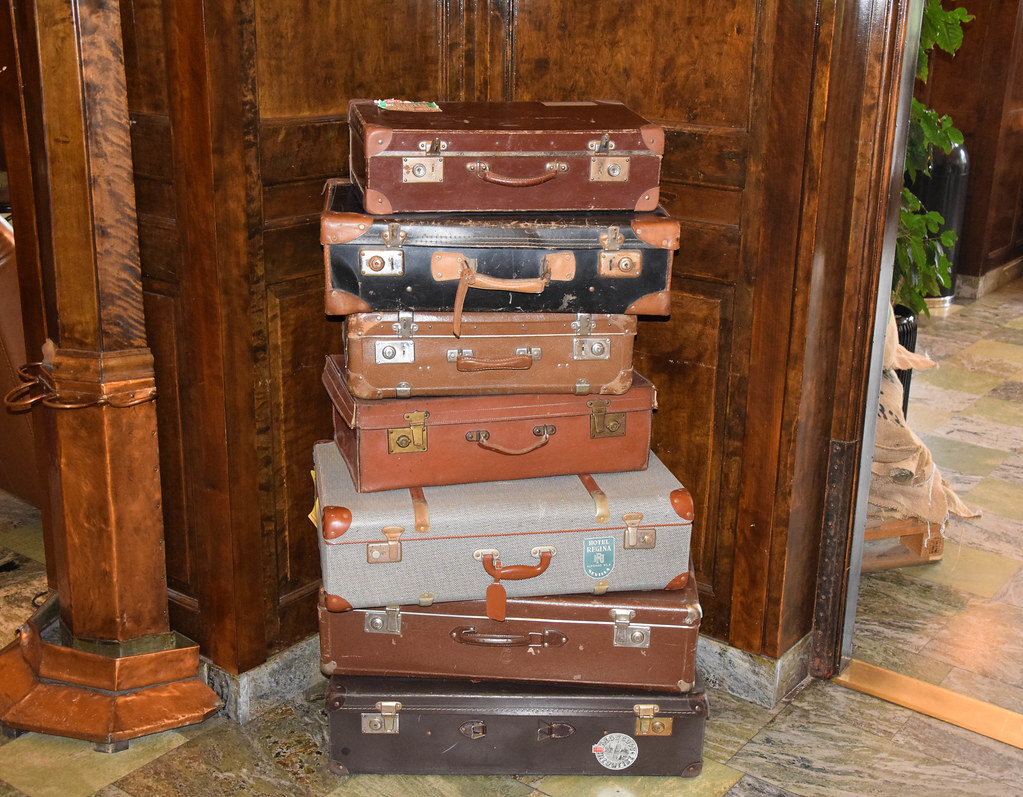
Do Without It
Release yourself from the burdens of possessions.
I promise you: you can live without them.
I’ve spoken about packing lightly before , but the basis of your packing should be the things you use in one week. If you pick up something to pack that you didn’t use in the past week, ask yourself, do you really need it? Of course, things like a first aid kit are necessary. But those extra shoes? Those accessories? That photo album?
If you can live without something for a week, you can generally live without it for much longer.
Be aware of packing for every occasion.
Traveling in winter, you’ll need a lot more than in summer. I’ve had trouble packing in summer because I can never fill my bag enough. Honestly, a few shorts and t-shirts, bikini and… that’s it? You might also want to pack at least one nice top or shirt, in case you want to dress up one evening!
We All Make Mistakes!
Just in terms of packing – and not even all the mistakes I’ve made… During my first backpacking trip, I brought about 5kgs of food and snacks with me. This was incredibly stupid, and to anyone thinking of bringing food with them on a trip: do so mindfully. Bring only light, small foods, and only do so if necessary! (More on this below).
On one of my last big, long term travel trips a couple of years ago, I planned to travel from Bangladesh and Bhutan down to India and then further down to Sri Lanka. The main problem here is the weather change. Combined with the fact that I tried to pack lightly with just one backpack, I of course was not prepared with coats and scarves for Bhutan’s cold climate and high altitudes. Most of my days in Bhutan were spent wearing… ALL my clothes. Layers upon layers.
I clearly hadn’t learned from my previous trip a few years ago, when I traveled over South East Asia to then go up to Hong Kong then onto Beijing and North Korea (my first trip there!). It had kind of slipped my mind that I was going to an area in North Korea that bordered Russia (i.e. very northern, very cold.) And when you travel through eternal summer in South East Asia, it’s easy to forget that things like coats exist.
Needless to say, I had to cave in and buy a coat whilst I was in Beijing.
This leads me to my next point…

Buy Things on The Way
But how do I fit ALL my things into my luggage for months?
If you’re traveling for a month or more, you most certainly don’t want to be taking everything around with you for that long. That’s depending on how and where you’re traveling, of course!
I find my packing – as well as general planning – is highly dependent on weather. You should consider if you’re crossing different climates and if you might need to buy a coat at some point in the trip. That’s fine! No one is judging. And maybe if you don’t need it anymore on your travels, you can give it to another traveler in need.
The same is true for pretty much anything else. Don’t bring all the shampoo and toothpaste you’ll need for a few months. You can buy shampoo and toothpaste pretty much anywhere! You definitely don’t want to be carrying two bottles of shampoo with you over a few months. So my best suggestion is to take your necessities and things you absolutely need, as well as things that you’ll need for the first couple of weeks. Then, if you need anything else, buy it as you go!
Preparation is Key…
Obviously, this takes some preparation, as you need to make sure that what you want to buy is available where you’re going. This is more for travel in remote areas. If you’re not traveling somewhere too remote, you could think about ordering something somewhere! Maybe ask your hotel or hostel a few cities away if they’re happy to accept a package for you, and then order it on Amazon. When you arrive, it’s there waiting for you.
This is also a great tip for those who decide they want to get something last minute, or if there is something they realized they should’ve taken. Really want a chest mount for your GoPro for a motorbike ride through Vietnam? If you’re not too worried, get it on the road.
Sell Things Along The Way
Worrying about having too many things to carry? Wondering what to do with an item a few months into your travel?
Anything you buy on the road you can also sell or giveaway. The traveler community is a tight-knit one. While traveling for more than a month, you will find that you’re all in the same boat. Maybe you bought a new book and finished it already, and you’re in search of your next one. There is bound to be someone in the hostel who will do a swap with you! Or alternatively, lots of hostels and hotels have a library where you can swap your book in for another.
Whilst we’re on the topic of books, though… I know reading a physical book is better. Everyone knows that. But honestly, buy yourself an E-Reader. Why carry 3 books, when you can carry 3,000?

Maintaining Relationships & Long Travel
How will you keep in touch with everyone? And not get jealous of everyone hanging out together at home?
This is such a big topic I cover it here . Nevertheless, it’s important to consider. If you’re planning long term travel travel, understand how your relationships may suffer… But today, there are so many ways that help you keep in touch with loved ones. If maintaining relationships is something keeping you from planning long term travel, try not to think about it too much. Or rather, try and think what you want the most. If you really want to travel, then those who truly love you will understand that, and maintaining the relationship shouldn’t be so difficult.
Those who can’t accept it might be some of the few who would slip away as time goes, anyway…
Entertaining Yourself on Long Travel
Long bus journeys, waiting at the airport, or in a place with not much to do? Travel is not a form of entertainment in itself. You will get bored of things…places… You will get tired of traveling.
Make sure to bring things with you that you like when you’re not traveling. Maybe it’s a book, a hand-held game console, or some movies you can download to your phone or laptop.
I personally love listening to podcasts! I make sure to download hours before a long trip – just in case the internet cuts out. It’s also so I can turn my phone onto flight mode and save battery.
Time For You
Travel is TIRING. Especially if you’re just doing travel 100% of the time. Actually, I wouldn’t recommend this! You need some rest days; otherwise, you’ll burn out. When planning long travel, make sure to plan some rest days, too – just like you would during any week of the year.
You need time to chill, to not move, and to just switch off and watch a trashy movie.

The worst thing to happen when traveling long-term is to run out of money. You can prevent this from happening, so don’t worry!
Always overestimate how much you’ll spend when planning long term travel budgets. If you overestimate everything, chances are you should end up with some money left over that can be used for emergencies.
Do some research on hotel prices, train tickets, and also prices on general items. A beer in London will set you back over $10, but in Germany it might just be $3.
Keep a journal or excel sheet of expenditures and how much you have left. ALWAYS, always leave yourself with enough for a plane ticket home. If you find yourself having to dip into this last resort supply – sorry, but it’s time to go home.
Will You Work?
A way to keep finances up whilst traveling is by working at the same time. You might want to consider this, too!
You could work remotely from a laptop, or you could consider working in some of the places you arrive at. You could work in the hostel or hotel, or part-time in a coffee shop or restaurant if you’re hoping to stay for a few months.
Make sure you do this legally, though, as many tourist visas don’t allow employment.

Long Term Travel – Other Considerations
OK. All the not-so-fun things, but things you need to consider when planning long term travel or planning a trip across multiple countries.
You’ve probably considered these things, but if not… Start researching and making your lists NOW.
- Passport Expiry Date (Expiring soon?!)
- Visas (On arrival, or get before?)
- Plug Sockets (Need your adapter?)
- Vaccinations (Do you need any to travel?)
- Language Learning (Do you need to learn a couple of phrases? Your hotel name?)
- Safety (Is it safe? Should you stay away from any place?)
- Currency (Do you need to order this in advance?)
- DOLLARS (Always carry them. Always. Crisp, clean notes that aren’t more than 5 years old. A surprising amount of countries accept them , and some require them for visas upon arrival.)
- Border Crossings (Can you cross at the land border?)
- Flight Availability (You don’t need to buy, but you could check how frequent flights are.)
- Other Entry Requirements / Restrictions
As I’ll always repeat: it should be fun.
Long term travel is full of ups and downs. Ride the ups, and ride those downs too!
Lower Spend - Chase Ink Business Preferred ® 100K!

Learn more about this card and its features!
- long term travel
- travel planning
Responses are not provided or commissioned by the bank advertiser. Responses have not been reviewed, approved or otherwise endorsed by the bank advertiser. It is not the bank advertiser's responsibility to ensure all posts and/or questions are answered.
[…] Read more @ milestomemories.com […]
LEAVE A REPLY Cancel reply
Save my name, email, and website in this browser for the next time I comment.
My Insane Walt Disney World Trip Strategy & How I Saved Thousands Thanks to Miles & Points!
Canceled flights & incredible memories: taking our family of 6 to scandinavia on points & miles: a full breakdown & how we recovered, beautiful scenery, exciting history & a burglary: our 5 euro swedish campervan adventure, is luxembourg the most underrated country in europe.

At Miles to Memories we share the best tips, tricks and deals plus travel rants, musings, hotel, airline and loyalty program reviews and a lot more! Our goal is to help people save money so they can get out there and travel the world! Through our various blog posts , podcasts & videos we teach others how to maximize loyalty rewards, hotel & airline programs and credit cards to achieve amazing things.
- Terms Of Use
- Privacy Policy
- Advertiser Disclosure
Disclaimer - Miles to Memories & the author are not credit providers and do not provide personal financial or professional advice or credit assistance. The information published on this site/page is of a general nature only and does not consider your personal objectives, financial situation or particular needs. All information published here is personal opinion and comes from personal experience. The information published on this site/page should not be relied upon as a substitute for personal financial or professional advice. ESR Media, LLC, Miles to Memories and the author strongly recommend that you seek independent advice before you apply for any product or service, which is described on the site/page. Editorial Note - Opinions expressed here are the author's alone, not those of any partner bank, credit card issuer, hotel, airline, or other partner. This content has not been reviewed, approved or otherwise endorsed by any of the entities included within the post.
- Work With Us
How to Prepare for a Long Trip
Written by Dan
Updated on April 15th, 2024

How do you prepare for a long trip abroad? Here's a list of things to do before long-term travel, including long-term travel preparation and how to prepare to travel the world for several months.
This article may contain affiliate links. We earn a small commissions when you purchase via those links — and it's free for you. It's only us (Becca & Dan) working on this website, so we value your support! Read our privacy policy and learn more about us .
Table of contents
- Selling everything and traveling for a year
- Travel with an organized remote work and travel program
- Rent on Airbnb
- Stay in a hostel
- Find a roommate from Facebook or other expat groups
- How do you do laundry when you travel?
- What if I need something specific while I’m in a new country or city?
- Get some AirTags to protect against lost valuables
- Set up travel insurance for traveling abroad
- Using Google Fi for your international phone plan
- Get set up with a bank that reimburse foreign ATM and transaction fees
- Get a credit card with no foreign transaction fees
- Create a travel first aid kit with products you trust
Fun fact: I’ve sold all my things and moved across the world to travel long-term, more than once.
I’ve packed up and left NYC twice, to travel the world and work remotely , and after traveling long-term both times, I came back!
In these experiences, I’ve learned a lot about selling the things that aren’t important, what to know before taking a long trip, traveling full-time and everything that is involved in preparing for a long trip.
I’m happy to share my knowledge and experience, because preparing for long-term travel and leaving everything at home sure doesn’t happen overnight. Here’s my step-by-step guide for a checklist for long-term travel.
First steps: What to do with your house or apartment before traveling
Figuring out what to do with your house or apartment can be tricky. It’s really different for every person, and depends on if you rent or own, and the duration of your upcoming trip.
The variables to consider are:
- How long is the trip?
- Do you rent or own your apartment or house?
- Are you planning on storing your stuff somewhere, or selling everything?
I won’t get into too many specifics about how to handle every variable, but I can go into detail about the two times that I sold everything to travel, while moving in (and then back to) New York City.
Selling everything and traveling for a year
This was a straightforward process for me, the first time. I was moving out of an apartment at the same time that I was expected to leave for my trip.
I was living with roommates, at the time, so I helped get a person to take over the lease of my room, getting someone that everyone else would get along with. I asked my roommates if they would like to buy any of my furniture.
One roommate bought my mattress. Then, I listed everything else on Craigslist, some of the best websites for selling your stuff online .
I held on to a few things that were important to me, like small keepsakes and art. Luckily, my family lives close by, outside Philly, so I was able to store a few small boxes with my parents.
In a slightly different situation, when I was living with Becca, we did a similar process together. Except, her parents (thanks, Becca’s parents!) stored some of our larger items, like a bed, two bar stools and all of our 16 plants.
We still sold most replaceable items, like four bookcases, my desk, our other bar stools, rugs and my desk chair.
We also chose to downsize, rather than throwing things out.
We gave away around six bags of clothing to a weekly clothing drive that we found out was a pop-up on Thursdays, half a block from our apartment.
This time was different because our lease didn’t quite end at the same time of when we wanted to leave to travel.
We found a close friend that was able to sublet our apartment for six weeks while we traveled for the first three months, until the lease ended.
This worked out great because we could keep most of our things in the apartment for her to use. We also knew we’d be back to do the actual move-out.
We adore our old neighborhood, Brooklyn Heights, and if you’re in NYC, we have a list of local tips and secrets for seeing this beautiful neighborhood.
When we came back to the apartment to officially move out, we knew that what we had left in the apartment wasn’t important to us, but, a lot of it went into storage at Becca’s parents’ house.
We were able to determine that some of it wasn’t stuff we missed, because we traveled for three months in Europe without all of those things!
Because of that, it was easier to part with some extra kitchen items, clothes that we weren’t wearing and other random house stuff.
The funny thing about stuff is that after it’s gone, you kind of don’t miss it.
For you, if you own your house or apartment, you can rent it out for long periods of time with no issues. I know people who’ve done this.
I’d suggest against doing several short-term rentals, like Airbnb for homes, as they can become risky and can be a lot to manage over a long period of time with all the cleaning in between guests and whatnot.

Planning for your trip: Where will you stay while you’re away?
After you’ve figured out what to do with your home, you can now move on to planning where to live while you’re away.
It’s a similar process of comparing your options for accommodation while traveling short-term, but with a few more kickers.
Depending on your situation, you may have long-term accommodations set up for you. If that’s the case, feel free to skip ahead.
Assuming that you don’t know where you’re going to live yet, don’t worry. There are a few tricks that I want to share about how to set up long-term accommodations.
Travel with an organized remote work and travel program
I’ve been on two segments of a trip with Remote Year .
It’s a great way to travel away for a while, while working remotely on your job (if you can do this) and to go with the flow, rather than doing all the logistical accommodation, flight and coworking space stress on your own.
With Remote Year, they’ll set you up with an apartment for the month. They’ll do everything from transportation to and from the airport, to apartment maintenance. Easy.
During my travels with Remote Year, I’ve had electrical issues, water issues and even a small fire [that did not start, yet one that I put out, and saved everyone]!
Remote Year (or the local apartment staff) has helped to make sure everything was safe and up to satisfying living standards.

Rent on Airbnb
When Becca and I were in Taipei, Taiwan for almost a month, we decided to rent an apartment through Airbnb.
We found that the apartments were relatively expensive in the neighborhood where we wanted to stay because it was centrally-located and close to all sorts of MRT stations.
Because we were going to be long-term guests for the Airbnb property owner, we knew that we had some wiggle room in negotiating a price.
For the owner, it’s expensive and time-consuming to turn over an apartment for lots of guests through lots of weeks.
If you, as the traveler, are able to stay in a place for a few weeks, it’s much more favorable for the owner.
Interested in saving money during your trip ?
Check this out: we sent a few messages to a few properties and told them our situation. We said that we’re coming in for a few weeks and asked if they were able to provide a special offer and discount for the long-term stay.
We got a few offers and ended up with a newer listing for almost 40% off the listed price.
This included the 12-20% discount that some owners offer for guests who stay more than two weeks. If you hunt around, you’ll also see that owners sometimes discount for stays of four weeks or longer, and some even discount if you book far in advance, like three months before your trip.
Want $50 off your first Airbnb? Sign up with this link and get an immediate credit on your first booking.

Stay in a hostel
Sometimes hostels have private rooms that seem more like apartments.
When we were in Mexico City, we stayed at the Selina Mexico City Hostel in the downtown neighborhood of Centro Historico.
This was a unique experience because our room was more like a studio apartment, but without a kitchen. It had its own bathroom and plenty of space for us, even a couch, a desk, an entrance area and a closet with shelves.
There was a shared kitchen down the hall on another floor that was different from the regular hostel kitchen because it was for studio apartment guests only.
It was tons (and I really mean tons) cleaner, had a locked door with a code and it was safe to leave our groceries in the fridge even without our names on them.
This was important for us, because you probably know by now how much we love cooking, to stay healthy while on the road .
We met several people that were living in Selina Mexico City for several months.
It’s a little more expensive than a regular apartment, but had so many more accommodation types available. Also, it came furnished, so to speak… so that comes at a premium.

Find a roommate from Facebook or other expat groups
Lastly, you can find a roommate or someone renting an apartment through local connections.
If you’re going to be living in a new city for long-term, join a few expat groups in the area. For example, we’re familiar with Medellin and we know that the expat and community for digital nomads there is very strong.
There are several Facebook groups and meetups that you can find and attend, and you’re bound to meet new like-minded people.
Another example is that our friends Cyd and Marc are currently living in Hanoi as expats.
They later told us that our friend Sean, who we know through the Remote Year network, was living with them for a bit during his digital nomad lifestyle month in Hanoi. Isn’t it a small world?
You can always rent an Airbnb or stay in a hostel private room for a few weeks to get to know the city.
During that time, you can meet local people that are looking to fill a room in an apartment elsewhere.
How to meet people in a new city when you’re traveling
So you’ve relocated to a new city and now you’re sitting alone in your room on a Friday night and don’t know what to do.
I’ve for sure done this when I’ve traveled solo or didn’t know too many people in a new city.
When you are planning on taking a new trip, you’re basically moving to a new city for as long as you plan to stay there.
So, whatever you would normally do to meet people in a new city applies for travel, as well.
You can join meetup groups, like a fitness group or a meetup for another shared interest, such as art, reading, history, culture, hiking and more.
You can reach out to your existing network and see if any of your friends have a local or expat connection to someone in your new city. You can join a coworking space and see if there are any events. The ideas are endless, and will be different depending on where you find yourself.
If you plan to be working remotely during your travels, we have a few suggestions for networking and meeting other professionals that you can check out.
How to pack for a long trip
Like most things in this article, everyone has a different situation and different style of travel. I’ll speak to my personal style and hopefully some (or all) of this will also apply to you.
I believe that if you want to pack for a year, you need the same amount of things that you’d pack for a week. You can get by with a few of your favorite shirts and extra pair of versatile travel pants .
If you have space in your new destination, you can always pick up some locally-purchased clothes. You can also ‘dump’ belongings along the way, to lighten your load. You can sell stuff online, if any of these tips for selling your stuff online may work for you.
It’s all part of the minimalist travel mindset .
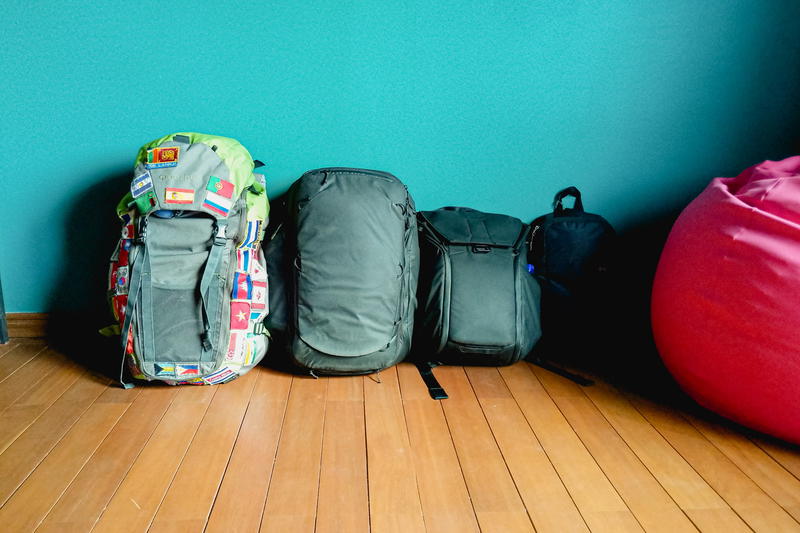
Buying local is not only a sustainable travel practice , but also supports the local economy and also makes you fit in a bit more with the local culture.
For example, locals in warm-weather countries usually wear pants all the time, and it’s only the travelers, expats and backpackers who wear shorts every single day.
If you want to start doing the local thing, look out for what locals do. That includes having a heavy-duty jacket like a winter parka if winters get cold and windy where you are headed.
How do you do laundry when you travel?
What I realized is when I’m home, I do laundry about once a week. This means that I only need about a week’s worth of clothes.
I don’t have to worry about packing 20 T-shirts and 30 pairs of underwear (even though Becca wishes she could).
You can get by with much less.
Also, isn’t it fun to try to figure out laundry machines in other countries? And also fun to see how people dry clothes all over the world? At Nine Coliving , we hung the laundry out to dry on long clotheslines on the beautiful rooftop that had a view of the town and the volcanic islands.
In Taipei , our washer turned into a dryer, but it took around an hour, and we chose to hang-dry anything that wouldn’t dry naturally in the super-humid climate.

What if I need something specific while I’m in a new country or city?
I thought that I needed to bring everything that I could think of when I left the US to take a long trip.
What I didn’t realize is that there is an entire city, somewhere else, of people that probably need the same thing. For example, if you break a phone charging cable, you can find the local version at a local market.
Unless you are traveling with medication that you can’t get anywhere, I’d think that there’s nothing that you can’t find wherever you’re going to be living long term (that is, unless you’re very particular about brands or if you have super-specific needs like name-brand whey protein or something…I’ve seen people ask about that).
Get some AirTags to protect against lost valuables
We got ourselves some Apple AirTags to bring along on our trips. AirTags can be placed on your checked luggage, backpack, laptop or even your wallet, to help be able to location-track these items if they become lost, stolen or just misplaced.

We’ve seen a lot of travelers invest in AirTags as a way of having peace of mind during long-term travel, and we’ve even seen how they work out (see our safety guide for Mexico City for the full story).
What to set up at home before traveling long-term
Set up travel insurance for traveling abroad.
Becca and I use World Nomads travel insurance to insure us on our international trips.
We’ve also heard great things about SafetyWing . Depending on your age, length of trip, destinations and a few other factors, World Nomads will give you a quote and you can choose to proceed with getting reliable travel insurance.
World Nomads will help insure things like delayed baggage, emergency medical expenses overseas, flight cancellations due to severe weather and hospitalization abroad.
If you’re a scuba diver, there are also specific insurance plans for diving. Our friends Alex and Ryan chose this add-on. You can ask them how it’s going!
We initially signed up with World Nomads based on a recommendation from a friend.
The rates are reasonable and we’ve heard that World Nomads are responsive if you ever have to make a claim. We haven’t had to make a claim yet, but we feel at ease knowing that if anything were to happen, we are covered.
Using Google Fi for your international phone plan
I use Google Fi and have data usage all over the world. You can now bring most phones to Google Fi!
Check to see if your phone is supported to get all of the amazing benefits.
I like Google Fi because it’s flexible and affordable, and it even works in places that many people would consider to be off-the-beaten-path countries . It’s about 25 USD for a phone and text plan and 10 USD per GB that we use.
Most of the time, I’m on WiFi in a coworking space and we don’t end up using that much data.
Local SIM cards are almost always cheaper. I like to have Google Fi to help navigate a new destination for a few days.
I’ll switch to a local SIM if I know that I’m going to be using a lot of data.
When Becca and I were in Taipei, we got a local SIM and tethered off of it to do work in our Airbnb because the WiFi was a little slow at times.
This goes along with a general recommendation of researching WiFi speeds, one of our best tips for remote work during travel.

Get set up with a bank that reimburse foreign ATM and transaction fees
You’ll want to take out cash, obviously, but might not want to always pay the ATM fees that go along with taking our money. It’s the worst when you have to take our large amounts of money because you’re trying to justify the fee for the ATM.
I use checking accounts from Fidelity and Charles Schwab bank. They both offer excellent checking accounts that reimburse all ATM fees domestically and internationally.
It’s been a lifesaver to pull out the equivalent of 10 USD to pay for a cab or something here and there without having to pay 3 USD in ATM fees.
See more about our recommendations for traveling with money when you’re ready to take your next trip.
Get a credit card with no foreign transaction fees
We often get asked about our moey advice for trips abroad .
For credit cards, I use the United Explorer card , which doesn’t have any foreign transaction fees. It also has a nice sign-up bonus, Global Entry reimbursement and many more great benefits.
We typically like using credit as much as we can while we’re away. We’ve found that we get the best conversion rates and don’t need to take out too much cash if we’re using credit often.
Typically, the best credit cards for getting no transaction fees might be travel credit cards that come with a fee. But, in exchange for that fee, you’re probably going to get nice benefits like 3x points or miles on travel purchases and things like that! You can see more in our guide about travel hacking with travel credit cards .
If you use a point of sale machine, make sure to use their local currency. Let your bank do the conversion and not the point of sale device!
Create a travel first aid kit with products you trust
As much as Becca and I try to not get sick while we travel, it happens. We even wrote this list of tips for avoiding being sick while traveling .
When we go away for a while, we share a travel first aid kit that has a few trusty items from home: Band-Aids, travel packets of Advil tablets, a travel-sized Neosporin, travel-sized Vaseline, a small bottle of travel illness pills and some sheets of Benadryl/antihistamines.
These things have come in very handy, especially if we’re traveling in a place where pharmacies are closed on Sundays, for example.
It’s also good to have products you know and trust in case you cannot read the language in the country where you’re traveling. Our travel-sized first aid kit has gotten us pretty far.
As a bonus tip, you can bulk up your emergency travel kit while you’re abroad. Did you know that lots of medications are tons cheaper outside the US?
Maybe you’ve realized this by now, but in case you haven’t, try grabbing antihistamines, antidiarrheals or other types of medications that are sold by local pharmacies in different parts of the world and you’ll see how affordable the prices are.
Your travel-sized health kit should only take up the size of two decks of playing cards. If it’s any bigger, it will start to feel in the way.
Remember that you can usually get help to buy medicine while you’re abroad, but in case you’re in a remote location like on a hike, take enough with you so that you’re set and not regretting bringing more medication along.
If you’re looking for more specific travel gear suggestions, make sure to check out our list of the best travel accessories to see what we use on all our trips.
You may also like
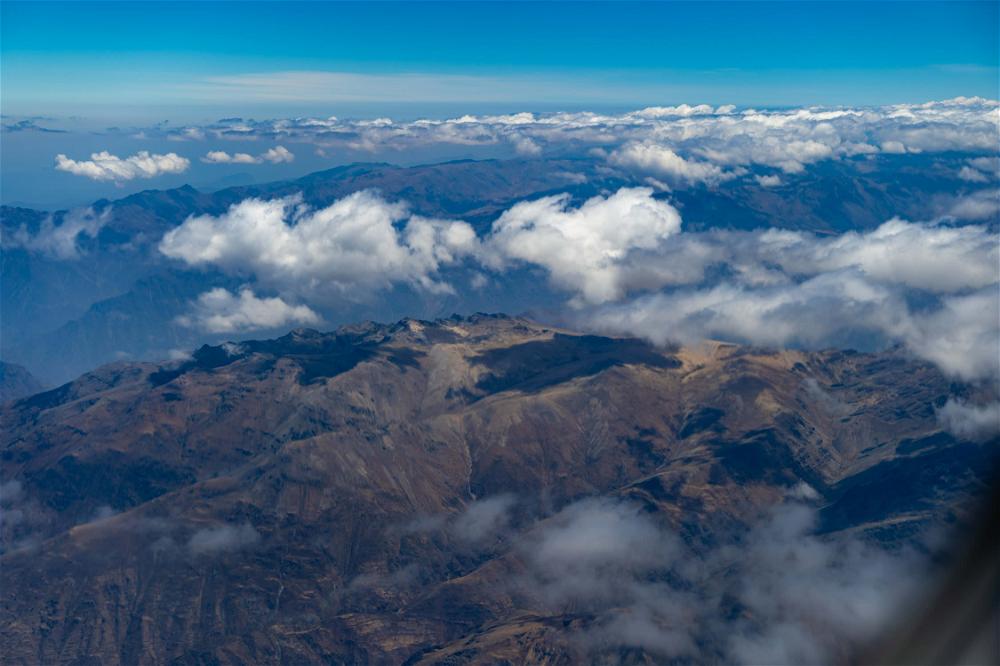
20 Off-the-Beaten Path Travel Destination Ideas (Best Time to Go)
If you're like us, you're looking for the best new and alternative travel destinations for experienced and seasoned travelers. See our list of where to travel in 2024 for travelers who seek a challenge.

15 Tricks for How to Avoid Getting Sick While Traveling
How do you not get sick while you’re on vacation or on a trip? Use these recommended tips and tricks to avoid falling ill while traveling in another country.
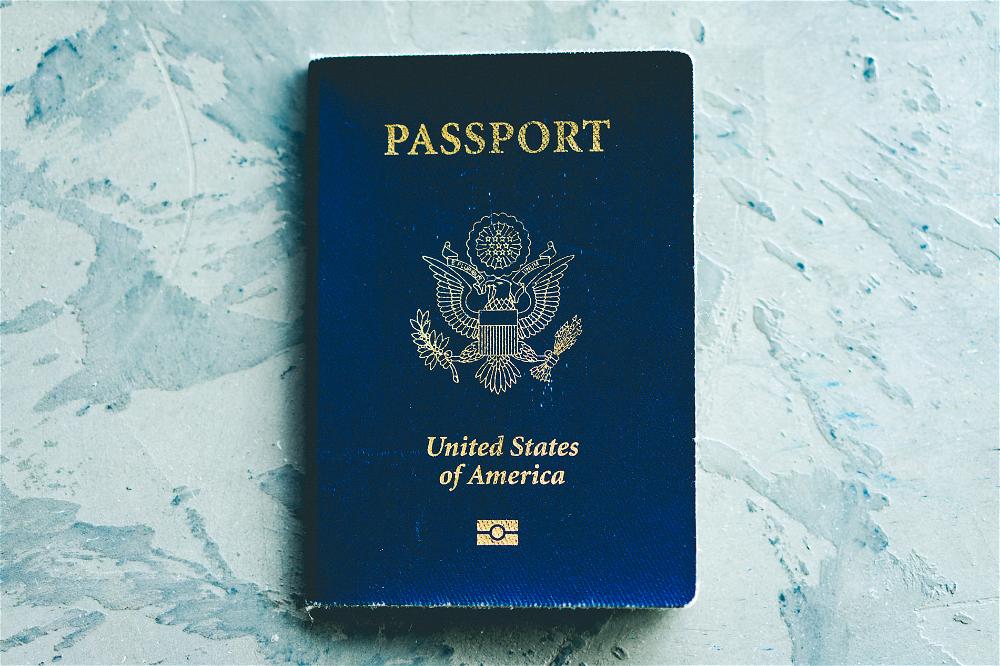
How to Know If You Need an International Travel Visa
How do you know if you need a visa to travel to another country? Getting visas can be one of the challenges of international travel. Our how-to guide will show you a few steps to determine if you need a visa for your trip.

How to Avoid Pickpockets When Traveling (22 Tips)
Avoid pickpockets on your next trip with my best tips for keeping valuables safe. Use these tricks and hacks to ward off thieves while traveling!

What Is a Babymoon & Best Tips for Planning Yours
What is a babymoon, why should you go on one, and when should you take a babymoon? See my babymoon trip tips for for couples taking babymoons before a new baby!

18 Tips to Survive a Long-Distance Relationship (Make it Work)
Looking for ways to survive long distance relationships while traveling? Whether you're traveling as a digital nomad or studying abroad, use these tips to make your long distance relationship last.

Privet ! We’re Becca & Dan.
We created this blog to share some of the knowledge and experience that we have around travel , remote work , photography and beyond!
We're currently going grocery shopping.
Join the club
You’ll get emails with our latest articles, tips, advice and so much more! You won't find this content anywhere else!
This website may contain affiliate links. We earn a small commissions when you purchase via those links — and it's free for you. It's only us (Becca & Dan) working on this website, so we value your support! Read our privacy policy and learn more about us .
Among other programs, Half Half Travel is a participant in the Amazon Services LLC Associates Program, an affiliate advertising program designed to provide a means for us to earn fees by linking to Amazon.com and affiliated sites.

- Saving Money & Budgeting
- Packing & Travel Gear
- Accommodations
- Transportation
- Safety Tips
- Long Term Travel
- South Africa
- Philippines
- Puerto Rico
- Czech Republic
- Israel and Palestine
- Mississippi
- North Carolina
- South Carolina
- New Zealand
- Travel Resources
- Must-Have Items
- Travel Inspo Books
- Why The Cure for Curiosity?

Long Term Travel: What it is & how to do it
Julia November 3, 2023 Plan a Trip 2 Comments
Learn all about long term travel, from what it really means to how you can give it a try!
If you’ve dreamed of traveling around the world for weeks, months, or even years on end, you’re not alone. I was one of these dreamers who turned my long term travel dreams into a reality. And I highly recommend if you’re thinking about it, you should work towards it and give it a try.
Long term travel is a unique experience that will really help give you a new perspective on life. Not to mention, you may regret it if you don’t give it a try to see if its for you!
Disclosure: Some of the links below may be affiliate links. At no additional cost to you, I may earn a small commission if you make a purchase.
Table of Contents
What is Long Term Travel?
Long term travel refers to an extended period of time spent away from one’s usual place of residence for the purpose of exploration, relaxation, adventure, or any other personal or professional goal.
While there is no strict definition for how long “long-term” travel should be, it typically involves travel durations that extend beyond the typical vacation or short-term trip. This means, it can range from a few weeks to several months or even years.
Long term travel is unique in that it allows you to truly immerse yourself in new cultures and environments without the deadline to return home looming. This allows you to get to know and understand different places and people deeper than you might with just a week or two away.
That being said, long-term travel requires careful planning and consideration of factors such as finances, accommodations, visas, and health insurance. While it can be a transformative experience, providing opportunities for personal growth, cultural immersion, and building lasting memories, it’s also not easy.
It comes with challenges like homesickness, logistical issues, and financial constraints. You will have to become savvy to address and manage all the challenges encountered throughout your epic journey.

Common Types of Long Term Travel
There are many ways to travel for a long period of time. From gap years to being a digital nomad and beyond, there’s no limitation to the age or lifestyle you need to lead when you give long term travel a try!
1. Gap Year
One of the most commonly known types of long-term travel is the famous Gap Year. A Gap Year is when students or young adults take a year between high school and college or after graduation to travel for an extended period.
During this time, they may explore new countries, volunteer, work abroad, or engage in other personal growth experiences. It’s a great way for young adults to establish their independence and get to know a bit more about the world and what they want out of life.
2. Sabbatical
A less common type of long term travel – at least in the United States – is the sabbatical. A sabbatical is when a working professional takes an extended leave of absence from their job to travel and recharge.
A sabbatical can last from a few months to a year or more, depending on the individual’s goals and circumstances. Personally, I enjoyed taking a sabbatical because I had the finances to travel and it recharged me from the day-to-day grind of work.
Some places around the world even build sabbaticals into their work culture. In some cases, corporations even buy into the idea, and you take a break from work but hold on to your job. This is ideal because you know there is a job and income when you’re done traveling!
3. Digital Nomadism
A more recent trend has been the rise of digital nomadism. Digital nomads are people who work remotely while traveling continuously or for extended periods. They leverage technology, like Wi-Fi, co-working spaces, and coffee shops to manage their careers while exploring different locations around the world.
I have given this a try and it’s a great option for those who have flexibility in their work. It’s particularly common with freelancers and consultants who are able to be location independent for their jobs.
4. Retirement Travel
How many times have you heard “I’ll travel more when I retire.”? I know I’ve heard it a lot. Retirement travel refers to retirees who embark on long term adventures after their working years have ended.
This could be by RV, cruise ship, road trips, etc. but they typically explore destinations they’ve always dreamed of visiting but never had the time and money to do so. One of the best parts of traveling when retired is that you can enjoy a leisurely pace of travel with no guilt!
5. World Travelers
Some individuals or couples make long term travel a lifestyle. This is when you continuously move from one destination to another. Sometimes this comes with the goal to visit as many countries or to see as much of the world as possible.
For many, world travel is accompanied with small jobs found along the way. This often looks like working at hostels, farming, teaching a language, or even just waitressing or ice cream shops for a small income along the journey. It helps travelers sustain the cost of living on the road without a full-time job.
My Long Term Travel Experiences
As a travel addict, which must be obvious in this travel blog, you may not know that I’ve spent years on years without a home base, traveling around the world and around the United States.
Two specific instances that made the most impact on my life are when I took a year+ off of work to travel around the world (this is what inspired the start of the Cure for Curiosity !) and when I hit the road for a year and a half with my remote job…before remote work was popularized during Covid!
Let me tell you a little about both of these instances and then we can dive into how you can handle the most common challenges and questions about long term travel!
Travel around the World Sabbatical from Work (2015 – 2016)
I did the unthinkable. I quit a perfectly good corporate 8am – 5pm corporate marketing job to travel around the world. During the 13 months I was on the road, I traveled on a budget to Europe, Northern Africa, the Middle East, Asia, and Oceania.
It was a wild ride living in hostels and hotels taking every mode of transportation under the sun from planes and trains to motorbikes, boats, and even camels. Honestly, it was a dream come true, but it was not without its challenges.
Here are some helpful pieces based on that time in my life:
- Quitting Your Job to Travel: Is it a good idea or not?
- The True Cost of Travel: How much does it cost to travel the world?
- 5 Months of Travel by the Numbers
- 5 Months of Travel in Europe, the Middle East, and North Africa
Digital Nomad while Working Full Time (2017 – 2018)
My next long term travel adventure looked a bit different. I decided to give up my apartment, while working full time, to road trip across the United States and Canada for a year and a half.
This meant finding stable internet and quiet places to work were top of mind, while budget travel was not as important. It enabled me the freedom and flexibility to see more of my own country and travel slower.
Thinking of taking a long road trip? Here’s some helpful resources based on what I learned during my cross-country 18 month road trip!
- How to Plan a Road Trip: A Step-by-Step Guide
- 80+ Good Road Trip Snacks: The Key to Any Successful Road Trip!
- Road Trip Packing List for Expert Travelers: 60 Road Trip Essentials + More Tips!

FAQs about Long Term Travel
Traveling for a year or even just a month can be complicated. Here are some frequently asked questions about the ins and outs of traveling for a long period of time.
How much money do I need for long term travel?
Long term travel budgets vary widely. Your expenses will depend on factors like your destinations, travel style, and personal preferences. You’ll also have to factor in the cost of any expenses back home, like mortgage/rent, car insurance/payments, etc.
To determine your budget, make a list of expected expenses, including accommodation, food, transportation, activities, visas, insurance, and a cushion for unexpected costs. Research destination specific costs and create a financial plan accordingly. Alternatively, you can also just wing it and travel until your budget runs out.
Want more specifics about budgeting for long term travel? Budgeting 101: Learn How to Create a Budget in Just 5 Simple Steps
What about health insurance and medical care while traveling long term?
Health insurance is crucial when traveling long term. Research travel insurance policies that offer comprehensive coverage, including emergency medical expenses, evacuation, and trip interruption coverage.
Ensure that the policy covers the countries you plan to visit. Additionally, carry copies of important medical documents and prescriptions for any necessary medications. I personally travel with World Nomads , although I never needed to make a claim.
Do I need a passport and visas for long term travel?
If you’re traveling internationally, you’ll definitely need a passport. However, your visa requirements depend entirely on your nationality and the countries you plan to visit. You’ll need to research visa regulations for each destination and apply well in advance if required. An easy way to do it is using a service like iVisa .
Make sure to always keep track of visa expiration dates and renewals to avoid legal issues while traveling. One that many don’t think about is the Schengen territory in Europe … there’s a limit there too! I personally used 90 out of 90 days on my Schengen stay and then had to hop over to Morocco to avoid legal concerns.
How can I manage my finances while traveling long term?
Managing finances on the road requires careful planning. Depending how long you’re traveling for, you may want to open a bank account with low foreign ATM fees or a credit card with no international transaction fee to minimize unnecessary fees.
Also, make sure to notify your bank of your travel plans to avoid card issues and carry multiple forms of payment (cash, credit cards, debit cards) to avoid being stranded without money. This is especially useful in case of fraud or theft! You can also use budgeting apps, like Empower , or a spreadsheet to track your travel expenses.
What should I pack for long term travel?
Packing efficiently is essential, and you’ll thank yourself every time you have to move to a new city or accommodation. Make sure to pack versatile clothing suitable for various climates, quick-drying and lightweight materials, and don’t forget essential documents like passports, visas, and travel insurance.
Remember to also pack appropriate power adapters, toiletries, and any specialized gear needed for your planned activities. My long term packing list includes everything I took with me on the road and is a super helpful place to start.
Additionally, I’m an avid carry-on user. In fact, I hate checking luggage. Between the chance of lost luggage, theft, or simply delays, I’m carrying it on! As such, I have managed to travel for 13+ months out of 1 carry-on backpack. I highly recommend you give it a shot!
Want to learn how? Check out this post: How to Pack in a Carry On – No Matter the Trip Length
How can I stay safe while traveling long term?
Safety should be a top priority at home and on the road. It never hurts to check advisories for your destinations as well as identifying and avoiding risky areas. I find asking your accommodation for areas to avoid is super helpful as they know the area best!
Additionally, always stay aware of your surroundings. Secure your belongings. Use reputable transportation services. Let someone know your whereabouts. Carry photocopies of important documents and consider investing in a money belt or hidden pouch.
There’s endless tips for staying safe while traveling – check out my 35 top travel safety tips .
How do I find places to stay for long term travel?
Accommodation options vary widely. Couchsurfing , hostels , and guesthouses are budget-friendly choices, while vacation rentals and long-term apartment rentals, like on VRBO , offer more privacy. If you want to think a bit outside the box, you can also consider housesitting through sites, like Trusted Housesitters .
I personally always check Booking.com for accommodations so that I can read reviews to find hotels, hostels, or even rental properties that fit my budget and preferences.
What should I do about my job or career during long term travel?
If you plan to work while traveling, discuss options with your employer, such as remote work or sabbaticals. If you freelance, ensure you have a reliable internet connection and backup plans. You can also explore job opportunities abroad if you’re open to working while traveling.
While working and traveling is not always the easiest route (versus saving up and taking time off to travel), it can allow you to stay on the road longer. This makes it common to find long term travelers working at hostels or a local farm for a few weeks at a time.
How can I stay connected with family and friends during long term travel?
Staying in touch is essential. Fortunately, today it is so much easier than it was just a few years ago. You can purchase international SIM cards or phone plans which include international cell service.
Alternatively, you can depend on messaging apps with internet access. I personally love WhatsApp and Facebook Messenger, but I have also tried Telegram and Viber.
Another way that I kept my family informed of where I was and how to find me was a shared Google Doc that kept all of my daily travel confirmations and reservations. I updated it as I went and then my family could pull it up anytime to find out exactly where I was. Similarly, if you have cell reception, you can share your location! Did I mention technology has made it easier?!
What if I get homesick or face challenges on the road?
Homesickness and challenges are natural during long term travel. In fact, it’s actually accounted for in one of the stages of Culture Shock ! To help you keep your feelings in check, make sure to maintain a support system through social media, travel forums, or local expat groups or learn to make friends on the road .
Also, practice self-care, take breaks when needed, and remember that overcoming challenges is part of the adventure. Not every day will be perfect, but it will be worth it. Besides, you’ll learn new ways to think on your feet and address challenges as they arise. It’s a growth opportunity for sure!
What is the best way to plan an itinerary for long term travel?
One of the biggest questions… where to go during long term travel. There are so many amazing places in the world, where do you even start? It really all comes down to – where do you want to go?
Planning an itinerary should involve a balance between structured plans and spontaneous exploration. You can use online resources, guidebooks, and travel forums to research destinations, create a rough itinerary, and leave room for flexibility.
I personally had a starting destination (Norway) and then a few key dates I was meeting people in various places, like Poland and New Zealand. This gave me some structure to follow but loads of flexibility on where to go in-between.
One of the best ways to plan your itinerary is to ask other travelers what their favorite places are and to then ask locals for recommendations once you arrive.
How can I handle language barriers while traveling?
Going someplace you don’t speak the language can be scary. How will you communicate? Fortunately, there are many ways to communicate – believe it or not!
One best practice is to learn a few basic phrases in the local language. It will be immensely helpful and appreciated by locals. You can also use translation apps for deeper communication.
Also, if you’re reading this in English, you’re already in luck. English is often widely spoken in tourist areas. That being said, don’t rely on that alone. Knowing a bit of the local language can enhance your travel experience and build rapport with the locals. You’ll be able to get around with ease!
When in doubt, charades and emojis can be your best friends. Lost in China trying to get to the Panda Research Center ? No worries. I literally pulled out my phone and used 3 emojis: Bus, arrow, panda. And the first person I approached was able to point me in the right direction. Use your creativity!
How can I stay organized during long term travel?
In some ways, organization on the road is simple. You have your luggage, which doesn’t change much, and your documents, which can be stored online.
The best option is to create digital backups of important documents, keep travel itineraries and reservations in one place, and use travel apps to track expenses and stay on top of travel details. With everything being online, you can regularly review your plans and update them as needed.

What are the long term effects of travel on my life and career?
One of the biggest things that held me back from taking the plunge into quitting my job to travel was the fear of returning and finding another job. As it so happened, it was not something I should have been so worried about.
Long term travel leads to personal growth, increased adaptability, and a broader perspective on life and career goals. Consider how the experiences and skills gained during your journey align with your future plans and aspirations, and use them to your advantage in your career or personal life.
In all of the interviews after my around the world travel for 13 months I was asked about my trip in a positive light. “What did you learn from it?” types of questions. Trust me… it will pique their interest!
Do you have additional questions about long term travel? Put them in the comments and I’ll respond!
Helpful Resources for Long Term Travel
There’s no one-size-fits-all resources for long term travel as everyone is different as are what they want out of their travels, budgets, and interests. That being said, I have pursued many types of travel over the years and highly encourage you, if you’re thinking about it, to take the plunge. It’s incredibly rewarding.
Here are some additional helpful resources.
- 10 Secrets about Traveling Long Term that No One Tells You
- Master Long Term Travel Packing List for Your Next Big Adventure
- How to Pack in a Carry On – No Matter the Trip Length
- 10 Top Essential Travel Items for Light Packers
- Is Couchsurfing Safe? An Inside Look from a Solo Female Traveler
- What is a Hostel?: The Pros and Cons of Staying in a Hostels
- The 5 Stages of Culture Shock and How They Impact Travelers
- 12 Easy Ways to Make Friends While Traveling Alone
- 35 Critical Safety Tips for Travelers: Traveling Safely Made Simple
- 8 Ways to Start Traveling Alone and Love It!
- How to Do Laundry While Traveling: 4 Practical Options
Great post, Julia! Long term travel is such a transformative experience, and your detailed guide covers everything from the various types of long term travel to practical tips for managing finances, staying connected, and handling challenges on the road. Your personal experiences add a valuable touch, making it relatable for readers considering or already on their long term travel journey. The FAQs section is particularly helpful, addressing common concerns and providing insights. Looking forward to more inspiring travel stories and tips from you! Safe travels! ✈️🌍 #TravelGoals #Wanderlust
Thanks Steve! I have truly loved my long term travel experiences and hope others are able to try it for themselves – whether its an around the world trip, digital nomading, or some other kind of trip!
Join the conversation Cancel reply

How to Plan for a Long Trip – The Definitive Guide
While it takes planning to put together a one week trip, it can take even more preparation when you plan to be gone for 3 months or more. With some help from my travel blogging friends, here are some ideas that should help you with your planning for your epic adventure.
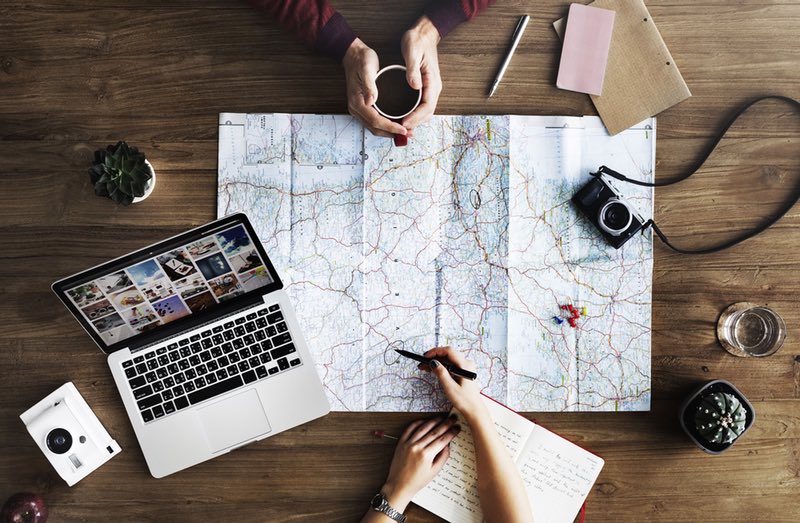
Trip Planning Spreadsheets
Trip itinerary and booking, banking when you travel, security when you travel, renting your home, security of your home, power of attorney, handling your mail, notifications, preparing your job family for your absence, language study, travel partners, making friends, traveling with kids, miscellaneous tips, mindset – what to expect from a long term trip, trip itinerary planning.
Edwina from TravelingGerman.com writes:
A multi-month trip requires a massive planning process, so in order not to get overwhelmed with all the different planning aspects, I like to keep everything organized and in one place. I do this by creating one big Google Spreadsheet Document with multiple tabs: To Do List: By having this on the first sheet, I can quickly refer to it whenever I have a few minutes for trip planning and can see what needs to be done most urgently (Editor: Start this now. Use this post to help you create your todo list) Itinerary & budget: Whilst I like to keep things flexible, having a plan means I spend less time on the road researching, and can quickly refer to it when needed. Planning in a spreadsheet means changing something in week one automatically updates everything else further down and I can see how it affects my – usually fixed – flight date back home. Packing list : Categorized, so I can plan ahead but easily pack things last minute if needed Daily spends: We usually give ourselves a daily budget based on spending money and hotel budget plus an “extras” fund for expenses like visa on arrival costs, local SIM cards and occasional splurges that you just can’t say no to – like an epic one week motorbike tour through the Vietnamese highlands that would have completely blown our normal daily budget. Using Google Docs has been a great success because we can access the document from any of our devices and, traveling as a couple, even edit it simultaneously. And being disciplined with keeping a detailed expense log hasn’t just helped us manage our budget, but has also brought back great memories when looking back at it like a diary years later. Here’s a link to our trip planning template that used when we’ve planned two three-month long Asia trips.
Wendy from AdventurousRetirement.com adds:
For the past 4 years my husband and I have travelled for 3-4 months . This is what we use for planning: Itinerary Spreadsheet – Detailed Itineraries are especially important for easy access when moving every 2-4 days over 4 months. I capture everything I learn in a spreadsheet during the research stage. When finalizing plans, the information is organized for ease of use. Accommodations with length of stay, address, GPS coordinates, contact information, time zone, cancellation policy, and total quoted price. Prearranged car rentals details. Activities/excursions of interest or booked – contact details and web links. Flight s – all flight details; also in the Trip Case app for direct notifications. Spreadsheets make it easy to stay in the moment at each locale, especially with a complicated trip like ours – 45 accommodations, 23 flights, 11 rental cars, and 4 boat trips (link for this trip). I always keep my paper tables on hand.
I agree with Wendy that keeping itinerary information in an app is useful, but I use the free version of tripit .com to keep track of flights, hotels, and rental cars. It is simple to update. When you get a confirmation email you simply forward it to [email protected] and it will be added to your itinerary.
For long term travel there are a few different approaches. Many travelers will get an away and a return ticket and will plan everything in the middle on the road, while some are more comfortable having more detailed plans. To cross some borders they will want to see your ticket home or at least your ticket to leave the country.
If you do know your itinerary and it is an around the world trip, you should also consider buying a special around the world ticket using the widget below. In general with a round the world ticket you get a certain number of stops but you have to pick a direction, either west or east and maintain that travel direction.
Around the World Tickets and Other Complicated Routes
Have travel planners research thousands of flight combinations to create one-of-a-kind routes for your next round-the-world trip
When planning a long term trip it can be difficult to figure out where to start. I like to start with a list of countries I would like to visit and I usually end up writing down twice as many places I would like to visit than is possible in the time. So then I go back and look at my list and try to come pick a few of my must visit places.
Once I have a revised list I like to create a spreadsheet with the number of days I will be on the trip and the dates. So if I am going away for a year long overseas experience, I’ll have a spreadsheet with 365 lines and the dates I will be away. I will then start populating it with information such is on Day 1 – Fly to Hong Kong, and then fill out the next few lines with Hong Kong because I want to spend a few days there. It is important to have a few dates set along the way during your long term travel. If you have an around the world ticket you will have to do this already as you will need to book the dates you will fly from one country to another. That way you will know that you have two months in Asia before heading to Europe. I like to use my itinerary to put in must see sights as well that way I have booked time in my schedule to go there. So if I put three days to see the temples of Angkor Wat I have it booked in. I can always change it to four days or down to two days if I want but I have an idea of how long I will be there. You don’t want your itinerary to be completely booked out as you do want to have the chance to be spontaneous during your trip.
Patrick from GermanBackpacker.com writes:
I just spent 8 months in Latin America – planning for such a long trip is not easy and might seem to be impossible, but with a few things in your mind, you’re ready for your big adventure. For me, it’s always easy to have a rough itinerary and plan. It’s not realistic to plan ahead for several months, but it’s helpful to have an idea of your journey. When I embarked on my big trip, I had a rough idea about the time that I want to spend in every country. I knew from which country I would most likely fly back home, and I could check early enough for cheap flight routes. I tried to make sure to end up in one of the cities in South America from where flights to Europe are the cheapest (in my case from Salvador, Brazil). If you do a quick research, you’ll see that every continent has a few airports from which it’s best to fly overseas, so it’s great if you finish your trip in one of these. However, don’t plan too strict – plans change, there are some places you’ll like more than expected, some places you’ll like less than expected. Be flexible – if you’re not happy in a certain place or country, just leave and spend more time somewhere else. I also make sure that I’m prepared for travels between countries – some research about visa requirements and border crossings (especially overland) helps to avoid any unpleasant surprises. Keep in mind the climate – and get some information about the areas you’ll visit: When is the rainy season, when is the dry season? When should a region be avoided, e.g. because of the risk of hurricanes, typhoons or the monsoon? You’re on a long-term trip, so you’re flexible and you can plan around to make sure to have good weather. Planning such a long journey seems to be a big challenge, but it’s also part of the experience and I’m sure you’ll have an unforgettable trip.
Somnath from TravelCrusade.org writes:
I prefer booking flights and homestays at least one month prior to the travel date to save costs,avoid last minute rush and unavailability of proper accommodation. I do detailed research on the place I am planning to visit. I then draft a plan by following the country map to make my plans for stay at each location. I also try to call or email the tourist information center of the country I am visiting to find out any relevant information required for the trip.
Kylie from OurOverseasAdventures.com writes:
If we have a reasonable idea of our itinerary, we always negotiate rates for long-term stays in places where we’re staying for longer than a week or two (such as AirBNB or holiday-let type accommodation). We’ve successfully negotiated stays in Bali, Sri Lanka, Malaysia, France and Croatia – even in peak season – where we’ve asked for a reduction in price due to the length of a stay. From an owner’s perspective it can be less maintenance and admin hassle to have the property leased for a longer period of time, so we’ve found they’re definitely open to reducing the price. We found this approach works best when we book at least four months out – the owners love having a guaranteed tenancy that far in advance. We’ve also negotiated other ways to save on accommodation costs, for example during a three month stay in France we did our own cleaning which additionally saved us the weekly 50 euro cleaning charge. Or when there was an additional cost for our children we ask the owner to waive the fee due to the duration of the booking. This approach also works particularly well in areas that are on the outskirts of a city or town. In Sri Lanka we stayed slightly outside of a town which meant we weren’t walking distance to the beach and restaurants, but the owner was really open to giving us a discount on the published rate and the small cost of a 5 minute tuk-tuk to all the action more than compensated.
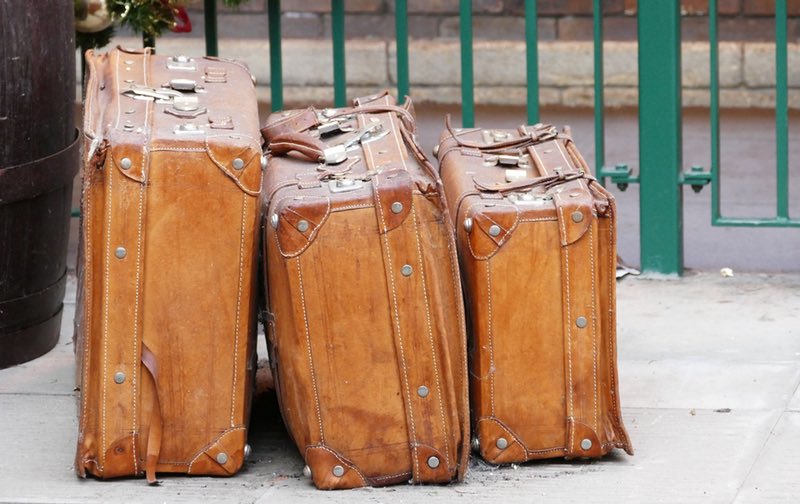
I don’t tend to pack any more for a longer trip than I do for a 7-10 day trip. Like when I am at home I wash clothes when they get dirty.
To minimize the amount of clothes you need to carry, in addition to layering, also choose clothes in a specific color scheme. For ladies, scarfs are a good way to add color but not a lot of extra weight. They can also be helpful to have in your day bag to get into a church, temple, or mosque.
See What I Pack
Rosemary & Claire from AuthenticFoodQuest.com write:
When it comes to packing, we only take the minimum and prioritizes clothes that we can use to layer up. The one thing we never leave home without is Activated Charcoal. These magical pills help prevent food poisoning, keeping us safe, as we eat our way around the world. To keep us entertained, we load up our Amazon kindles with a range of books including business books and Spiritual/personal development reading material. To have a constant supply of books, we connect to our U.S. public library, whereby we can constantly borrow books when traveling.
As useful as your planning spreadsheets are, for somethings you will still need actual paperwork.
Claire from TalesOfABackpacker.com writes:
As dull as it might be, getting your paperwork in order is an essential part of planning for any long-term travel. Passport : The first thing to check is your passport validity. Many countries require at least 6 months validity and/or several blank pages before granting you entry. Visas : Each country has different entry requirements, so check if your nationality needs a visa before entering each country you plan to visit. Remember, you may need to send your passport to the embassy to get the visa, which can take weeks – so check and plan as far in advance as you can. Others may only require a visa on arrival, or no visa at all. Vaccines : Check if any specific vaccines are required for entry, such as yellow fever, which some countries ask for proof of the vaccination in the form of a certificate. Insurance : Travel insurance is also very important for any travel. Long-term travel may need special coverage, as some policies only last a limited amount of time. Make sure your policy covers you for visiting all the countries on your itinerary. Keep an insurance card with you. I also make a separate note of my passport number, credit card details, and useful phone numbers like your embassy, bank, insurance provider, family members, and anything else that may be useful in an emergency and can save valuable time. Once you have all your paperwork in order, scan everything so you can keep an electronic copy of them on your email to access anywhere in the world and bring a paper copy with you (kept separate from the originals). It’s also a good idea to leave a copy of everything with your next of kin or trusted friend in case anything goes wrong while you are away.
Campbell & Alya from StingyNomads.com adds:
Driver’s License: If you’re going for a long trip take your driving license with you never know when you may need it. In some countries you need an international driving license in addition to a national one. An international driving license is cheap and only a payment is required, no testing. If you’re planning to rent a motorbike remember that in most countries you need a special license as well. You might be able to rent it without having one but if road police stops you be ready to pay a fine.
Sarah from LiveDreamDiscover.com adds:
A minimum of one month before our departure we do our research and make sure we know exactly what travel documents are required for our upcoming travel. Depending on where you plan to go you may need the following: Passport with at least six months remaining before expiry Visa for countries that require one Immunization records International drivers license Travel insurance Travel itinerary (some border controls may want details of your exact travel plans) Your consulate contact info in the countries you’re traveling to Extra passport photos (for visas)
Campbell & Alya from StingyNomads.com write:
If you’re venturing on a long term travel it’s very important to sort out your banking stuff; credit cards, online banking, monthly payments etc. Credit Cards: First of all make 100% sure your cards won’t expire while you’re on the road otherwise prepare for trouble. If it’s a close call get a new card as a backup and put some money on it. Nothing can be worse than to be stuck in a foreign country without money, except maybe to be stuck without documents. Second thing make sure you can use your card worldwide or at least in countries where you’re planning to go. Online Banking: Activate online banking to be able to do all transactions, payments etc. online. We find it quite handy as well for planning our budget, making sure we don’t spend too much etc. Multiple Credit Cards: It’s better to have more than one card. You never know sometimes one may not work, get stolen or lost. Keep cards separate. Emergency Numbers: Have your bank emergency number and necessary security information ready in case you need to block the card.
Raul from ILivetoTravel.me writes:
Automatic payment : Set up bills for automatic payment (or pre-pay) if you don’t want to take care of this (or can’t) while away.
ATMs: On the financial side, we use our Charles Schwab checking account, which offers free ATM withdrawals anywhere in the world. With this system, we can feel secure not having to carry a lot of cash on us and most importantly, save money when withdrawing funds.
State Department: Register your travels with the State Department.
For our important documents we always make sure we carry copies separate from the original documents. There’s not much use in storing a copy of your passport with your passport as it’s likely that they would both be lost or stolen together. We keep our important originals (passport, bank cards etc) on our bodies either in a secure purse, wallet or money belt. The physical copies are stored together in a case or bag that we keep in our carry on or suitcase. A large pencil case/bag like you used in school works great or even a Ziplock bag.
Wendy from AdventurousRetirement.com writes:
Digital security (VPN) – We purchased a VPN (Virtual Private Network) several years ago; it provides privacy on all our digital communications (phones, tablets and laptops).
NordVPN is a VPN that works on 6 different devices simultaneously and is well-rated.
I also recommend the following:
- padlock (if you plan to stay in a hostel or travel by night train )
- money belt or pouch
- a theft-proof purse/backpack. My wife uses the Pacsafe Citysafe CS200 Handbag and I love my Pacsafe Metrosafe LS350 Backpack .

Preparing Your Home and Affairs For Your Absence
Pari from traveling-pari.com wrtes:
Traveling long-term while generating passive income is something that many frequent travelers aspire to. With the advent of Airbnb , you can leverage your house to cover some, if not all, of your travel expenses. However, to make this idea a success, proper planning and organization is key. First, plan your long-term travel in advance. This will allow you ample time to list your property online and get some responses. In order to reduce the maintenance tasks, it is preferable to rent out your house for a longer duration to the same tenant than multiple short stay tenants. To encourage this, you can advertise discounts on long term rentals. Once you have found tenants, there are other concerns such as key handoff, cleaning before and after each visit, answering questions and concerns of the tenants. Remember, one bad review is all it takes to seriously affect your future rental opportunities. One way to handle this is to ask a friend to help in exchange for part of the rental fee. Also, these days specialized rental companies have propped up which cater specifically to short-term Airbnb rental. For a percentage of the rental income, they handle all these tasks along with listing your property on Airbnb . For security, you could install an alarm system that you can control remotely. Some systems come with a remotely controlled lock system which can do away with the key handoff problem. In this case, make sure you change the pin remotely every time a tenant leaves. Also, list house rules clearly so that the tenants don’t bother your neighbors. When it comes to your personal belongings, you can either lock away your important belongings in a secure cupboard or hire a storage unit. Always check the previous reviews of the tenant before you agree to rent out your apartment. If everything is set in order, you can now enjoy your travels worry free.
Read more at Welcoming Strangers – Becoming an Airbnb Host
Backups: We make two backups of all digital data for each device and store them in different locations. Backups include 1) on our home server, 2) to a 2-terabyte external hard drive, and store it in a safe deposit box.
We recently installed a Ring Video Doorbell Pro which not only lets us see who is coming or has come to the front door but even lets us talk to the person at the front door as long as we have an internet connection on our smartphone.
Mar from OnceInALifetimeJourney.com writes:
“I have gone on extended trips several times before and I am also a long term expat, living outside of my native Spain since 2006 and found that one of the most useful things I ever did was giving my mother full power of attorney to handle any legal matters on my behalf. In Spain, this means that she can do anything as if she was me except for getting married or divorced. That is, she can sign a mortgage or buy property on my behalf, and she has indeed done so when my grandmother passed away and I acquired one of her properties while I was on the road. She also regularly deals with the government on matters related to taxation thanks to the power of attorney she has. Obviously, given the legal extent of the powers she has, it would be wise only to give them to someone you truly trust but power of attorney is very useful to avoid unexpected last minute costly trips when you are traveling long term”.
I was thinking it is probably just as well that the Power of Attorney does not give Mar’s mother the power to get her married or divorced. I feel some mothers might abuse that power.
Mail: We forward postal service mail to a trusted party. Mail is opened and processed for us. Critical mail items or those requiring immediate attention are electronically scanned and placed in an encrypted folder for our access. We use DropBox with BoxCryptor for enhanced security. Digital Backups (phone, laptop, tablet, etc.)
If you don’t have a friend or family member willing to take in your mail you can get a service that will handle it. Sign Up Now For Earth Class Mail
Notify credit cards, banks, utilities, alarm company, neighborhood/condo association, etc. of your absence.

Before planning a long term vacation,I would first inform my colleagues about my unavailability and update them about my leave plans. I would then inform my family and friends about my whereabouts and absence in that period. I would also try to finish any planned work before that to avoid delays and cancellations.
For some, a long trip is a chance to take a sabbatical, use up accumulated vacation, or take a leave of absence. Others get permission from their company to try working on the road so that they can support their travels.
Nate from TravelLemming.com writes:
Traveling to foreign countries is fun. Getting sick in one isn’t. That’s why before leaving for a long trip, it’s critical to do everything you can to maximize your chances of staying healthy while on the road. Immunizations: One of your very first to-do items should be visiting a doctor or travel clinic to get your immunizations updated.Some vaccines require time to take effect, or subsequent booster shots, so it’s best to go as early as you can. I learned this the hard way after waiting to visit the clinic until the day before a year long trip around the world. I ultimately missed out on several shots I probably should have had! Yellow Fever : Depending on your itinerary, you may be required to show a Yellow Fever Certificate for entry into some countries. Carry that with your passport and email a copy to yourself. Malaria: if you’re heading to somewhere with a malarial risk, considering buying anti-malarial pills before leaving. Although you can often find them abroad, many of the higher-end, lower-side effect brands might not be available. Insurance: be sure to sort out your medical insurance situation before you leave. Many domestic insurers won’t cover care abroad, which is why many travelers opt for travel insurance . But be careful before discarding that domestic health insurance as useless. If you’re an American, you need to evaluate whether you’ll be required to pay a tax penalty for failing to carry it. As they say, an ounce of prevention is worth a pound of cure. I managed to travel to six continents over the course of a year while experiencing little more than a few cases of food poisoning. But not everyone is so lucky, so don’t neglect health-related preparation before leaving.
Medications: Get enough meds for anything you normally take and know the medication’s main ingredient (not just the medication’s name) in case you need to find locally somewhere. Get a letter from your doctor explaining that meds you carry are doctor-ordered and keep medications in the pharmacy bottles with the labels to make it easier to get through customs in some countries.
James from Portugalist.com writes:
The mini first aid kit also gets a replenish with medications like Paracetamol, Ibuprofen, and sea sickness tablets as well. Although it’s possible to get these on the road, I usually find that they’re more expensive or, sometimes, harder to find.
I also carry a small collection of over-the-counter medications that will get me by before I can get to a pharmacy. I carry:
- A mild over-the-counter sleep aid (no not Ambian)
- anti-diarrheal medicine
- anti-mucus medicine for coughs
- cough drops
- cold pills like Aleve D
Read more at 8 Frequently Asked Questions about Travel Health .
Ingrid from SecondHalfTravels. com writes:
Doing language study before your trip will enrich your travels and provide many practical benefits. You’ll be able to ask directions, negotiate prices, and read street signs and menus. Even more rewarding are the special connections you’ll make speaking with locals in their mother tongue. For long-term travel, try to choose a language used in multiple countries on your trip. For most of Latin America, Spanish is the obvious choice. Depending on your itinerary, Russian, Mandarin, French, or Arabic might also be good options. It’s best to start the process before your trip. Take a local class or use a self-study kit like Pimsleur. Listen to free language-learning podcasts during your commute and at the gym. Check out Duolingo , a popular gamified learning platform. The flashcard apps Memrise and Anki are great for vocabulary drills. Watch TV shows and movies in your target language to practice listening comprehension. To improve your conversation skills, attend a local Meetup, or take lessons with a native speaker on iTalki or Verbling . Or arrange free online language exchanges using sites like My Language Exchange . On your travels, consider attending a language school coupled with a homestay. It’s a great way to make new friends and take a deeper dive into the local culture. There are Spanish schools all over Latin America and Spain, but you can also study Arabic in Cairo, Russian in Saint Petersburg, or Chinese in Guilin, to name a few. Before leaving, research language schools on TripAdvisor and Yelp. For Spanish, check out 123TeachMe’s school directory . Look for schools with recent positive reviews that offer after-class activities. Most schools can arrange homestays with local families. Prices are often very reasonable for a package including 20 hours of weekly classes and accommodation.

Relationships
Who you travel with can have more impact on how good your trip is than any other factor, but a long trip can put additional stresses on relationships.
Chris from OneWeirdGlobe.com writes:
The tight quarters of a plane or bus, the stress of navigating, and any number of other issues can test even the strongest relationships. Add to that constantly being together, and the smallest spark can start a fight. My wife and I have traveled internationally together for five years through well over a dozen countries. We’ll travel and enjoy many places together, but we will follow a few rules: We don’t need to go everywhere together. These days are usually scheduled as ‘Operation Separate Ways’, and allow us to pursue our own interests. She’ll check out the churches, I’ll go off to the flea market When working at home, we’ll set up our offices in different rooms (ideally at different ends of the apartment and/or behind closed doors). End of the day, we’ll almost always eat together… and there’s always time for cuddling
Stefan from NomadicBoys.com writes:
We’ve done several long term trips as Nomadic Boys, in particular in Asia, Europe and Latin America. One of the most rewarding things we’ve done in our travels is connecting with locals and developing a circle of friends with them. This is because we’ve found you get to see the best of a destination through the eyes of locals, enabling you to obtain a far deeper appreciation of the place you’re visiting. One of the most fun ways to do this is with cooking classes. Some of the best cooking classes are usually with a local who is really passionate about their culture and keen to share it with others. We always try to do this in every new country we visit. This is also a great way to get a deeper understanding of the culture by learning about the different cuisines. Another way is to research a good tour guide. One way we recommend is checking out the Free Walking Tours available in most big cities. Most of the time they are led by students who are looking to top up their income via tips made on the tour. They are always an excellent source of knowledge of the best places to hang out and trendiest places to hang out. We also recommend using social networking apps like Instagram and Twitter to connect with locals via the location search function and relevant hashtags.
Lisa from FlipFlopGlobetrotters.com writes:
When we traveled as a couple, we didn’t need much more than our essentials in a backpack and a plane ticket. We never made itineraries and loved the flexibility that gave us. Fast forward a good few years and now we travel with our son. A lot changes when you travel with kids, but at the same time a lot stays exactly the same. So, when we decided to go on a 10-month travel adventure to South East Asia with our toddler boy, we didn’t make an itinerary either. In retrospect I really wish I’d done more research. A list of recommended destinations by other traveling families would have helped tremendously. While we were on the road, I spent way too much time behind my laptop, trying to figure out where we’d go next. It was quite stressful and the internet connections were often absolutely awful. When it was just the two of us, we didn’t really care where we’d sleep, as long as it was moderately clean. Now that we were three, I suddenly had a whole new set of requirements for destinations and accommodation. Prior to us leaving I became a member of some amazing family travel Facebook groups and they were a great help. Next time we go on such an adventure, I’ll make better use of the knowledge available in those groups. I’ll create lists with blog posts that cover the countries and regions we’re interested in and all the destinations and accommodations other families recommend. While we like to follow our own path and will always aim for maximum flexibility, I’d really rather spend time playing with our son than wasting hours behind my laptop trying to figure out where to go next.
I am enjoying my switch to T-mobile which has the best service plan for Americans for traveling abroad as it includes both free roaming and free data roaming (not high speed) in 140+ countries.
Roll some duct tape on a pencil – the most practical item to bring along!
One of the best things we’ve done to run our business when traveling long term is establishing a Google Voice number. With this number, we receive messages as emails, saving us the hassle of dealing with expensive roaming fees. Not only is the number free, you also don’t run the risk of missing important messages. Do keep in mind that you have to set this number up in the U.S. before embarking on your travels. Staying fit is an important aspect of our lives on the road. We always make room for our Asics running shoes, allowing us to run in local marathons and maintain our running routine wherever in the world we may be.
Planning for a long-term trip, in many ways, is the same as planning for a short-term trip. You need to pack clothes, organize visas, check your passport is in date, get your vaccinations, etc. Unless it involves changing climates, I generally don’t pack that much more for a long-term trip than I do for a shorter trip, but I do have to think ahead a little more. I sort out my tech when I’m home as gadgets and electronics are more expensive abroad, and the internet is often slower. This means buying any new electronics or accessories that I’ll need over the coming months like new external hard drives. Sometimes I’ll also do a complete Windows re-install if the laptop is running slowly (which it’s good to have a fast internet connection for).
Jorge from www.couplertw.com writes:
When you travel long term it’s important to be able to use as many means of transportation as possible. Learning how to properly ride a motorbike and driving a manual car will make your life much easier on the road, particularly if you want to visit off the beaten track destinations and roam freely through the countryside. Learning how to ride a motorbike is particularly useful before traveling in Asia. In most of these countries it’s very common to rent a motorbike for your daily life or for travel independently to tourist attractions. It’s both cheaper and much more fun than going on tours. Many tourists ride bikes without practice which is reckless, dangerous and easily avoided. Not being able to rent and drive a bike was our biggest disappointment in our first long-term trip through South East Asia. It’s also a good idea to take a few hours to learn or practice driving cars with a manual transmission. In some countries, it may be difficult to find cars with an automatic transmission. Being comfortable with both will make your life much easier on the road. Plus, driving a manual car can be great fun.
Finally, when you picture this big trip of yours, you probably are picturing the highlights. You picture seeing the famous sites that you have dreamed of. You may not be picturing the hours of travel or the log waits in airports or bus stations. You may be picture everything going right. It won’t. You may picture the highlights of your trip, but they may or may not be what you remember most from your trip. Perhaps one of the most important things to prepare is your expectations.
Clelia Mattana from www.KeepCalmAndTravel.com writes:
I tell travelers to avoid having too many expectations, to try and learn the art of “going with the flow” as much as possible (not much planning beforehand), to get ready for unpleasant surprises and experiences too, and to be aware that those same “bad” experiences will actually become the best things that could ever happen to you during your trip: They will teach you invaluable lessons for life and will help you in discovering who you really are. You will realize things about yourself that you had never imagined. I will also stress the point that a long-term trip is not a vacation, and I encourage people to TRULY open themselves to the “stranger”, especially if you are a solo traveler like me. Don’t be too naive but be open-minded with people. During a trip of that scale, if you keep your mind open, you will come back home changed, with a vision of the world and the people that can be completely different from the one you had before. If not, nothing will change for you and you will come back with only a list of countries you have visited, a few good pictures and less money in your bank account. It’s also important to be prepared for the “travel bug syndrome”. Some people plan a 6-9 months trip and, somehow, they manage to stay on the road for a lot longer than that. This may happen to you too. Or, conversely, the trip will make you realize that you actually want to go back home more than anything else, and you will appreciate your country a lot more, even if sometimes the people you left behind will be never able to grasp what you truly experienced out there, and that’s ok, it’s normal. All in all, there is no right or wrong. That’s why my last suggestion is: Don’t feel guilty or judge your feelings too harshly during your trip. You are YOU and this is YOUR unique experience. You don’t need to conform to other travelers’ point of view and feel “in a certain way”, being it how you react to the unexpected or whether you hate a location that everyone seems to love. Taste the freedom of finally being able to think and feel whatever you want. The feeling of freedom during a long-term trip is something difficult to replicate in everyday life so, enjoy it to the fullest and don’t be afraid to dare to do things you could never do at home!
A longer trip deserves some planning. What planning tips would you add?
Related Posts
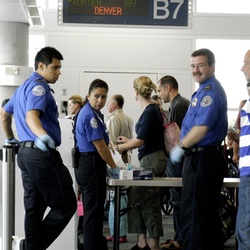
by Chris Christensen
+Chris Christensen | @chris2x | facebook
8 Responses to “How to Plan for a Long Trip – The Definitive Guide”
lee laurino
shall read all this again………..for anything I missed and need to incorporate into my twice a year 3 month trips. two challenges: traveling solo and being a ‘planner’ there is barley enough time to do research after a trip. and not having places to stay reserved means I spend too much time the week or days before the ‘next place I plan to visit’ finding a ROOM! With two travelers you can divide the work and have someone to discus alternatives with. 2. traveling long term as a mature traveler. we all travel differently and I now chose to travel slow and with more comfort and assured safety. This is not for everyone but works for me……….i need to be within walking distance of where I want to go so if I cant find a taxi, uber or understand the bus, I am not stranded (again).
Thank you for the excellent article. I want so much to travel, just go to somewhere in Europe for three months and travel wherever I want. I know what is stopping me is “stuff.” I worry about leaving my house for that time. I have done it for 36 days or so but hesitate going for months. I will reread and consider all this excellent advice.
You are welcome. Clearly I had some help 🙂
I know what you mean. Our days of hostel dorm rooms are certainly over.
Kerry Dexter
A good range of tips, Chris, thank you. I’d add, on the practical side, pack repair tape for your backpack/rucksack/luggage — for this, duct tape is often not strong enough, especially long term. Also on the practical side, be prepared (even in first world countries) for the power to go out, internet access to go off, and you not to have access to all those things you’ve stored electronically. It does happen. On the spiritual side, plan in down time — a couple of days return to a favorite place, perhaps, or quiet time with no particular plans. This will refresh your journey, and depending on how long you are traveling, you may want to do this more than once. You need time to reflect and take in what you have been experiencing.
Excellent tips Chris, for me safety goes first if you lose something or got robbed the travel mood is not the same anymore. My friends left a jacket in a rented car in Italy somewhere in Bergamo and just in twenty minutes car window, and the doors was smashed. They didn’t lose anything exept the coat, but Italian insurance company fined them for around 400 eur that was a pain. So You have to think through all steps you are making and be aware of every moment. Nobody will touch a person who is present, and aware of its surroundings. I would like to add to this article a bit more about security as well. My experienced showed me that if you are going to the metropolitan city’s you have to keep aware even of your wifi connections, Once my bank details been tracked, while I was booking train tickets in a coffee shop. It is good that I had a banking app which helped me to check my balance just in seconds whenever I need. So I could see that I started to make strange not relevant payments, so I blocked it immediately. You can check these frauds through public wifis are continually happening. Since I travel more than a 4 times a year I have nordvpn subscription so I would never connect to the public wifi unsecured. Like ever.
I think that might be a seperate post… this one got a tad long 🙂
Wow! Very useful tips, Chris.
Leave a Reply
Name (must be a real name) (required)
Mail (will not be published) (required)
Tags: article , featured , home security , long term travel , round the world , travel planning , trip planning

Guides / Resources
- Getting Started Traveling
- Guide to Round The World (RTW) Tickets
- 27 Websites for Booking Hotels and Alternate Accommodations
- First Time Cruise Tips – Planning a Cruise
- How to Start an Airbnb – Tips from an Airbnb Superhost
- Travel Resources – What I Pack
- Map of San Francisco by Neighborhood and What to See by Neighborhood
- Guide to the Monterey Peninsula
- Missions of California Map – All 21 California Missions from South to North

Sign up for our newsletter and get the eBook "How To Save Money Booking Your Travel Online"
World Regions

- BloggerBridge
- California Travel
- Episode Map
- Inside Chris's Head Blog
- My CafePress Store
- My Etsy Store
- The Bible Study Podcast
- Tourism Marketing Consulting
- Privacy Policy
- Amateur Traveler Media Kit
- Working with Amateur Traveler
- Pitch me a Podcast Episode
- Guest Post Guidelines
- Travel with Amateur Traveler group
- The Amateur Traveler Manifesto
- find me on BloggerBridge.com

Your Long-Term Travel Checklist: How To Plan A Long Trip RTW
Whether you’re actually planning a long journey or are simply interested (you never know, right?) this long-term travel checklist will walk you through every step you’ll need to take.
I love lists and I find this helps take the ‘overwhelm’ out of the planning process, especially if it’s a complicated one.
But when should you start planning? What should you do, when? What if you forget something?
This overseas travel checklist shows you exactly what you should do at which stage of your preparations. It’s based on my own experience of 50 years of solo travel , so I hope I’ve got some things right.

LONG-TERM TRAVEL PLANNING: 1 YEAR BEFORE DEPARTURE
- Decide what kind of a trip you’ll be taking: are you interested in ethical travel ? Pilgrimage routes ? Cooking schools in Europe ? Unusual travel ? Are you traveling to trace your family roots ? Or do you simply ‘suffer’ from plain wanderlust ?
- Start thinking about where you’ll go and check out potential travel destinations – unless you know exactly where you’re going, this is a good time to start making lists; you can always change your mind later
- Check out your employment options: if you have a job, can you get a leave of absence or will you have to quit?
- Begin budgeting for your trip and calculating how much you’ll need
- Decide whether you’ll be keeping your living quarters if you’re renting, or what you’ll do with your home if you own it, for example, will someone house sit for you?
- Begin to tell people around you you’re leaving for a while
- If you’re planning on traveling within a single region, start thinking about learning the language – at least a few phrases
- Decide whether you’ll be traveling solo or with friends for part of the way
- Start picturing the trip in your mind: why you’re going, what you expect from the trip
TRAVEL PLANNING CHECKLIST: 6 MONTHS BEFORE DEPARTURE
- Get a passport or check the validity of yours; renew if needed
- Begin planning a more specific itinerary and start costing your trip
- Begin researching the culture; read some good travel book reviews or women’s travel blogs for inspiration and to keep you going for the next few months
- Start tightening your belt and cutting back on unnecessary expenses
- Decide what you can or should sell before leaving, and whether you’ll keep your car
- Start poring over maps and choose a travel guidebook or two
- This is a good time to explore options for volunteer work overseas
- Start looking into ways to earn money if you need extra, by teaching English for example
- Get head shots of yourself and start working through any visa paperwork
- Read up on travel health and get a medical checkup; research your travel vaccinations and schedule them
- If you have pets, decide what to do with them, whether your pets are going with you or where to board them during your absence
TRAVEL ABROAD CHECKLIST: 4 MONTHS BEFORE DEPARTURE
- Finalize your rough itinerary
- Look at climate issues and plan the best time to visit each place
- Order your RTW ticket and start booking any volunteer activities
- Apply for discount cards – student card, senior card – all these will get you discounts as you travel
- If you plan to drive while you’re overseas, find out if you need an international driver’s licence
- Hand in your notice to your landlord if you rent (in some places, you can wait till the last month or two but make sure you don’t miss the deadline)
- Go to the dentist
- Start researching what you’re taking with you: the best backpacks for long term travel, the best walking shoes , the best travel pants and so on.
2 MONTHS BEFORE YOUR TRIP
- Start gathering everyone’s contacts and determine the best ways of keeping in touch while you’re away
- Decide what you plan to put into storage and find an appropriate place (storage box or company or someone else’s home)
- Start selling things you don’t need or want on Craigslist or eBay or hold a garage or boot sale (it’ll help build up your travel fund)
- Look into overseas money matters, like transfers, credit cards, ATM fees
- What electronic gear will you take? Phone? Laptop ?
- Deepen your research, for example by reading and asking questions on travel forums – this is the most immediate news
- Start doing the required online research for more detailed background for your trip
- Make sure you’re in good health and ready to go
- Start ordering your travel gear
- Buy your backpack or suitcase
- If you’re backpacking, load everything into your pack and start walking around with it each day to get used to the weight; if you’re taking a suitcase or other kind of bag, make sure you can lift it easily and that it has rollers
- Print out your travel packing list and begin gathering what you need; see what you already have, and begin buying the few things you still need
- If you’re taking hiking boots start breaking them in
- Research your long-term travel insurance
- Order your train passes or other train ticket if you’ll need one
- Hand in your job resignation if you’re quitting; in some parts of the world you only need to do this a few weeks ahead of time
- Sort out your cellphone or portable wifi; research calling cards to stay in touch while you’re on the road; sign up for a VPN service if you plan to get online overseas
- Make sure you have a web-based email address (gmail, yahoo) and sign up for the various social networks you plan to use
- Actually buy your travel insurance
- Give someone at home a power of attorney; nothing will go wrong, but precautions are always a good thing
- Get a spare set of eyeglasses (and don’t forget to pack your prescription)
- If you’re on medication, make sure you have enough with you as well as the necessary prescriptions
- Write to potential couch surfing or homestay hosts to line up your first few weeks of lodging or find other budget accommodation for your first few days
- Begin seeing your friends, one at a time
- Make sure you’ve thought through personal hygiene and have what you need
2 WEEKS TO GO
- Start calling those friends you haven’t seen to say goodbye and make plans to stay in touch
- By now you should know if your pack is too heavy or your suitcase or bag too full; it’s time to rationalize and cut back
- Get your stuff into storage; either live minimally until you leave or move in with a friend or relative for the remaining two weeks
- Talk to family members about how often you’ll check in, give them your tentative itinerary, and agree at which point they should start to worry (they’ll worry well before then of course)
- Start taking your malaria medication if you need it
- Photocopy your important papers; take the photocopies with you but also give someone at home a set; alternatively scan everything and put the scans on a stick you’ll take with you
THE LAST FEW DAYS
- Look through the above list and make sure nothing has fallen through the cracks
- Pick up a bit of foreign currency for your first country of arrival
- Finish saying your goodbyes
- Organize your mail forwarding with the post office
- Eat a few of those foods you might not find where you’re going (don’t worry, you’ll lose the weight when you travel)
- Take pictures of your family to show your soon-to-be new friends abroad
- Double-check your papers and tickets
- Take care of last-minute additions and surprises
- Say a last goodbye to your closest loved ones
- Make sure you give yourself enough time to get to the airport serenely
- Stop worrying and get on that plane!
A FINAL WORD
When you land, don’t forget to let people know you’ve arrived safely!
Your travel checklist should be flexible: add what you need to, delete what you don’t, and make it as personal as you want!
Do you have anything to add to this oversea travel checklist? If so please do it below! If you liked this list, please click on one of the icons and share it with your friends.
Did I miss something? Please get in touch!

If you liked this post, please share it!
How To Plan Long Term Travel (With Tips That Actually Help)
Long-term travel is easier than ever, and there are many ways of making it happen.
Quick Links
How to decide if long-term travel is right, tips for starting out on long-term travel, where to live in the world.
Historically, there was a clear distinction between traveling and "normal" life. But with the rise of the internet and the explosion of jobs online and work that can be done remotely, that line has been blurred in many areas. Today many people are traveling for a prolonged period of time - some save up to travel, some find odd jobs to do around the world, others go to one specific place and get a 'normal' job for a year, and others can just enjoy life as a digital nomad.
For the purposes of this article, long-term travel is considered to be traveling for six months or more internationally. This article will assume that one would like to be a traveler more than a typical tourist . After the Pandemic came the Great Resignation , with many people quitting their long-hated jobs and seeking to realize their dreams in life.
Most people need a place to call home and quickly become homesick if they are away from home for a prolonged period of time. But there are some who can travel for a long period of time and enjoy every bit of it.
Deciding if long-term travel is the right choice or not is a personal choice. Long-term travel means leaving one's pets behind and finding someone to basically adopt them. It means leaving family and friends behind - and major events (marriages, birthdays, etc.) are likely to be missed.
Long-term travel is a great way to break the sometimes relentless wheel of life. More often than not, life goes with finishing high school and going straight to university. After graduation, most start their career job and spend the next 20 years climbing the corporate ladder while taking on responsibilities that tend to tie one to a specific place (like marriage, kids, mortgage, pets, etc.).
Long-term travel means one is free of all of that. If one would like to see the world and break the wheel (or at least put it on ice for a while), perhaps long-term travel is the right decision.
Related: What You Should Know About International Travel Advisories
Long-term travel requires a little bit of planning (but most can be planned along the way). Here are some tips:
- Banking: Many Sure One's Bank Has Low International Fees & Is Notified One Is Traveling
- Budgeting: Decide If One Is Using Savings Or Working While Traveling
- Living Expenses: Every Country Has A Different Cost Of Living
- Passport: Make Sure The Passport Will Be Valid For The Whole Time (Plus 6 Months)
Travel is not as difficult or scary as many people might think. People all around the world are making a living just like everybody else.
It is important not to overthink anything. Make some basic plans and make sure one has enough money to travel, but don't over plan (or overpack). The most important thing is to make a decision to travel. Then the most important thing is to buy a flight ticket - to somewhere, anywhere. The rest will follow on from there.
Related: Is It Actually Better To Solo Travel Around The World?
Both of the following statements are true: it's a small world, and the world is a big place.
The world is a big place because it is almost impossible to see all of the world in a normal lifetime, with around 250 countries to explore in the world (including countries like Greenland). If a traveler spent only a week in each country, it would take around five years of non-stop travel to see them all.
The world is also a small place - it is possible to fly from almost any significant city to any other significant city in less than 36 hours. There are flights to just about any destination in the world for less than $1,000. In a way, that means few places in the world are more than 36 hours and $1,000 away.
This means that travelers can't see the whole world, but they can be just about anywhere they want, whenever they want.
With an American (or other Western) passport, one can just live in many countries in the world without having to worry about visas. Just turn up and stay in Europe for three months or Korea for three months, or Malaysia.
One of the key factors in deciding where to go is the budget. E.g., It will be much cheaper to stay in Thailand than in Germany. Where one should live in the world depends on what one wants - the tropical beaches and exotic food of Thailand? The old cities of Europe? The untapped wonders of Africa?

You'll never travel without our trip planner again
Travel planning at its best. build, organize, and map your custom itineraries in a free travel app designed for vacations & road trips, powered by our trip planner ai.

Your itinerary and your map in one view
No more switching between different apps, tabs, and tools to keep track of your travel plans.
What travelers are raving about
Features to replace all your other tools, add places from guides with 1 click, collaborate with friends in real time, import flight and hotel reservations, expense tracking and splitting, checklists for anything, get personalized suggestions, plan like a pro.
Unlock premium features like offline access, unlimited attachments, flight deals, export to Google maps, and much more
Offline access
Unlimited attachments, optimize your route.
4.9 on App Store, 4.7 on Google Play
Discover your next favorite destination
Have tips of your own? Write a guide to share with other travelers like you!
Ready to plan your trip in half the time?
For every kind of trip and every destination, the best road trip planner, the best vacation planner, the best group itinerary planner.
Nomadic Matt's Travel Site
Travel Better, Cheaper, Longer
16 Easy Steps for Planning Your Next Trip
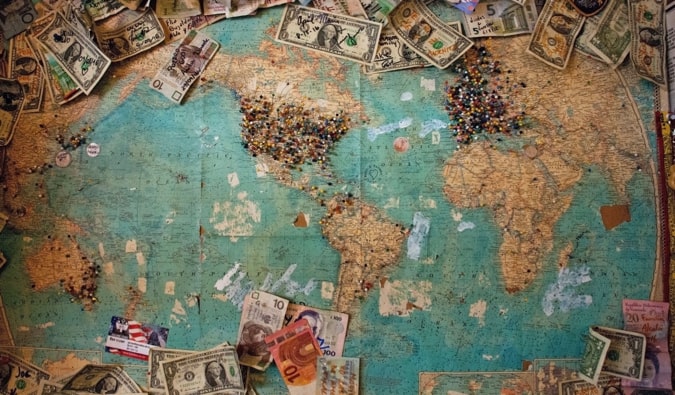
I remember when I started planning my first trip around the world. I had no idea what I was doing.
When I decided to quit my job and travel the world , I walked into a bookstore and bought Lonely Planet’s Southeast Asia on Shoestring . Buying that guidebook was my first step toward long-term travel. It made the trip seem more real, more tangible. It made it all seem possible.
While helpful, the book didn’t exactly prepare me for planning a trip around the world. Back then, there weren’t really travel blogs, sharing economy websites, and apps like there are today. I was excited and determined — but I was lost. I had to figure it out as I went, hoping I didn’t miss anything important.
Trip planning can be a daunting task. Where do you begin? What’s step one? What’s step two? What’s step three?
It’s easy to get overwhelmed, especially when you haven’t done something like this before — and especially considering just how much information there is out there these days. Blogs, social media, and guidebooks have never been more plentiful. There’s a firehose of information out there that can sometimes make the task of planning a trip even more challenging and overwhelming.
After a decade of traveling the world , I’ve planned countless trips and vacations for myself, friends, family, and even group tours. In the beginning, it was trial by fire and I learned a lot of lessons the hard way . However, that helped me develop an efficient checklist that ensures I don’t miss anything important during the trip planning process.
After all, I don’t want to get to my next destination and then realize I forgot something. And neither do you!
There is a lot of information on this website ( and even more information packed into my book ), but one question that comes up frequently is, “Matt, how do I put this all together? How do I plan a trip?”
In a continuing effort to help you get out the door and into the world, I’ve created this step-by-step guide on how to plan a trip. It works for any kind of trip — no matter how long you’re going for! Just follow this checklist and you’ll be off in no time!
Table of Contents
Step 1: Decide Where You Want To Go
Step 2: decide the length of your trip, step 3: research your costs, step 4: start saving money, step 5: get a travels rewards credit card, step 6: switch to no-fee atm cards, step 7: stay focused and inspired, step 8: check for last-minute deals, step 9: book your flight, step 10: book your accommodation, step 11: plan your activities, step 12: sell your stuff, step 13: automate your bills, step 14: pack, step 15: buy travel insurance, step 16: enjoy your trip.
If you want to jump ahead, simply click on any of the links above.
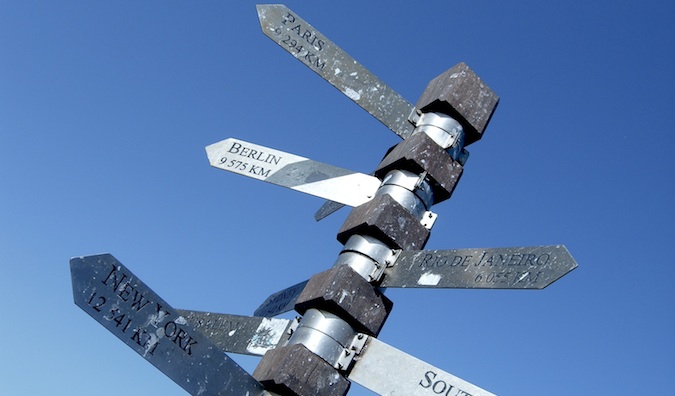
It’s a lot easier to mentally get behind “I am going to Paris in the summer” than “I’m going to Europe” or “I’m going somewhere.” Not only will your trip become more concrete for you and easier to commit to, but it will make planning easier as well…because you know what to work towards. Get specific with your plans. Get detailed. The more focused and concrete your goal, the easier it will be to actually reach it.
Resources for picking your travel destination:
- 200+ In-Depth Destination Guides
- 10 Destinations Under $50 Per Day
- The 10 Best Places to Visit as a Budget Traveler
- The 20 Best Tropical Islands in the World
How much does it cost to travel? That depends!
Without knowing how long you’re going away for, I can’t answer that question. And it’s a question you need to answer so you can start planning!
In order to figure out how much you need to save you’ll need to know how long your trip will be.
Are you going away for a week? A month? A year?
The length of your trip is a huge factor in determining how much money you need. Spend some time mulling that over until you have your answer.
For example, after you say “I’m going to Paris this summer,” add “for X days.” That way you can start to narrow down just how much money you’re going to need to save. “I am going to Paris for 10 days” is a trip that you can plan for. It’s an attainable goal.
So you know where you’re going and how long you’ll be there, but to really nail down how much money you need, your next task is to research the costs in your destination at the style of travel you want.
Do you want to backpack, or would you rather stay in luxury hotels?
How much are hostels, hotels, restaurants, and attractions?
Knowing will allow you to estimate how much money you’ll need for your trip. Here is how to research costs:
- Buy a guidebook.
- Check out my travel guide section .
- Google prices for specific things you want to do, such as scuba diving, bungy jumping, winery tours, etc. ( Get Your Guide is a good place to start for that)
You don’t need to do more than that. There’s so much information on the web that if you go down the rabbit hole of overplanning, you’ll get lost and confused by the firehose of information. Stick to those three things and you’ll be set!
In our example, if you are going to Paris for 10 days and need at least $75 USD a day (not including your flight), you know you need to save $750 USD (though round up to $800-900 USD since it’s good to have extra) for your trip.
If you were to travel around the world for a year, you’d need $50 USD a day .
Here are some other insightful posts that will help you better estimate your costs:
- 5 Ways to Make Your Money Last When You Travel
- How to Know the Travel Info You Find is Legit
- How I Research My Solo Travel Destinations

People bleed a lot of money every day through small purchases: a coffee here, a snack there. All of that adds up. In order to make changes to your spending habits, you first need to understand them. Making a list will do just that. It will also put your financial needs into a better perspective.
For example, if you need $2,000 USD for the trip you’re taking in eight months, that means you only have to save $8.33 USD per day. Couldn’t you find a way to save $8 USD per day? Heck, your daily coffee is most of that!
If you’re struggling to save money, here are 23 ways to cut your expenses and save money for travel . This will help you get started and on the road to saving money in no time!

These days, most cards have welcome offers of up to 100,000 points when you meet their minimum spending requirement. That’s enough miles for a free flight almost anywhere in the world!
If you want a free flight, sign up for the cards that help with that. If you want free hotel rooms, get a hotel card. Either way, sign up for a travel credit card and start earning points today. As long as you can pay off your monthly balance, you’ll get free travel credit.
You don’t need to sign up for very many cards either; pick one or two and focus on those. Do this the moment you decide you want to travel. Don’t wait — waiting equals lost miles, which means less free travel.
Collecting points and miles is what all the experts do to cut their costs and travel longer. It’s what has kept my costs down and me on the road for so many years. While the best cards are only available in the US, there are still plenty of options for Canadians as well as folks from Europe, Australia, and New Zealand.
For more information on travel credit cards and using points and miles, check out these posts:
- Points and Miles 101: A Beginner’s Guide
- How to Pick the Best Travel Credit Card
- The Best Travel Credit Cards
- How to Earn Points by Paying Your Rent
- The Ultimate Guide to Points and Miles
- How to Use Points and Miles in Canada
Once you’re abroad, you’re going to need money. While many countries accept credit cards, in the majority of countries cash is still king. That means you’ll need to use ATMs to withdraw the local currency.
And that also means you’re going to get dinged by ATM fees.
If you’re just away for a week or two, paying a few dollars in ATM fees isn’t the end of the world. But if you’re away for a longer period, those fees add up and chew into your travel budget — a budget you’ve worked hard to grow. Don’t give banks any of your hard-earned money.
How? By using a no-fee ATM card.
I use Charles Schwab , but there are lots of other banks (don’t forget to check your local banks) that don’t charge ATM fees. Additionally, you can join a bank in the Global ATM Alliance .
By using a no-fee ATM card you can avoid those pesky ATM fees, leaving you more money for what it was intended for: travel.
Here’s exactly how you can avoid ATM fees while traveling .
While you get closer to your goal, make sure that you keep feeding your desire to travel. Travel planning can be exhausting and overwhelming — especially if you don’t have support from your friends and family (and especially if your trip is still months away). It can often get discouraging and feel out of reach at times.
Luckily, there are tons of ways to stay focused and keep your spirits high thanks to the amazing community we have on this website. Here are some inspiring travel stories to help keep you inspired to travel:
- Why It’s Never the Perfect Time to Travel
- 13 Travel Books That Will Give You Serious Wanderlust
- How to Change the “I’m Too Poor to Travel” Mindset and Say Yes to Travel
- 8 Ways to Stay Motivated to Travel
Additionally, be sure to join our online travel community The Nomadic Network . Not only will you find support (and tons of tips) online, but we also host regular in-person and virtual events all around the world. These are a great way to get inspired, meet other awesome travelers in your area, and get travel advice.
Okay, you’re inspired, prepared, and on your way to saving money for your trip. But before you go buy that flight or book that hotel, check for deals you might have missed. You may dream of Paris but maybe there are great deals to Berlin right now. Or maybe you can get a seven-day cruise for 70% off, a package deal to Hawaii for the price of your flight to Paris, or 50% off sailing trips around Greece.
These days, there is always a deal to be found — especially if you’re flexible with your dates and/or destinations. Some deal websites worth checking out are:
- Going (Formerly Scott’s Cheap Flights)
- The Flight Deal
- Holiday Pirates
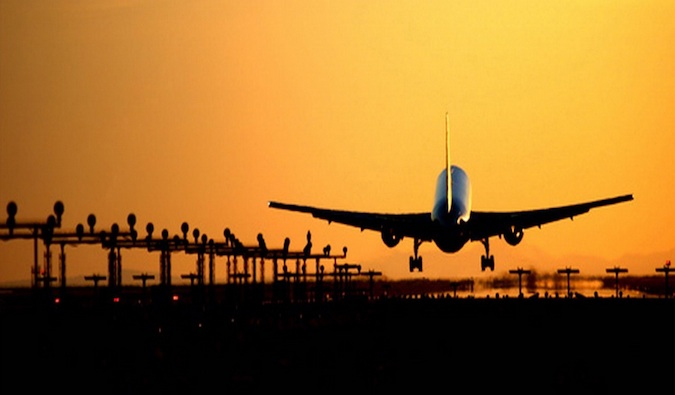
Fortunately, there are still many ways to avoid being the person on the flight who paid the most for their ticket. My two favorite sites for finding cheap airfare are:
- Skyscanner – Skyscanner is the best website for searching multiple destinations at the same time.
- Google Flights – Like Skyscanner, Google Flights is great for open searches to multiple destinations.
For the best deals, book your flight about two-three months in advance. Here are two articles on how to score a cheap flight:
- How to Find Cheap Flights
- Booking Flights: Everything You Need to Know
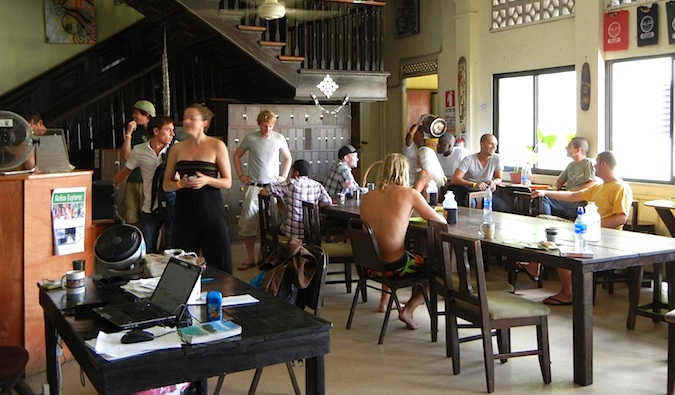
For trips longer than two weeks (or if you are going to be traveling long-term) just book your first few days. That will ensure you have a place to go on arrival. Once there, you can get insider advice from your hotel/hostel staff as well as other travelers. You can then use that info to plan your next steps.
While you can book more than your first few nights, you might end up wanting to change your plans once you land. I prefer having flexibility, which is why I always just book my first few nights and go from there.
Here are my go-to sites when it comes to finding the best deals on accommodation:
- Hostelworld – Hostelworld has the largest selection of hostels and is my go-to site for finding affordable hostels.
- Agoda – Agoda has the best results if you’re heading to Asia (though they sometimes have good US deals too).
- Booking.com – Booking.com is the best overall platform for finding budget hotels and guesthouses.
If you’re on a tight budget or you want to connect with more locals during your travels, consider joining platforms like Couchsurfing or BeWelcome . These communities allow travelers to stay with locals for free as a sort of cultural exchange.
Long-term travelers can also try housesitting or WWOOFing as well as they both offer free accommodation (in exchange for pet sitting or farm work respectively).
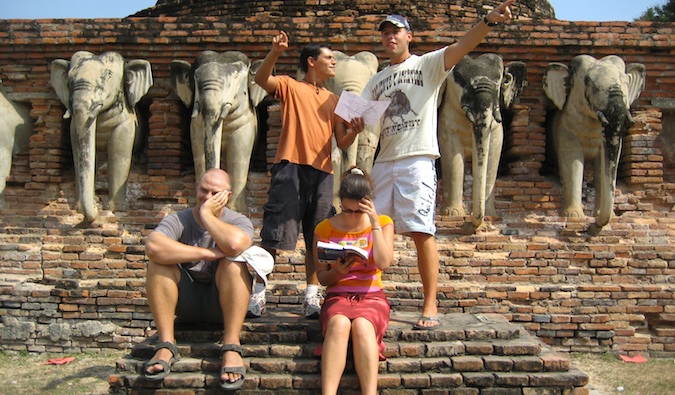
Search online for discounts as well. While some countries offer cheaper prices in person, others give discounts to those who book early/online. Research which is which for your itinerary so you can save money.
For shorter trips, you can also book your activities in advance to ensure you get tickets. For longer trips, book as you go.
Additionally, before you leave home, have a rough idea of what activities are priorities for you. That way, if you run out of time or money, you can focus on your top activities so you don’t miss out. Also, make sure to double-check that there are no holidays or other obstacles that will prevent you from certain activities as well.
If you are going on a long-term trip (six months or more), consider selling your stuff in order to earn extra money for your trip. Start doing this about 60 days before you leave. Some sites to use are:
- Gumtree – An online classified site with a focus in the UK and Australia.
- Amazon – The biggest online store in the world.
- Craigslist – Online global classifieds that have both local and global reach.
- eBay – Another global online classified site.
- Facebook Marketplace – Great for finding people near you (so you don’t need to ship your items).
If you aren’t going to be gone that long, skip this step. If you are going away long-term but want to keep your stuff, move it to a friend’s house or keep it in storage. A good storage company in the US is Public Storage . It’s one of the most affordable options out there.
Get rid of your mail, go paperless, and set up online bill payment for your recurring bills to ensure you won’t miss any while overseas. If you are still going to get paper mail, use a service like Earth Class Mail , which will collect and scan your mail for you. (If you are going on a two-week trip, you don’t really need to worry about this, so you can skip this step, too.)
If you have the option (and don’t want to pay for a mail service), you can also have all your mail sent to a friend or family member.
Additionally, you’ll want to make sure you cancel any phone plans you have or switch your plan to one that is more travel-friendly. T-Mobile is great for travelers going on trips under 3 months. For any trips longer than that, you’ll want to cancel your plan and just buy SIM cards abroad as that will be much cheaper.
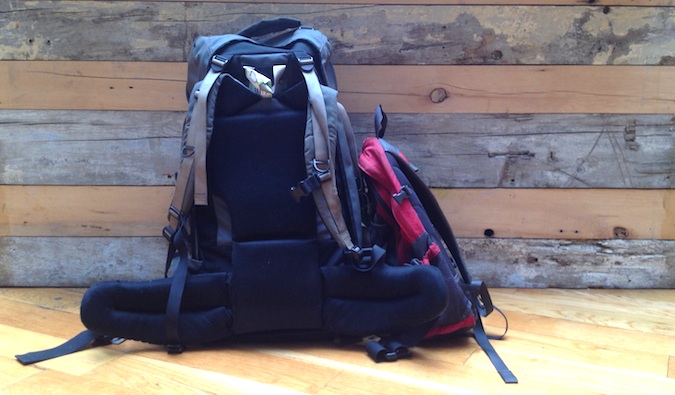
I travel with a 45L REI bag and then a smaller day bag.
Unless you’re heading to multiple climates and need bulky winter gear, you don’t need a massive 70L bag stuffed to the top. Here’s my suggested packing list to help you take just the right amount of stuff and avoid overpacking ( here’s a list for female travelers as well ).
While what you pack will depend on where you are going, remember that you don’t need to pack everything you own. You can buy things you need on the road. You can do laundry overseas. At the end of the day, you have to carry everything you bring. So bring less!
There are a few extra items you might want to pack beyond your everyday clothes, though. Some things I like to bring with me are:
- First aid kit
- LifeStraw bottle with built-in filter
- Packing cubes (to stay organized)
- Travel lock (for hostel lockers)
- Travel adapter
- Quick-dry towel
Additionally, make sure you bring any prescriptions with you so you have enough for the duration of your trip. If that’s not feasible, bring a doctor’s note and prescription with you so you can fill it abroad.
While a lot of people think, “I’m healthy, I don’t need travel insurance . I won’t get sick,” travel insurance is much more than just medical protection. It covers you when your camera breaks, your flight is canceled, a family member dies and you have to come home, or if something gets stolen.
Yes, it’s an added expense. But it’s always better to be safe than sorry. I never leave home without it because I’ve seen first-hand just what can happen on the road.
I never thought I would pop my eardrum while I was scuba diving in Thailand or break my camera in Italy .
I didn’t know I would get knifed in Colombia .
My friend never thought he would break his leg hiking.
Another friend didn’t expect her father would die and she would have to fly back home.
Unfortunately, bad things can happen when you’re traveling. True, these events are few and far between. But they can cost tens of thousands of dollars to handle on your own. If you’re not prepared to pay out of pocket, buy travel insurance.
To help you figure out the best plan for you and your trip, here’s my ultimate guide to picking a good insurance company . It will show you how to pick a good plan that covers you for when you get sick, your flights get canceled, if you get injured, something gets stolen, or your trip is delayed.
Here’s a breakdown of my recommended travel insurance companies so you can see what company offers the best plans for your needs and budget:
- SafetyWing – Super affordable plans for budget travelers.
- Insure My Trip – Best for senior travelers.
- Medjet – Provides additional evacuation coverage to ensure you get home should an emergency occur.
- Insured Nomads – In-depth emergency and non-emergency coverage for long-term travelers and digital nomads.
For more information on travel insurance, you can check out these posts:
- What Does Travel Insurance Actually Cover?
- Is Travel Insurance Worth It?
- Do You Need Medical Evacuation Insurance?
Additionally, make sure you know your rights as an airline passenger. For example, delayed flights to/from Europe often mean you’re entitled to compensation (beyond anything insurance-related).
Learn how to ensure you are compensated if your travels are delayed or your flight is canceled .

If you’re feeling nervous, don’t worry — that’s perfectly normal. You’re about to embark on an amazing adventure — and that’s a huge change. Feeling anxious or nervous or unsure is something every traveler experiences. But you’ve made it this far. Trust your planning, follow your instincts, and you’ll have the trip of a lifetime. I guarantee it.
By using this post as a guideline for your trip planning, you can better organize and prepare for your trip. You’ll check all the boxes, not miss anything, and have plenty of money for your vacation. It can be as simple as booking a flight and packing or as complex as rearranging your entire life to go backpack the world forever.
But, no matter how long your trip may be, this list will help you stay organized and motivated as you plan your trip and step out into the world.
P.S. – Yes, I did leave out visas and vaccinations, because needing those isn’t as universal as the other stuff on this list, but don’t forget to check if you need those, too!
Book Your Trip: Logistical Tips and Tricks
Book Your Flight Find a cheap flight by using Skyscanner . It’s my favorite search engine because it searches websites and airlines around the globe so you always know no stone is being left unturned.
Book Your Accommodation You can book your hostel with Hostelworld . If you want to stay somewhere other than a hostel, use Booking.com as it consistently returns the cheapest rates for guesthouses and hotels.
Don’t Forget Travel Insurance Travel insurance will protect you against illness, injury, theft, and cancellations. It’s comprehensive protection in case anything goes wrong. I never go on a trip without it as I’ve had to use it many times in the past. My favorite companies that offer the best service and value are:
- SafetyWing (best for everyone)
- Insure My Trip (for those 70 and over)
- Medjet (for additional evacuation coverage)
Want to Travel for Free? Travel credit cards allow you to earn points that can be redeemed for free flights and accommodation — all without any extra spending. Check out my guide to picking the right card and my current favorites to get started and see the latest best deals.
Need Help Finding Activities for Your Trip? Get Your Guide is a huge online marketplace where you can find cool walking tours, fun excursions, skip-the-line tickets, private guides, and more.
Ready to Book Your Trip? Check out my resource page for the best companies to use when you travel. I list all the ones I use when I travel. They are the best in class and you can’t go wrong using them on your trip.
Got a comment on this article? Join the conversation on Facebook , Instagram , or Twitter and share your thoughts!
Disclosure: Please note that some of the links above may be affiliate links, and at no additional cost to you, I earn a commission if you make a purchase. I recommend only products and companies I use and the income goes to keeping the site community supported and ad free.
Related Posts

Get my best stuff sent straight to you!
Pin it on pinterest.
Winter is here! Check out the winter wonderlands at these 5 amazing winter destinations in Montana
- Travel Guide
How To Plan A Year-Long Trip Around The World
Published: December 6, 2023
Modified: December 28, 2023
by Malory Dixson
- Plan Your Trip
- Travel Tips
Introduction
Embarking on a year-long trip around the world is an adventure like no other. It offers the opportunity to explore diverse cultures, breathtaking landscapes, and unique experiences that will stay with you for a lifetime. However, planning such a grand adventure requires careful consideration and meticulous organization. In this guide, we will walk you through the essential steps to plan your year-long trip around the world, ensuring a smooth and unforgettable journey.
Whether you dream of hiking through the lush rainforests of South America, immersing yourself in the vibrant cultures of Asia, or discovering the historical wonders of Europe, this guide will help you craft a comprehensive plan that aligns with your travel goals.
While the prospect of planning a year-long trip may seem daunting, breaking it down into smaller steps will make the process more manageable. We will cover everything from setting your goals and creating a budget to selecting destinations, planning itineraries, and ensuring important travel documents are in order. Additionally, we will provide tips for packing, managing finances on the road, staying healthy and safe, and making the most of cultural experiences.
It’s important to remember that planning a year-long trip requires flexibility and adaptability. Unexpected obstacles and opportunities may arise along the way, and being open to spontaneity can lead to some of the most memorable experiences. This guide will equip you with the necessary tools and knowledge to navigate through any challenges that may arise, ensuring a successful and enriching journey.
So, get ready to embark on the adventure of a lifetime as we guide you through the process of planning a year-long trip around the world. Let’s dive in and turn your travel dreams into reality!
Step 1: Setting Your Goals
The first step in planning your year-long trip around the world is to clearly define your travel goals. What do you hope to achieve and experience during your journey? Are you seeking adventure, cultural immersion, personal growth, or a combination of these?
Start by brainstorming and making a list of your travel priorities. Consider the types of activities you enjoy, the places you’ve always dreamed of visiting, and any specific experiences you’d like to have, such as hiking the Inca Trail to Machu Picchu or attending a traditional tea ceremony in Japan.
Next, determine the duration of your trip. Are you planning to travel continuously for a year, or would you prefer to spend a certain amount of time in each destination? This will help you estimate how many countries or regions you can realistically visit.
Another important factor to consider is your budget. Are you aiming for a shoestring backpacking adventure or a more luxurious experience? Knowing your budget will help you make decisions on accommodations, transportation, and activities that align with your financial resources.
It’s also important to keep in mind your personal comfort level and travel style. Are you someone who prefers to take it slow and immerse yourself in one place, or do you thrive on fast-paced travel and like to cover as much ground as possible? Understanding your travel preferences will shape your itinerary and the overall pace of your journey.
Once you have a clear vision of your travel goals, it’s time to prioritize and make choices. Evaluate your list and identify the destinations and experiences that align most closely with your aspirations. Remember, you may not be able to do everything in one trip, so focus on what matters most to you.
By setting your goals at the beginning of the planning process, you can create a cohesive travel itinerary that reflects your unique interests and desires. This clarity will also help you make informed decisions as you proceed with the subsequent steps of planning your year-long trip around the world.
Step 2: Creating a Budget
Creating a budget is a crucial step in planning your year-long trip around the world. It will help you determine how much money you need to save, make informed decisions about destinations and activities, and ensure that you can sustain your travels throughout the year.
Start by assessing your current financial situation. Take into account your income, savings, and any additional sources of funds you might have. Calculate how much you can realistically allocate towards your travel adventure.
Next, consider your travel style and preferences. Are you comfortable staying in budget accommodations, or do you prefer more luxurious options? Will you be dining in restaurants or cooking your own meals? Do you plan on participating in costly activities or opting for more budget-friendly experiences? Answering these questions will help you determine your daily travel expenses.
Research the cost of living and travel expenses of the countries you wish to visit. Different destinations have varying levels of affordability, so it’s essential to identify the regions that align with your budget. Keep in mind that some countries may have significant price variations within different cities or regions.
Once you have a rough estimate of your daily expenses, multiply it by the number of days you plan to travel. This will give you a basic idea of how much money you need for the entire year. Remember to include transportation costs, accommodation, food, activities, visas, insurance, and any miscellaneous expenses.
It’s essential to build a buffer in your budget for unexpected expenses or emergencies. It’s impossible to predict every expense that might arise, so having some extra money set aside will provide peace of mind during your journey.
If you find that your budget exceeds your available funds, consider making adjustments. This could involve extending your travel timeline, choosing more budget-friendly destinations, or finding ways to cut costs during your trip. Be creative and resourceful in finding ways to make your travel dreams fit within your financial means.
Finally, keep track of your expenses while traveling. Use travel budgeting apps or spreadsheets to monitor your spending and ensure that you stay within your allocated budget. Regularly reviewing your expenses will help you make adjustments if needed and maintain financial stability throughout your journey.
Remember, creating a budget is not meant to restrict your enjoyment, but rather to help you plan and prioritize your spending. By having a realistic budget in place, you can ensure that your year-long trip around the world is financially sustainable and allows you to fully embrace the adventure without unnecessary financial stress.
Step 3: Choosing the Destinations
Choosing the destinations for your year-long trip around the world is an exciting and pivotal step in the planning process. With a whole planet to explore, the options may seem overwhelming, but with some careful consideration, you can select the perfect destinations that align with your travel goals.
Start by making a list of countries and regions that intrigue you the most. Consider your interests, such as history, culture, nature, adventure, or cuisine. Research different destinations to understand what each has to offer and how they align with your preferences.
Think about the kind of experiences you want to have. Are you looking for bustling cities and vibrant nightlife, serene beach destinations, or off-the-beaten-path adventures? Prioritize your list based on what truly excites you and sparks a sense of wanderlust.
Consider the seasons and weather patterns of each destination. Different parts of the world experience contrasting climates and weather conditions at different times of the year. Take into account your desired activities, such as trekking or snorkeling, and ensure that the timing aligns with the best weather conditions for those activities.
Logistics play a crucial role in choosing destinations. Consider the ease of travel between countries and regions, as well as visa requirements and any travel restrictions that may be in place. If you plan to visit multiple countries, try to create a logical flow for your itinerary to minimize travel time and expenses.
Budget is another important factor to consider. Some countries and regions may be more expensive to visit than others, so ensure that your desired destinations align with your financial resources. Keep in mind that costs can vary within a country as well, so research and plan accordingly.
Lastly, take into account your personal travel style and preferences. Are you someone who enjoys immersing themselves in bustling cities, or do you prefer remote and off-the-beaten-path destinations? Do you enjoy a blend of cultural experiences, or are you more focused on nature and outdoor activities? Consider what resonates with you the most and prioritize destinations that cater to your interests.
After considering all these factors, narrow down your list to a manageable number of destinations for your year-long trip. Remember, you don’t need to cover every country in the world in one go. Focus on quality over quantity and choose destinations that truly speak to your heart and align with your travel goals.
Once you have your destinations in mind, you can move on to the next step of planning your year-long trip around the world, which involves crafting a detailed itinerary for each location.
Step 4: Planning Your Itinerary
With your chosen destinations in mind, it’s time to dive into the exciting task of planning your itinerary for your year-long trip around the world. Crafting a well-organized and balanced itinerary will ensure that you make the most of your time and experience the highlights of each destination.
Start by determining the duration of your stay in each location. Consider the activities and attractions you want to experience and research the recommended length of stay for each destination. This will help you allocate your time efficiently and avoid feeling rushed or overwhelmed.
Take into account the logistics of getting from one destination to another. Consider the transportation options available, such as flights, trains, buses, or boats. Research the best routes and travel times, taking into account any visa requirements or travel restrictions that may affect your journey.
Balance your itinerary between popular tourist hotspots and off-the-beaten-path destinations. While it’s important to visit iconic landmarks and attractions, allowing time to discover hidden gems and immerse yourself in local culture will provide a more well-rounded and authentic travel experience.
Consider the flow and pace of your itinerary. Avoid cramming too many destinations or activities into a short period, as this can lead to travel fatigue and burnout. Allow enough time for relaxation, exploration, and spontaneous adventures.
Research the best time to visit each destination. Consider factors such as weather, peak tourist season, and local festivals or events that may enhance your experience. Adjust your itinerary accordingly to make the most of the favorable conditions or to avoid overcrowded periods.
Flexibility is key when planning your itinerary. Keep in mind that unexpected opportunities and changes may arise along the way, so be open to adjusting your plans as necessary. Embrace the spontaneous moments that make travel so exciting and be willing to deviate from your initial plans if something truly special comes along.
Create a rough outline of your itinerary, allocating specific dates to each destination and noting any pre-booked activities or accommodations. But remember, it’s important to strike a balance between structure and flexibility. Leave room for last-minute decisions and the chance to go with the flow of your travel adventures.
As your travel date approaches, revisit and refine your itinerary based on additional research and recommendations from fellow travelers or locals. Be open to suggestions and advice from those who have visited the destinations before you.
By carefully planning your itinerary, you’ll be able to optimize your time, make the most of each location, and create a cohesive travel experience for your year-long trip around the world. So, get ready to embark on an unforgettable journey full of new discoveries, cultural immersion, and breathtaking adventures!
Step 5: Booking Accommodation
When planning your year-long trip around the world, booking accommodation is a crucial step that requires careful consideration. Finding the right accommodation can greatly enhance your travel experience and ensure a comfortable and enjoyable stay in each destination.
Start by determining your budget for accommodations. Consider the type of accommodation that aligns with your travel style and preferences. Options range from budget-friendly hostels and guesthouses to mid-range hotels, luxury resorts, vacation rentals, and even camping or staying in unique accommodations like local homestays or eco-lodges.
Research and compare different accommodation options in each destination. Read reviews from fellow travelers to get insights into the cleanliness, location, amenities, and overall experience. Consider factors such as proximity to attractions, public transportation, safety, and availability of essential facilities like Wi-Fi and laundry services.
While booking directly with hotels or accommodations is a common practice, don’t overlook the benefits of using online travel agencies or booking platforms. These platforms often offer competitive prices, a wide range of options, and the ability to compare different properties all in one place. Be sure to read the terms and conditions, cancellation policies, and any additional fees before confirming your reservation.
Consider the length of your stay in each destination and whether it is worth booking accommodation for the entire duration or if it would be more cost-effective to book on a nightly basis. This flexibility allows you to adjust your plans as needed and ensures that you are not tied down to an accommodation if your travel plans change.
For popular destinations or peak travel seasons, it’s advisable to book your accommodation well in advance to secure your preferred choice and avoid disappointment. However, for more spontaneous or off-the-beaten-path destinations, you may have the flexibility to book closer to your travel date or even upon arrival.
Don’t forget to take advantage of loyalty programs or discounts offered by accommodation providers. Signing up for loyalty programs or using travel credit cards can earn you rewards, free nights, or exclusive discounts on future bookings.
Lastly, be open to alternative accommodation options that align with the unique experiences you seek. Consider staying with local hosts through platforms like Airbnb or Couchsurfing for an immersive cultural experience. Or, try a homestay with a local family to gain insights into the local way of life. These alternatives can provide a more personalized and authentic travel experience.
By carefully selecting and booking your accommodation, you can ensure a comfortable and enjoyable stay throughout your year-long journey around the world. Take the time to research, compare options, and make informed decisions that align with your budget, preferences, and desired travel experiences. So, get ready to rest and recharge in a variety of accommodations as you embark on your grand adventure!
Step 6: Sorting Out Travel Documents
Sorting out your travel documents is a crucial step in planning your year-long trip around the world. Ensuring that you have the necessary paperwork in order will prevent any last-minute hiccups or delays that could potentially disrupt your travel plans.
Start by checking the validity of your passport. Most countries require that your passport is valid for at least six months beyond your intended departure date. If your passport is expiring soon, it’s advisable to renew it well in advance to avoid any potential complications.
Next, research the visa requirements for each country you plan to visit. Some countries allow visa-free entry for certain nationalities, while others require visas that need to be obtained in advance or upon arrival. Identify the specific visa requirements for each destination and plan accordingly.
For countries that require visas, ensure that you have the necessary paperwork and documents to support your application. This may include proof of accommodation, travel insurance, return or onward flight tickets, financial statements, or invitation letters if applicable. Start the visa application process early to allow for any processing delays.
Consider obtaining travel insurance to protect yourself against unexpected events such as illness, accidents, or cancellations. Research different insurance providers and choose a policy that suits your needs and offers comprehensive coverage for the duration of your trip.
Make copies of all important travel documents such as your passport, visas, travel insurance policy, and important contact information. Keep both digital copies and physical copies in separate locations, such as on a cloud storage service and in a secure folder or safe.
Check if any vaccinations are recommended or required for the destinations you plan to visit. Consult with your healthcare provider or a travel clinic to ensure that you are up-to-date with routine vaccinations and to receive any necessary additional vaccinations based on your travel plans.
Research the entry and exit requirements of each country. Some countries may require proof of sufficient funds, a return or onward ticket, or evidence of accommodation to be presented upon arrival. Ensure that you have the necessary documentation readily available to avoid any complications at immigration checkpoints.
Finally, familiarize yourself with any travel advisories or safety precautions for the destinations you plan to visit. Check the official travel websites of your home country and the countries you plan to visit for any travel alerts or warnings. Register with your embassy or consulate in each country for added support and assistance during your travels.
By taking the time to sort out your travel documents in advance, you can travel with peace of mind and avoid any unnecessary stress or complications. Ensure that all necessary paperwork is in order, plan for any required visas or vaccines, and have copies of important documents ready for easy access. With your travel documents sorted, you’re one step closer to embarking on your epic year-long adventure!
Step 7: Packing Essentials
Packing for your year-long trip around the world can be both exciting and daunting. It’s important to pack efficiently and thoughtfully to ensure that you have all the essentials while keeping your luggage manageable and easy to carry.
Start by creating a packing list tailored to your specific travel needs and destinations. Consider the climate, activities, and cultural customs of each place you plan to visit. Pack versatile clothing items that can be easily mixed and matched to create different outfits.
Choose lightweight and quick-drying clothing made from breathable fabrics. Opt for layers that can be added or removed to adjust to varying temperatures. Don’t forget essentials like comfortable walking shoes, swimwear, and rain gear.
Pack toiletries in travel-sized containers to save space and comply with airline regulations. If you have specific toiletry preferences or needs, bring an adequate supply, as certain products may not be readily available in all destinations. Consider packing a basic medical kit with essential medications, pain relievers, and personal care items.
Don’t forget to bring important travel documents, including your passport, visas, and copies of your itinerary. Keep them in a secure and easily accessible place, such as a travel document organizer or a zippered pouch.
Consider investing in a good-quality backpack or suitcase that is durable and designed for long-term travel. Look for features like multiple compartments, sturdy zippers, and ergonomic straps. Opt for lightweight luggage to avoid excessive weight restrictions or additional fees.
Electronics are important for staying connected and capturing memories. Pack essentials like a smartphone, camera, chargers, and travel adapters. Consider bringing a power bank to keep your devices charged on the go. It’s also advisable to have a backup option for storing and backing up your photos, such as a portable hard drive or cloud storage.
Research the specific voltage requirements and plug types of the countries you plan to visit. Bring universal travel adapters that can accommodate different outlets to ensure that you can charge your devices anywhere.
Don’t forget to pack some travel essentials, such as a travel pillow, sleep mask, earplugs, and a portable luggage scale to avoid excess baggage fees. Consider bringing a reusable water bottle to stay hydrated and minimize waste.
Travel with a mindset of minimalism and avoid overpacking. Remember that you can purchase many items on the road if needed. Pack versatile clothing and prioritize essentials rather than packing for every possible scenario.
Lastly, pack some personal items that bring you comfort and remind you of home. This could be a favorite book, a small keepsake, or photos. These familiar items can provide a sense of familiarity and comfort during your travels.
Packing for a year-long trip around the world can be a challenge, but with careful planning and organization, you can pack efficiently and ensure that you have what you need for your journey. Remember to balance practicality with a sense of adventure and flexibility, and be prepared to adapt and adjust your packing as you go. Happy packing and bon voyage!
Step 8: Managing Finances on the Road
Managing your finances while traveling for a year requires careful planning and budgeting. It is important to have a system in place to ensure that you can effectively track your expenses, access your funds, and make wise financial decisions along the way.
Start by setting up a dedicated travel bank account or a separate savings account for your trip. This will help you keep your travel funds separate from your regular expenses and make it easier to track your spending.
Notify your bank and credit card companies about your travel plans to avoid any issues with the usage of your cards. Inquire about any international transaction fees or limits imposed on your cards and consider obtaining a travel credit card that offers benefits such as no foreign transaction fees or travel rewards.
Research currency exchange options and familiarize yourself with the exchange rates for the countries you plan to visit. It is advisable to carry a combination of cash and cards for flexibility. Keep in mind that some destinations may primarily operate on cash, so ensure that you have enough local currency on hand when necessary.
Monitor your spending by using a travel budgeting app or keeping a spreadsheet. Log all your expenses, including accommodation, transportation, meals, activities, and any miscellaneous costs. Regularly review your spending to ensure that you stay within your budget and make adjustments as needed.
Be cautious when using public Wi-Fi networks for financial transactions. Avoid accessing sensitive information such as online banking or entering credit card details on insecure networks. Consider using a Virtual Private Network (VPN) to secure your internet connection and protect your personal information.
Consider using mobile banking apps that allow you to monitor your accounts, transfer funds, and make payments while on the go. These apps can provide convenience and accessibility to manage your finances wherever you are in the world.
Keep emergency funds in a separate account or in cash in case of unforeseen circumstances or emergencies. Having a backup fund will give you peace of mind and help you manage unexpected expenses during your trip.
Bargain and negotiate prices when appropriate, especially in markets and street vendors where haggling is common. Research local customs and etiquette to ensure that you negotiate respectfully and avoid offending locals.
Avoid unnecessary expenses by researching free or low-cost activities and attractions. Many destinations offer free walking tours, discounted museum days, or public parks and gardens to explore. Immerse yourself in local culture and take advantage of affordable or free experiences.
Save on food costs by dining like a local. Seek out street food stalls, local markets, and small eateries where you can sample authentic cuisine at a fraction of the price of touristy restaurants. Consider cooking some of your meals, especially if you have access to a kitchen in your accommodation.
Planning and managing your finances effectively will ensure that you can sustain your year-long trip and make the most of your travel experiences. By keeping track of your expenses, being mindful of your spending, and making smart financial decisions, you can enjoy your journey without unnecessary financial stress and constraints.
Step 9: Staying Healthy and Safe
When embarking on a year-long trip around the world, prioritizing your health and safety is paramount. Taking precautions and staying informed will help ensure a smooth and worry-free travel experience. Here are some essential tips for staying healthy and safe during your journey:
Research health and safety guidelines for each destination you plan to visit. Check with reputable sources such as the World Health Organization (WHO) or the Centers for Disease Control and Prevention (CDC) for information on required vaccinations, health advisories, and any current health risks in specific regions.
Visit a healthcare provider or travel clinic before your trip. Discuss any necessary vaccinations, obtain any prescribed medications you may need, and seek guidance on managing pre-existing conditions while traveling.
Pack a well-stocked travel medical kit with essentials such as pain relievers, bandages, antiseptic creams, and any necessary prescription medications. Carry a copy of your prescriptions, as well as important medical documents, in case of emergencies.
Stay updated on local safety and security conditions. Stay informed about any travel advisories or warnings issued by your home country and the countries you plan to visit. Register with your embassy or consulate to receive updates and assistance in case of emergencies.
Practice good hygiene habits, including frequent handwashing with soap and water, or using hand sanitizer when soap is not available. Be mindful of food and water safety, opt for bottled water or filtered water, and avoid consuming raw or undercooked food.
Protect yourself from insect bites by wearing long sleeves, pants, and using insect repellent. Consider using mosquito nets or bed nets in areas where mosquito-borne diseases are prevalent.
Stay active and prioritize your physical well-being. Engage in regular exercise, stay hydrated, and maintain a balanced diet. Take breaks when needed and listen to your body to avoid exhaustion or burnout.
Practice responsible and respectful behavior towards local customs, traditions, and cultural norms. Familiarize yourself with local laws and regulations and ensure that you adhere to them during your travels.
Be vigilant about your personal belongings and practice precautionary measures against theft or pickpocketing. Use a money belt or a hidden pouch to keep your valuables secure while exploring crowded areas.
Trust your instincts and be cautious when interacting with strangers. Be mindful of scams or tourist-targeted schemes. Research common scams in your destination and learn how to protect yourself.
Keep important documents such as your passport, visas, and emergency contact information secure. Make digital copies of your documents and store them in a secure cloud-based storage service for easy access in case of loss or theft.
Invest in travel insurance that provides comprehensive coverage for medical expenses, trip cancellation, lost luggage, and emergency evacuation. Review the policy coverage carefully to ensure that it meets your specific needs and provides adequate protection.
By prioritizing your health and safety, staying informed, and taking necessary precautions, you can minimize risks and ensure a safe and enjoyable year-long travel adventure. Remember to be proactive, stay vigilant, and embrace the journey with a well-prepared and mindful mindset.
Step 10: Embracing Cultural Experiences
One of the most rewarding aspects of a year-long trip around the world is the opportunity to immerse yourself in different cultures and embrace unique experiences. By appreciating and respecting the local customs and traditions, you can create meaningful connections and deepen your understanding of the world. Here are some tips for embracing cultural experiences:
Research and learn about the local customs, traditions, and etiquette of the countries you plan to visit. Understanding basic greetings, gestures, and cultural norms will demonstrate respect and help you navigate social interactions with ease.
Engage with the local community by participating in cultural activities and events. Attend festivals, visit local markets, and explore neighborhood gatherings to experience the vibrant traditions and celebrations of each destination.
Try the local cuisine and sample traditional dishes. Food is often deeply connected to a culture’s identity, and indulging in local flavors can be a delightful way to explore the gastronomic diversity of each region.
Interact with locals and initiate conversations. Engage in dialogue, ask questions, and show genuine interest in learning about their beliefs, traditions, and way of life. This will not only broaden your knowledge but also create connections and foster cultural exchanges.
Learn a few basic phrases in the local language. Even a simple “hello,” “thank you,” or “please” can go a long way in showing respect and building rapport with locals. The effort to communicate in their language will be appreciated by the people you meet along your journey.
Be open-minded and willing to adapt to local customs and practices. Embrace differences and be respectful of cultural sensitivities. Remember that your perspective may differ from that of the locals, and approaching new experiences with an open heart and mind can lead to transformative encounters.
Participate in traditional ceremonies, rituals, or activities when invited or appropriate. From temple visits and spiritual practices to traditional dances and crafts, engaging in these experiences can offer a deeper understanding of a culture’s values and beliefs.
Respect sacred sites and cultural heritage. Follow the guidelines and rules when visiting temples, historical sites, or sacred landmarks. Dress appropriately, observe silent zones, and remember to ask for permission before taking photographs, particularly in sensitive areas.
Support local businesses and artisans by purchasing locally made products and crafts. Opt for sustainable and ethical souvenirs that are representative of the destination’s culture and traditions. This supports the local economy and helps preserve traditional craftsmanship.
Be mindful of your impact as a traveler and strive to leave a positive footprint. Respect the environment, follow sustainable travel practices, and be considerate of the cultural and ecological heritage of the places you visit. Leave no trace and aim to contribute positively to the destinations you explore.
Embracing cultural experiences opens the door to a world of diverse perspectives, connections, and personal growth. By immersing yourself in the local culture, you can create unforgettable memories and forge lifelong friendships. Embrace each destination with open arms and a genuine curiosity, and your year-long trip around the world will be enriched with meaningful encounters and a deeper appreciation for the beauty of our diverse world.
Congratulations on planning your year-long trip around the world! By following the steps outlined in this guide, you have developed a comprehensive plan to ensure a successful and fulfilling adventure. From setting your goals and creating a budget to choosing destinations, planning your itinerary, and taking care of essential travel documents, you are well-prepared to embark on an experience of a lifetime.
As you traverse different countries and immerse yourself in diverse cultures, remember to stay open-minded, flexible, and respectful. Embrace the unexpected, be willing to step out of your comfort zone, and seize every opportunity to connect with locals and fellow travelers. Embracing cultural experiences will enrich your journey and leave lasting memories.
Throughout your travels, prioritize your health and safety. Stay informed about any health risks, follow preventive measures, and maintain a keen awareness of your surroundings. By taking proactive steps to stay healthy and safe, you can fully enjoy each destination and make the most of your time on the road.
Finally, remember that travel is not just about the destinations you visit but also about the personal growth, self-discovery, and the connections you make along the way. Embrace the challenges, the joys, and the moments of awe that come with experiencing the world. Allow yourself to be transformed by the people you meet, the cultures you encounter, and the wonders of our beautiful planet.
As you embark on your year-long trip, remember that the journey is as valuable as the destination. Embrace the exhilarating highs and the occasional hurdles with a positive mindset, and allow yourself to be filled with gratitude and awe as you navigate this extraordinary experience. Bon voyage and enjoy every moment of your adventure!

- Privacy Overview
- Strictly Necessary Cookies
This website uses cookies so that we can provide you with the best user experience possible. Cookie information is stored in your browser and performs functions such as recognising you when you return to our website and helping our team to understand which sections of the website you find most interesting and useful.
Strictly Necessary Cookie should be enabled at all times so that we can save your preferences for cookie settings.
If you disable this cookie, we will not be able to save your preferences. This means that every time you visit this website you will need to enable or disable cookies again.

Let us plan your trip for you
Roadtrippers Autopilot™ creates your itinerary based on what we’ve learned from over 38 million trips. You’re never more than a few clicks away from your next great adventure.

- Auto Travel

Let Autopilot take the wheel planning your next road trip, scenic drive, RV journey and everything in between. Then enjoy the ride while uncovering hidden gems along the way.
Get real-time traffic updates and access to wildfire smoke maps to stay informed and connected throughout your journey.
Collaborate
Share your itinerary with your copilots so they can help with the finishing touches.
Let Roadtrippers be your guide, navigating the twists and turns as you roam the open roads with confidence and ease.

Exclusive Access To Autopilot
Let us do the planning for you! Enter in a few key details and we’ll craft a custom tailored trip just for you.

Choose the right plan for you—and try it free for 7 days
Premium planning.

RV-Friendly Tools

Overnight RV Parking

Start free for 7 days
Then $35.99 (that's only $2.99/month), then $49.99 (that's only $4.17/month), then $59.99 (that's only $4.99/month).
† RV-Friendly routing features (including routing warnings for vehicle hazards and propane restrictions) are available in the U.S. only.
Free 7-day trial
Test drive the best features of Roadtrippers Premium for free! Eligible users will get exclusive access to all the tools needed to plan the perfect road trip.
Create a Roadtrippers account to start your 7-day free trial.
Already have a Roadtrippers account?
We need your email address
Before we can sign you up for Roadtrippers, we need your email address. Click the button below to go to your profile.
Plan your next adventure with a Roadtrippers Premium account
Due after 7-day free trial
Thank you for signing up for a Roadtrippers Subscription
Get started planning your next trip now!

Good news...you already have Roadtrippers!
Thanks for being one of our most dedicated users.
- Trip guides
- Trip Planner
- Sign up Log in Sign out
- Log in Sign out
- ROADTRIPPERS MEMBERSHIP
- RV RESOURCES
Plan your journey, find amazing places, and take fascinating detours with our app.
We couldn't find an existing Roadtrippers account using that service. Please try signing in with another option or create a new account with Roadpass.
We need your email address to send you trip itineraries and other updates.

Passing Thru Travel
Master the Art of Endless Exploration: 12 Essential Tips for Long-Term Travel in 2024!
Posted: February 29, 2024 | Last updated: February 29, 2024

Long-term travel is an enriching and life-changing adventure but requires meticulous planning and strategic packing. Whether you’re embarking on a months-long global exploration or a prolonged backpacking trip, this guide will provide essential tips and insights to help you navigate the complexities of extended travel. From financial planning to choosing the right gear, we’ll cover everything you need to know to confidently embark on your long-term journey.

1. Financial Planning and Budgeting
Effective financial planning is the foundation of any successful long-term travel. Begin by outlining a comprehensive budget for all foreseeable expenses—consider accommodation, transportation, meals, activities, insurance, and contingencies. Explore the cost of living for your chosen destinations; this will help you set realistic daily budget goals.
In the digital age, managing your finances on the go is easier than ever. Consider travel-focused financial tools, like no-foreign-transaction-fee credit cards or a dedicated travel savings account. Regularly monitor your expenditures; numerous apps and tools can assist in tracking and categorizing your spending.
This vigilant financial oversight is a strategy to extend your travel duration and enhance your experiences. Remember, the unexpected can and does happen, so a financial buffer is essential.
Insider’s Tip: Always have a financial buffer for unexpected expenses.
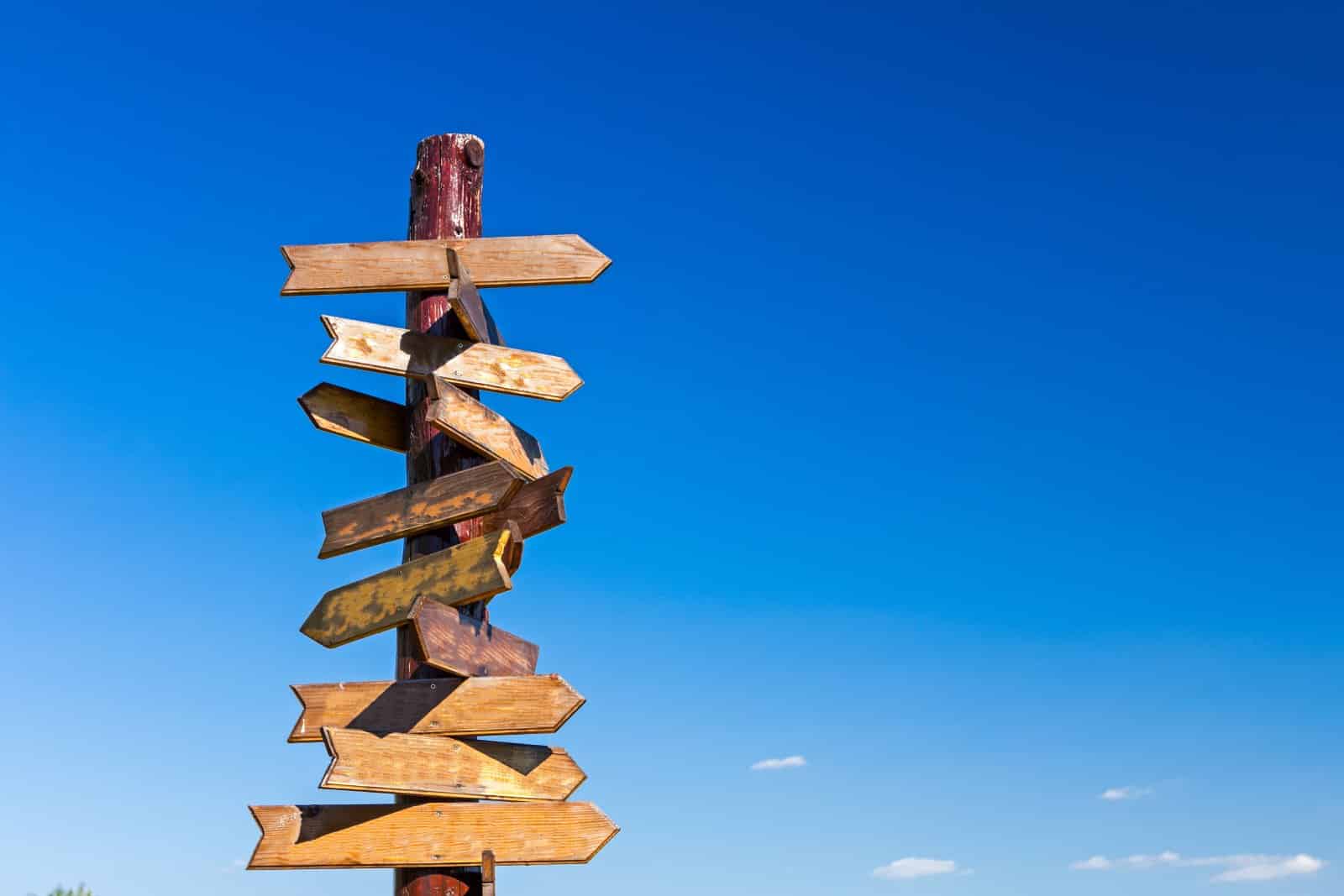
2. Choosing Destinations Wisely
Long-term travel involves carefully selecting destinations that align with your interests, budget, and travel rhythm. Research is your ally here. Research the specifics of each location, from the cost of living and cultural experiences to weather patterns and safety standards.
Weigh up the charm of off-the-beaten-path destinations against well-trodden tourist hubs. Diverse destinations enrich your travels and balance your budget—mixing more affordable regions with pricier locales.
Visa regulations are another crucial factor; some countries offer long-term visas or visa extensions for nomadic travelers, which can significantly impact your itinerary.
Insider’s Tip: Balance out expensive countries with more affordable ones to keep your overall budget in check.

3. Accommodation Strategies
Securing the right accommodation is key to a successful long-term travel experience. Unlike short vacations, where a hotel might suffice, extended stays require thinking more like a local. Options such as Airbnb, extended-stay hotels, or house-sitting can provide comfort and a deeper immersion into the local culture.
These choices often come with the added benefit of kitchen access, allowing you to save money by cooking your own meals. Engage with local online communities or expat groups for leads on affordable, long-term rentals.
In popular tourist destinations, look beyond the central areas to neighboring towns or suburbs where you might find better deals. The length of your stay can often be a bargaining chip for negotiating lower rates, so don’t hesitate to ask for a discount for extended bookings.
Insider’s Tip: Negotiate rates for longer stays to save money.
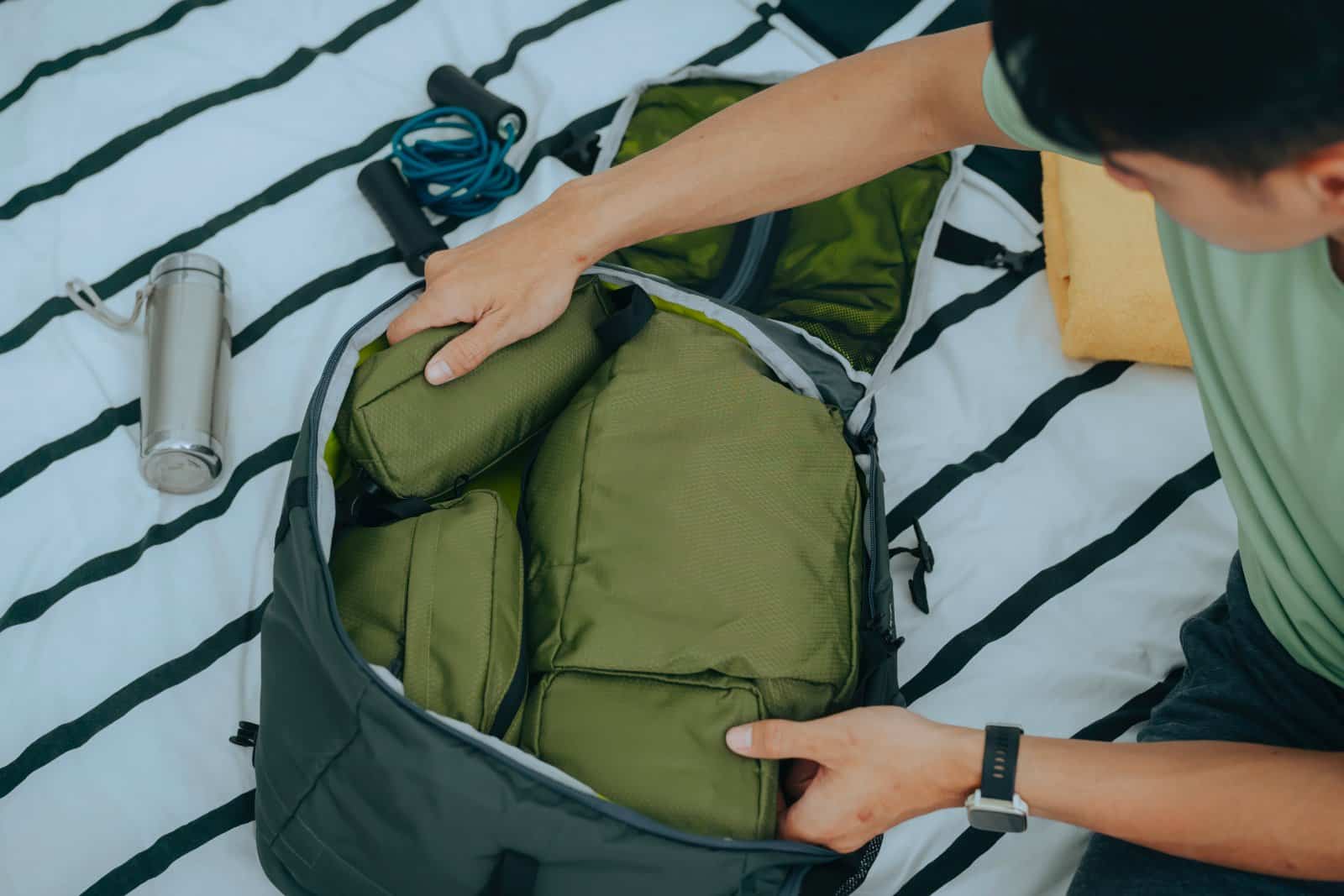
4. Packing Efficiently
The art of packing for long-term travel is finding the balance between preparedness and minimalism. Choose versatile, durable clothing suitable for different climates and cultural environments. Favor quality over quantity, selecting items that can withstand repeated use and washing.
Remember, you’ll carry everything you pack, so keep your luggage manageable. Essentials like a reliable, multi-purpose travel backpack, lightweight rain gear, and comfortable, all-terrain shoes are non-negotiable. Opt for travel-sized toiletries and consider eco-friendly, multi-purpose products. Packing cubes are a lifesaver for organization, helping you keep track of your items over months of travel.
Insider’s Tip: Use packing cubes or compression bags to maximize space and organize your belongings.

5. Staying Connected
In today’s connected world, ensuring reliable communication channels during long-term travel is crucial. A global SIM card or an international data plan can connect you across borders. Portable Wi-Fi devices offer flexibility, especially in remote or rural areas. A lightweight, durable laptop is essential for those working on the go.
Cloud storage and online backup services safeguard your important documents and memories. Equally important are offline resources like downloaded maps or translation apps that you can access without an internet connection.
Staying connected also means staying informed — regularly check local news and travel advisories for your current location.
Insider’s Tip: Use communication apps that work well on low bandwidth to stay connected in remote areas.
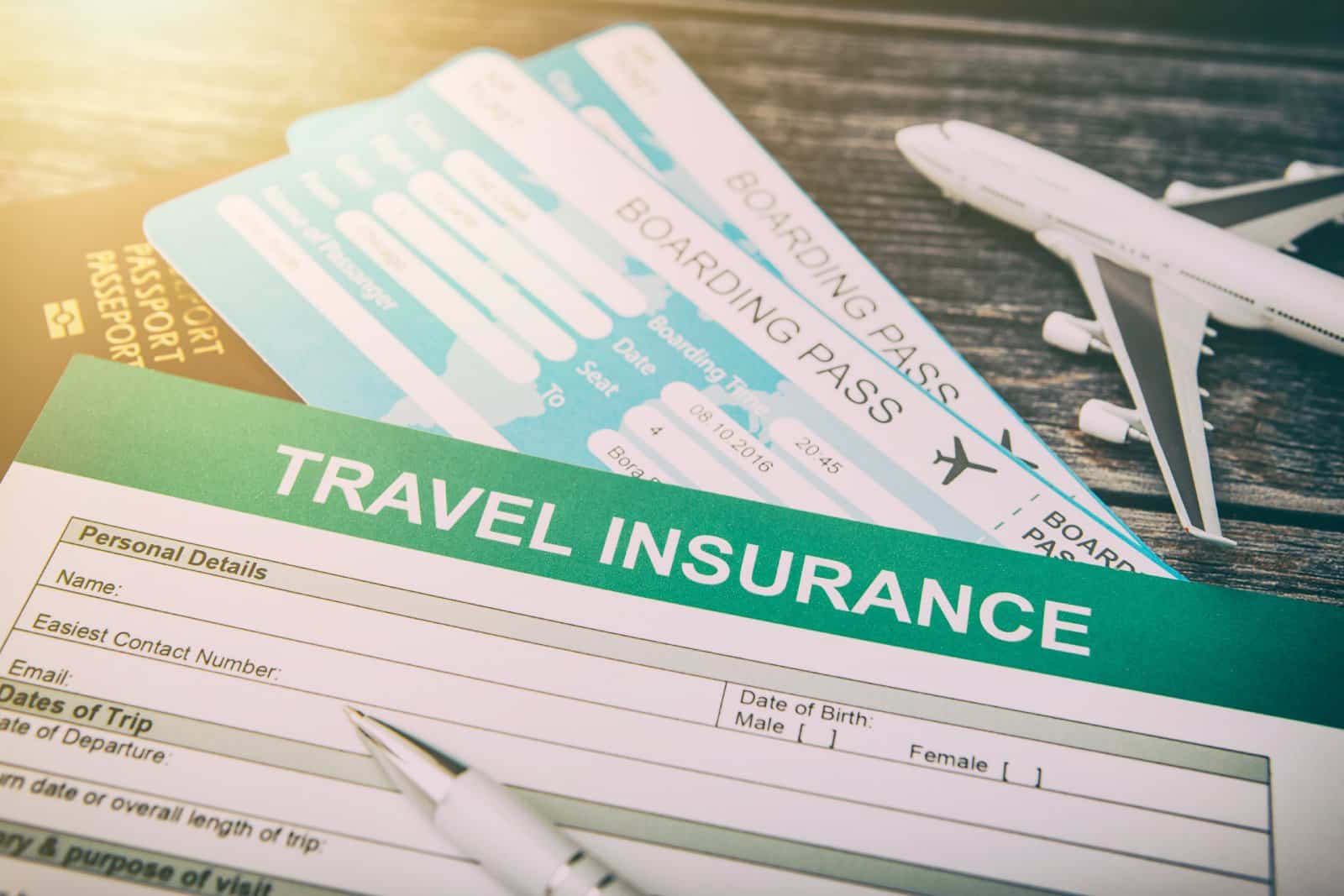
6. Travel Insurance
Comprehensive travel insurance is a must for long-term travelers. Your policy should cover a broad range of scenarios, including medical emergencies, trip cancellations or interruptions, lost or stolen luggage, and emergency evacuations. Read the policy details carefully to understand what is and isn’t covered, and make sure the coverage limits are adequate for your needs.
Choosing a policy that offers flexibility in case your travel plans change is also wise. Store a digital copy of your insurance policy in an easily accessible online location, and carry a physical copy as a backup.
Insider’s Tip: Choose a policy that allows for extensions if you decide to prolong your travel.
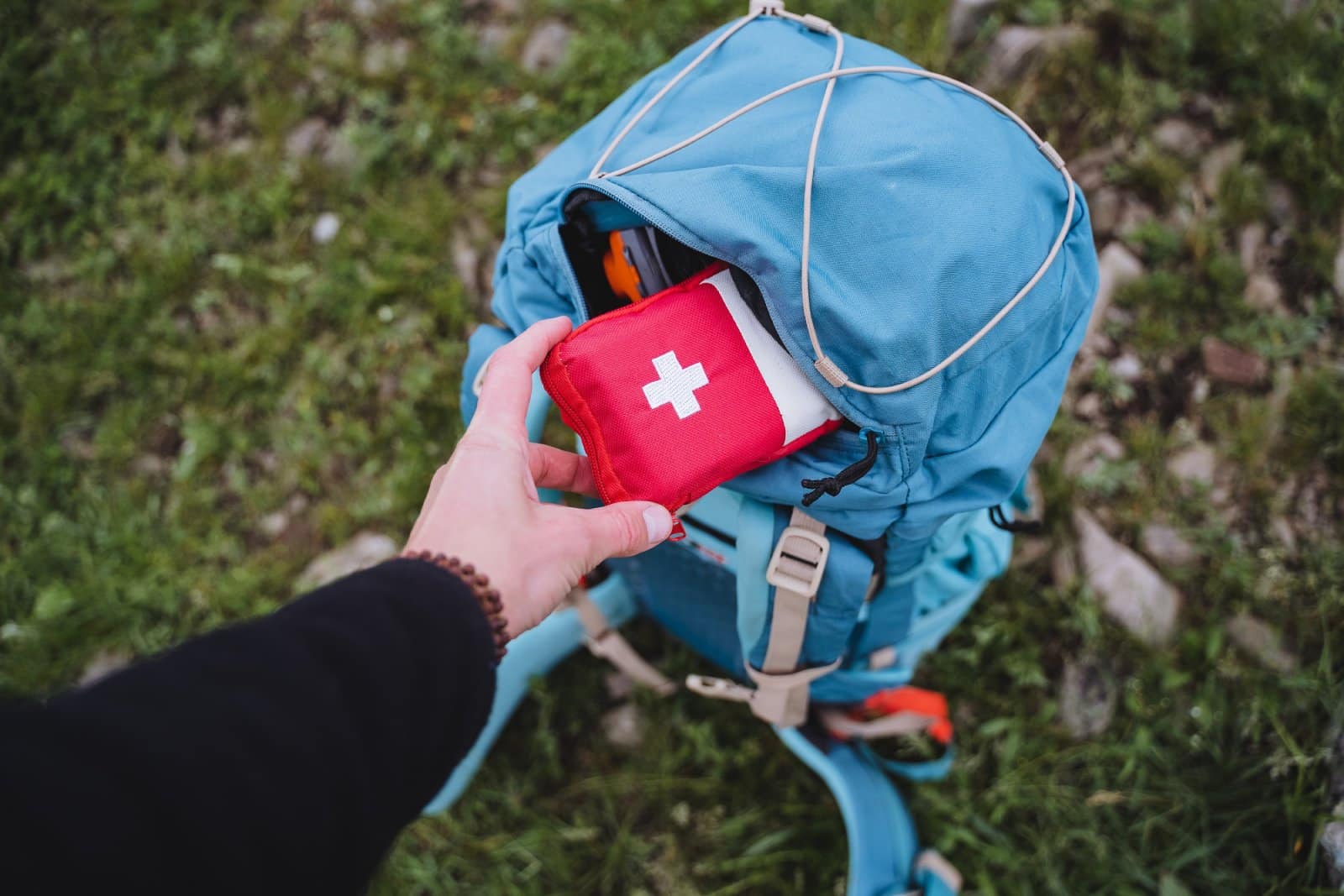
7. Health and Safety
When embarking on long-term travel, your health and safety should be at the forefront of your planning. This involves more than just packing a basic first-aid kit; it’s about proactive health management. Ensure you’re up-to-date with all necessary vaccinations and understand the health risks associated with your destinations.
Research the countries’ healthcare systems you’ll be visiting and identify reputable clinics or hospitals in each area. Additionally, be aware of the local safety conditions, including political unrest or environmental hazards. Adapt to the cultural norms and standards to avoid misunderstandings or conflicts.
Regularly update a list of emergency contacts, including local emergency services and your home country’s embassy or consulate. Being prepared and informed can make all the difference in handling unexpected health or safety issues during your travels.
Insider’s Tip: Register with your embassy or consulate in each country for safety alerts and assistance.
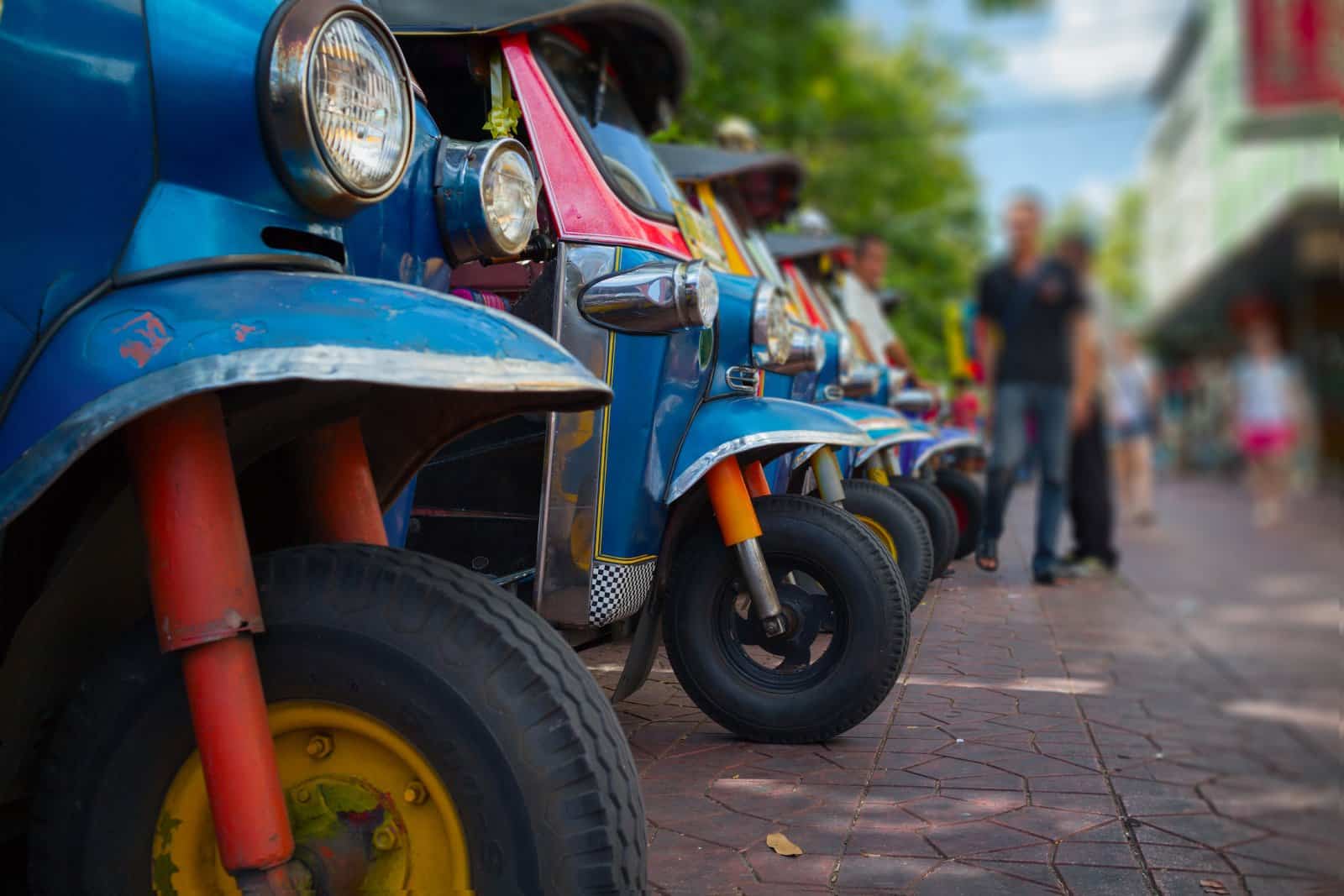
8. Local Transportation
Navigating local transportation is an integral part of long-term travel. Each destination will have unique options, from intricate public transit systems to more traditional methods like rickshaws or tuk-tuks. Familiarize yourself with the most common forms of transport in each location and consider purchasing longer-term passes for savings in places you plan to stay for a while.
For more independence, renting a car or a bike can be excellent options, but always ensure you’re comfortable with the local driving conditions and legal requirements. Utilize ride-sharing apps where available for convenience, though be mindful of the costs.
Understanding a few key phrases related to transportation in the local language can immensely simplify your daily travels. It can also aid in getting fair prices.
Insider’s Tip: Learn a few key phrases in the local language related to transportation to navigate more easily and negotiate fares.

9. Cultural Immersion and Language Skills
Long-term travel offers an unparalleled opportunity to immerse yourself in diverse cultures and understand and respect local customs, traditions, and social etiquette. Investing time in learning about your destinations’ history and cultural nuances enriches your experience and fosters deeper connections with local communities.
Language is a key to unlocking these cultural insights. While fluency is not necessary, knowing basic phrases makes daily interactions smoother and demonstrates respect for the local culture.
Regular practice through language learning apps or local classes will enhance your confidence and ability to engage with locals more meaningfully.
Insider’s Tip: Use language learning apps or take local language classes upon arrival to quickly pick up essential phrases.
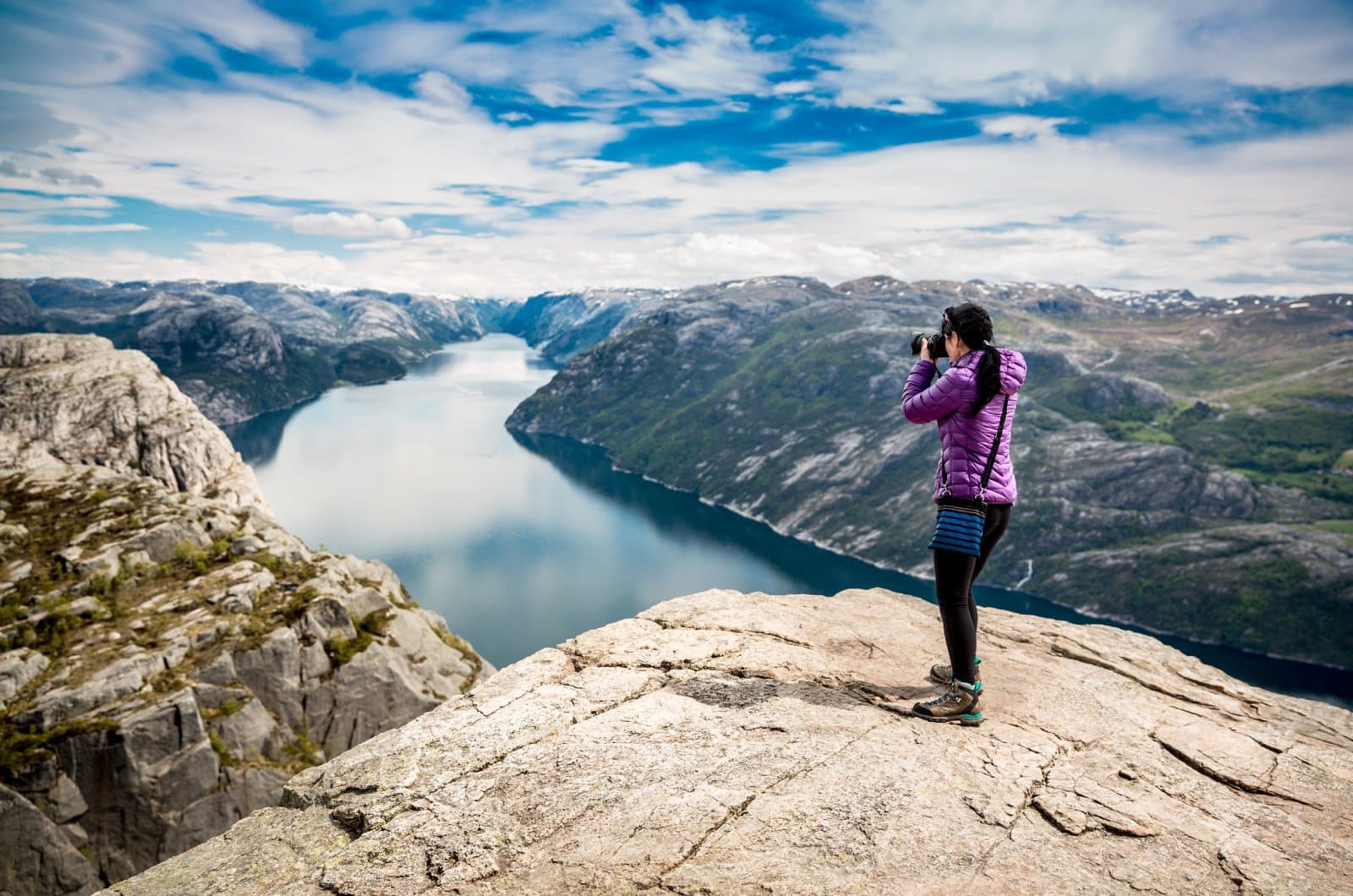
10. Documenting Your Journey
Documenting your long-term journey serves multiple purposes: it preserves memories, allows for self-reflection, and allows you to share your experiences with others. Whether through a travel blog, a journal, photography, or video, find a medium that resonates with you and commit to updating it regularly.
This documentation can become a valuable resource for other travelers and a cherished personal memoir. It’s also a way to reflect on your growth and experiences over time. Remember to back up your digital data regularly on cloud storage or an external hard drive to safeguard your memories.
Insider’s Tip: Regularly back up your photos and notes to cloud storage to avoid losing them.
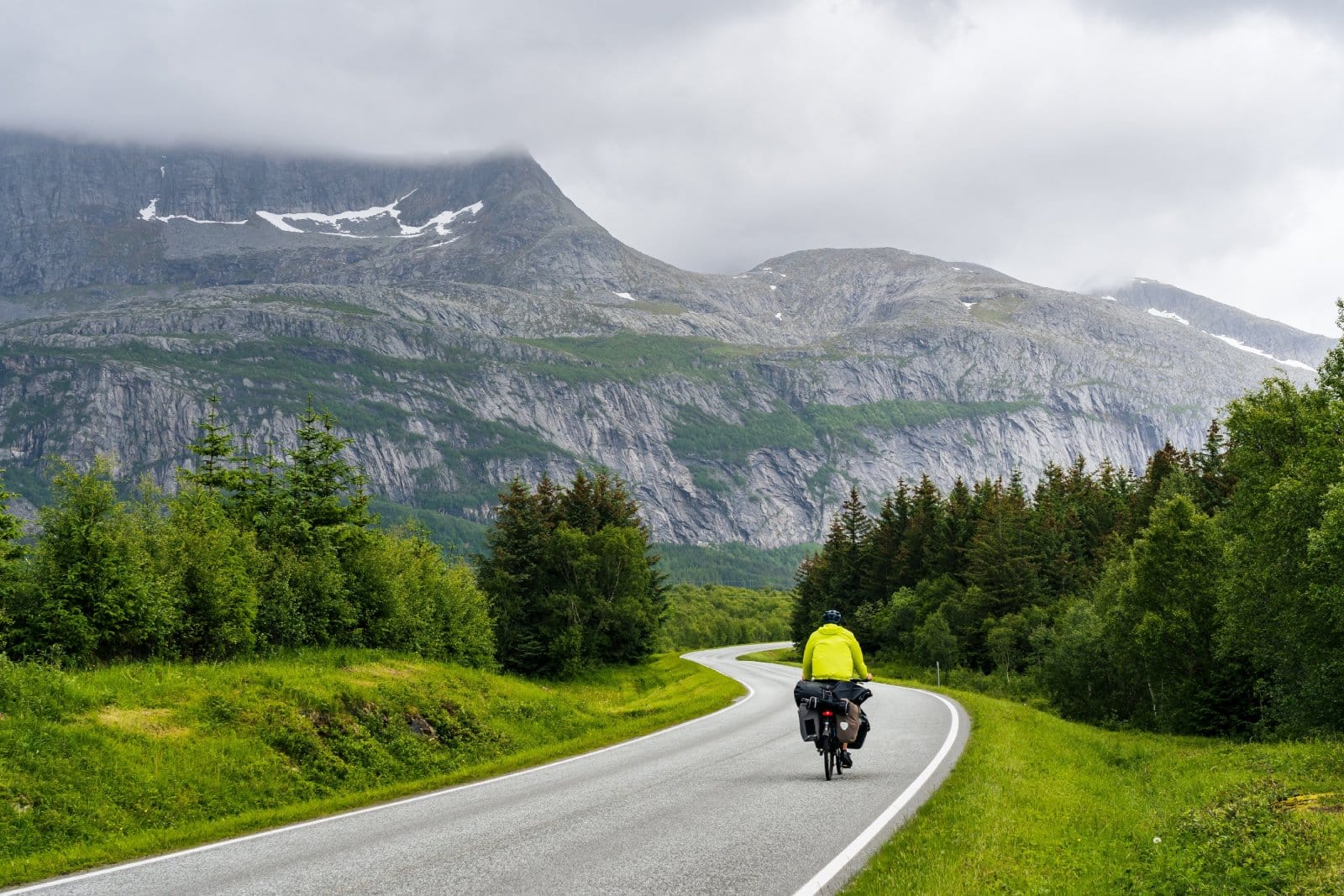
11. Sustainable Travel Practices
As a long-term traveler, you have a unique opportunity to practice and promote sustainable travel. This means making choices that positively impact the local environment and community. Opt for eco-friendly accommodation, engage in responsible wildlife tourism, and judiciously use resources like water and electricity.
Supporting local businesses by dining at local restaurants and buying local products enhances your travel experience and contributes to the local economy. Be mindful of your carbon footprint and seek ways to offset it, such as choosing overland travel over short-haul flights when possible.
Insider’s Tip: Participate in local environmental or community projects where possible.

12. Maintaining Relationships
Long-term travel can strain personal relationships, but with effort and technology, staying connected with loved ones back home is possible. Regular communication is key; schedule regular calls or video chats to keep in touch with family and friends. Social media and messaging apps are great tools for sharing updates and staying a part of each other’s daily lives, even from afar.
While nurturing relationships back home, don’t overlook the importance of building new connections on the road. Meeting fellow travelers and locals can lead to lasting friendships and provide support and camaraderie during your journey. These relationships can enrich your travel experience, offering local insights and adding a personal dimension to your adventures.
Remember, balancing old and new relationships requires effort and intention. However, the rewards are immense, making your long-term travel a more fulfilling and less lonely experience.
Insider’s Tip: Set regular times to catch up with loved ones to maintain consistency in your relationships.
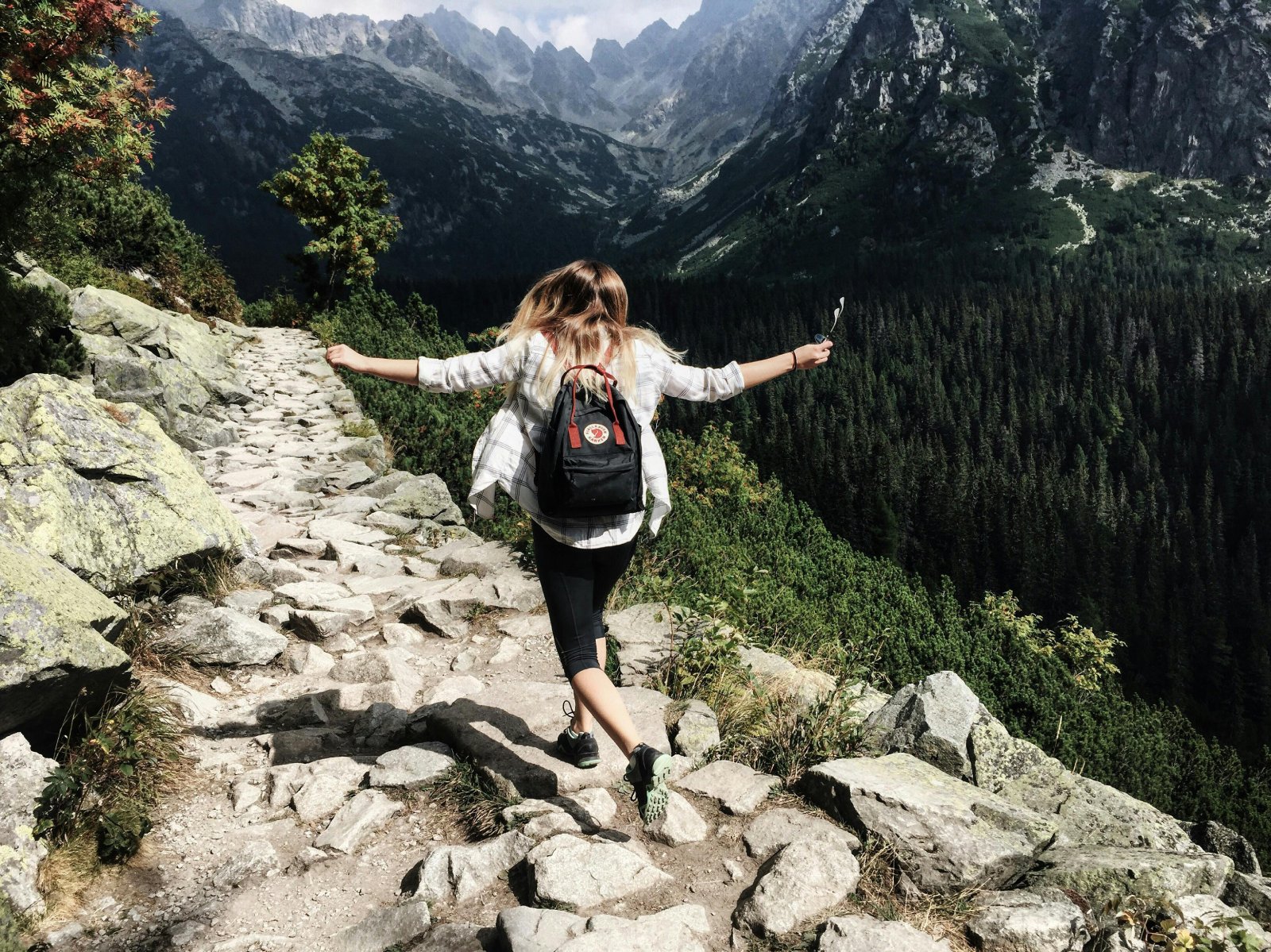
The Bottom Line
Embarking on a long-term travel adventure is an exhilarating and transformative experience. However, it comes with its own set of challenges. With careful planning, efficient packing, and an open mind, you can navigate these challenges and maximize your extended journey.
Remember, long-term travel is about the places you visit, your experiences, and the growth you undergo along the way. Embrace each moment, stay adaptable, and enjoy the journey of a lifetime. Safe travels!
More Articles Like This…
Barcelona: Discover the Top 10 Beach Clubs
2024 Global City Travel Guide – Your Passport to the World’s Top Destination Cities
Exploring Khao Yai 2024 – A Hidden Gem of Thailand
The post Master the Art of Endless Exploration: 12 Essential Tips for Long-Term Travel in 2024! republished on Passing Thru with permission from The Green Voyage .
Featured Image Credit: Pexels / Vlada Karpovich.
For transparency, this content was partly developed with AI assistance and carefully curated by an experienced editor to be informative and ensure accuracy.
More for You
Wendy's Is Selling Almost Its Entire Menu for $1 This Week
This Is How Long You Can Leave Butter On the Counter, According to Land O'Lakes
The Best Met Gala Entrances, from Lady Gaga to Rihanna
'Voted off the island': Inside Bill Belichick's failed job hunt
People With Low Emotional Intelligence Are Known to Use These 4 Phrases
I moved from California to Tennessee for my husband's job. We can finally save money, but it's been a major culture shock.
Mystery of How Pluto Got Its Heart Finally 'Solved' by Astrophysicists
The world’s most remote island open to tourists no longer takes five nights to get to
25 human foods you should never give your dog—and 25 foods you can
7 CDs You Probably Owned, Threw Out and Now Are Worth Bank
Pittsburgh Steelers’ Schedule 2024: Dates, Times, TV Schedule, and More
Peanuts by Charles Schulz
How many litres of water should you drink a day and does tea count?
Why the R-Word Is Harmful and Outdated
Major Steakhouse Chain Closes 41 Locations
The Visual Red Flags To Avoid When Buying Chicken
Coast Guard evacuates U.S. passenger from Disney cruise ship 180 miles northwest of Puerto Rico
How Do I Know If My Dog Is Happy? 12 Signs of a Happy Dog
8 Shoes to Wear with Leggings This Spring That Aren’t Sneakers
These are the 10 worst U.S. states to live in for your mental health, according to a new study
13 useful things to know before you visit Dublin
Apr 15, 2024 • 10 min read

These local tips on packing, transport and etiquette can help you plan the perfect visit to Dublin © maydays / Getty Images
As a born and bred Dubliner, I’ve spent most of my life trying to make sense of my hometown.
In one way it’s a cinch to figure out: you’ll get your bearings pretty quickly and realize that you can explore most of it on foot. But it’s not just its size that makes it such a great walking city. It’s the nature of life here that makes it the ideal flaneur destination, where you amble and devote yourself to the art of observing life around you.
Spend a few days in Dublin and you’ll soon appreciate that there is much going on in this busy little town, and that to really understand the place you’ll have to move here and spend the rest of your days figuring out its wonderful idiosyncrasies and multilayered sense of humour.
In the meantime, though, here are a few local tips that will smooth your introduction to a city that has the power to grab your imagination and not let it go.
1. Plan on having at least three days in Dublin
Dublin might be a small capital city, but it’ll demand as much time from you as you’re willing to give. You’ll need at least three days to even make a dent in the place: one day to explore even just a couple of the main sights, such as Trinity College and the Guinness Storehouse . You’ll need another day to visit some of the city’s other brilliant attractions, like the Little Museum of Dublin , the Chester Beatty and just one branch of the National Museum of Ireland . And a third day to sample some whiskey and visit either of the city’s iconic cathedrals .
A couple of days more will give you a chance to stretch your legs and explore more of the city – such as the historic General Post Office and 14 Henrietta St on the northside. But you’ll have to build in some leisure time – after all there are 800 pubs in the city , a fine selection of music venues and a handful of great theatres. And what about going further afield, on a day trip to Howth , for instance, or beyond?
Planning on some beers while you're in Dublin? Here's our guide to the locals' favorite traditional pubs
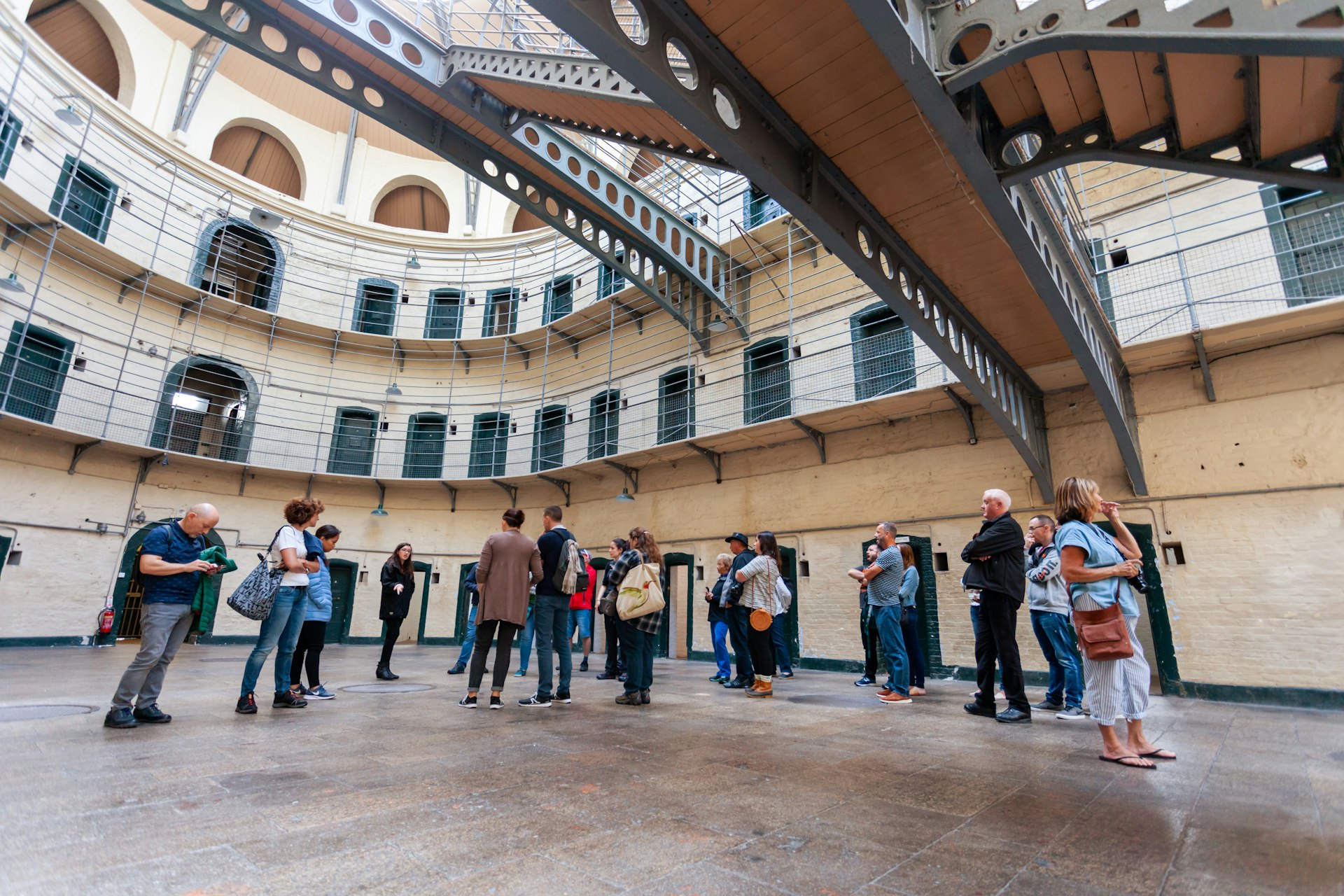
2. Dublin is a casual kind of place so pack accordingly
You can wear pretty much whatever you want in Dublin, and smart casual is the most you’ll need for fancy dinners, the theater or the concert hall. Even most work places like to keep it casual as there’s a general perception in the city that dressing up is only for that special occasion, which work rarely is.
Irish summers are warm but rarely hot, so you'll want an extra layer for when the temperatures cool, especially in the evening when the disappearing sun can make that day’s warmth feel like a distant memory.
Ultimately, the ever-changeable weather will determine your outfits, but a light waterproof jacket (preferably with a hood, unless you’re carrying an umbrella) and waterproof shoes should never be beyond reach, for the almost inevitable rain.
Plan your packing with our seasonal guide to Dublin through the year
3. Take advantage of discount cards
There is a range of discount cards that will save you money on attractions and transport. The GoCity All-Inclusive Pass (1–5 days, €79–164) gives you free entry to a bunch of top attractions, including the Guinness Storehouse, EPIC The Heritage Museum, the Jameson Distillery Bow Street, and the Big Bus Hop On, Hop Off tour. For 25% off six of those attractions, there’s the DoDublin Days Out Card (€55).
As well as the Leap Card (see below), there are good discounts to be had with the DoDublin Freedom Ticket (€48), a 72-hour travel pass that covers all public transport as well as a hop on, hop off tour.
4. Get a Leap card for use on public transport
If you’re planning on using public transport in Dublin, be sure to get a Leap Card first, as it’s cheaper and more convenient than paying for fares directly. This green plastic card is available from most newsagents and can be used on all forms of transport in the city, including buses, DART, the Luas light rail system and commuter trains throughout the county. The Leap Visitor Card (1/3/7 days, €8/€16/€32) provides unlimited travel on public transport. It can be purchased in the city and at Dublin Airport, or ordered online and delivered to your home in advance of your trip.
To use the card, just tap your card on the machine as you get on: for Luas, rail and DART services you will also need to tap off when you get off (but not for buses).
You top up the card with any amount you want (there’s a minimum of €5) at newsagents, any Luas, DART and commuter rail machines, or by downloading the Leap Top-Up App onto any NFC-enabled iPhone or Android phone: hold the card to the back of the phone and you can top up, collect pre-paid tickets and check your balance.
If you’re using a regular Leap card, rather than the Visitor Card, the TFI 90 Minute Fare applies to journeys made by Dublin Bus, Luas and most Dart trains. Any journey less than 90 minutes (including transfer times) costs €2.
Here's more useful transportation information for Dublin
5. Uber is not the best taxi option in Dublin
There are plenty of taxis in Dublin, but they can be tough to find late at night, especially at weekends when thousands of Dubliners are looking to head home to the suburbs after a night out in the city. Uber does exist in Dublin, but it’s oddly expensive; by far the most popular taxi hailing app is Freenow , which most of the city’s taxis are connected to. There are taxi ranks in the city center, but hailing them through the app is the preferred (and most convenient) option for most.

6. Get to grips with Dublin’s dining habits
Dubliners rarely eat breakfast out, so you might struggle to find a decent spot for breakfast that opens before 9am or 9:30am. The good news is that a decent cup of coffee is a non-negotiable, so there are plenty of places open by 8am to cater for caffeinated employees.
Discounted lunch specials are common, especially in the busy city center. Book tables at popular restaurants at least a few days in advance if you want to avoid disappointment or dodge the 5:30pm seating nobody else wants. For the really fancy spots including those with Michelin stars, you’ll have to plan well in advance. Some (like Restaurant Patrick Guilbaud ) will accommodate reservations no more than a month in advance, but a place like Chapter One opens its reservations list three months in advance, and then only for blocks of two months. Most tables are nabbed up pretty quickly, but if you miss out you can join the online waitlist.
7. Many of the city’s museums are free to visit
Most of the city’s larger cultural institutions are free to visit, including the three branches of the National Museum of Ireland, the National Gallery , the Chester Beatty and the Dublin City Gallery-the Hugh Lane – although there is a charge for some of the exhibitions. There are free tickets for the tours of Áras an Uachtharáin , the official residence of the Irish president in Phoenix Park and there is no charge to visit the Irish Museum of Modern Art in Kilmainham.
Smaller, privately owned museums charge a fee, but it’s rarely more than €10, and you won’t need to book your ticket in advance.
Traveling to Dublin on a budget? Here are some other free experiences to consider
8. Bottled water is a needless extravagance
In most restaurants in Dublin you’ll be offered the choice of water – still or sparkling. Unless you have a particular fondness for a specific brand of bottled water, you should always opt for tap as the city’s supply is perfectly safe, free and generally excellent. Some restaurants operate their own in-house filtration system, so for a minimal cost (usually €1–2) you have your choice of still or sparkling tap water. Same goes for filling your water bottle: tap water is fine and you don’t need to buy pricey and environmentally unfriendly plastic bottles to replenish your supply.
9. In the pub, it’s all about the rounds system
Dubliners, like the rest of the Irish, put great store in conviviality and a generous spirit. And both of these qualities are embodied in the rounds system, whereby if someone buys you a drink, you are obliged to buy them one in return. Getting sucked into the rounds system is a great way of getting to know Dubliners: strike up a conversation and, at the appropriate moment (ie when they’re just about to finish their drink), ask what they’re "having" – and before you know it you’re multiple drinks and conversations deep into a blossoming friendship.
Needless to say, you don’t have to take part in buying rounds, but if you want to understand the social glue that binds people together in Dublin, there aren't many better ways than having a few drinks with them.

10. Dublin's nightlife is expensive
Dubliners love a good night out, but the city is a pretty expensive place to party in. The capital is notorious for the price of the pint of beer, which is higher than anywhere else in Ireland. As a result, many Dubliners will do pre-drinks at home before heading out, usually between 9 and 10pm.
Happy hour promotions are illegal in Ireland; expect to pay anything from €7–10 for a pint in the city center, but keep an eye out on pubs that sneakily raise the price of a pint later in the night, presumably when punters are too drunk to notice. It’s illegal to charge a price other than what is indicated; if it happens, your best reaction is to complain and leave.
Licensing laws are stricter in Dublin than almost any other European capital. Pubs can serve alcohol until 11:30pm Monday to Thursday, to 12:30am Friday and Saturday, and to 11pm on Sunday. Many premises apply for special exemption orders, which allows them to serve until 2:30am – usually from Thursday to Saturday nights. Nightclubs usually go until 3am, but in a lot of venues there’s barely a distinction between a huge pub that turns up the music really loudly and a dedicated club for dancing.
11. Learn to take a "slagging" among friends
Dubliners are, for the most part, an informal and easy-going lot who don't stand on excessive ceremony and generally prefer not to make too much fuss. That doesn't mean that they don't abide by certain rules, or that there isn't a preferred way of doing things in the city, though. But the transgressions of the unknowing are both forgiven and often enjoyed – the accidental faux pas is a great source of entertainment in a city that has made "slagging", or teasing, a veritable art form.
Indeed, slagging is a far more reliable indicator of the strength of friendship than virtually any kind of compliment: a fast, self-deprecating wit and an ability to take a joke in good spirits will win you plenty of friends. Mind you, even slagging has its hidden codes, and is only acceptable among friends: it wouldn't do at all to follow an introduction to someone by making fun of them!
12. LGBTIQ+ travelers are welcome in Dublin
Dublin has a pretty vibrant LGBTIQ+ scene, with some well-established bars and club nights as well as activities including hiking and sea swimming. The best-known gay bar in town is the George on South Great George’s St, followed by Pantibar , which is owned by renowned activist and drag queen Rory O’Neill, aka Panti Bliss. June’s Pride Festival is the second-biggest celebration in the city after St Patrick’s Day, a raucous festival of color and fun that runs over five days. August sees GAZE International LGBTQIA Film Festival , Ireland’s only dedicated film festival, while the International Gay Theatre Festival usually takes place in May.
13. Dublin is generally a safe city with good health care
Health and safety should not be an issue during a visit to Dublin. Pharmacies selling basic medication are easy to come by, and crime is not a major concern. Taking normal precautions (eg keeping an eye on belongings in crowds) should be sufficient. O'Connell St and the streets immediately around it can get a little shady after dark, so keep your wits about you.
Explore related stories

Apr 17, 2024 • 8 min read
Discover the best of Santa Barbara from sunny beaches to wine tastings and vibrant nightlife with this comprehensive guide.

Apr 17, 2024 • 4 min read

Apr 16, 2024 • 12 min read

Apr 16, 2024 • 8 min read

Apr 16, 2024 • 6 min read

Apr 16, 2024 • 13 min read
Want to see the next total solar eclipse in 2026? An expert recommends booking travel now.
- 2026 will be Europe's first total solar eclipse in 27 years.
- Travelers worldwide will likely head to Spain, Iceland, and Greenland for the event.
- A hotel expert encouraged travelers to start planning and booking their trips now.

It'll be two decades before the next total solar eclipse hits the US .
Another option: hop on a plane to Europe and turn the 2026 total solar eclipse into a viewing vacation.
Eclipse cartographer Michael Zeiler at GreatAmericanEclipse.com told Space.com that up to 3.7 million people likely traveled for the solar eclipse on Monday.
HotelPlanner's chief communication officer, Philip Ballard, told Business Insider that the eclipse was a major revenue generator for many cities. For places like Austin, Texas, and Rochester, New York, it could have created $1 billion in revenue, Vox reported.
"I would say the total solar eclipse has become a global phenomenon," Ballard said.
Ballard added that the next solar eclipse , which will pass through Iceland, Greenland, and Spain on August 12, 2026, could result in similar tourism and revenue influxes.
And if travelers are considering a trip to Europe for the solar eclipse, Ballard recommends planning your trip now.
Determine your eclipse viewing destination
According to Space.com , 2026 will be Europe's first total solar eclipse in 27 years. Its path will go through Greenland, parts of western Iceland, and northern Spain.
Choosing where to watch the eclipse will be a tough and important decision for travelers.
Iceland and Greenland have some positives. These regions will experience longer totality times, so viewers can watch the eclipse longer. Plus, the sun will be higher in the sky, so finding a spot to watch the eclipse will be less challenging, Space.com reported.
The downside is that these regions are more likely to be cloudy, according to the outlet.
Related stories
While parts of Spain are likely to offer clearer skies, the eclipse's timing will be shorter and closer to the horizon, which means travelers will need to plan and track down a viewing location with unobstructed views of the western horizon, Space.com reported.
Regardless of the destination, according to the outlet, one bonus is that the strongest meteor shower in the Northern Hemisphere will happen the following night, so travelers can pack two events into one trip.
Book flights and hotels far in advance
Ballard encouraged people to book their hotels in their destination of choice as far in advance as possible.
"You should start looking now and booking hotels now because those cities in the path are already going to be at peak season," Ballard said.
Ballard said it's similar to when a Super Bowl city is determined or a Taylor Swift tour date is announced — you immediately see spikes in bookings. He predicts hotel occupancy rates will hit near-record highs, and room prices may double around the solar eclipse date.
Ballard's general rule of thumb is to book international travel at least three months in advance, but since this is such an anticipated event, booking earlier is smart. His advice is to start discussing plans with friends and family. If you decide on a destination, book a refundable room to keep your options open if plans change.
Regarding purchasing a plane ticket, a study from Expedia states that international travel's sweet spot is at least six months in advance.
According to Expedia, travelers who book six months in advance save an average of 10% more than travelers booking within two months or less.
Skip the hassle of planning altogether and book a solar eclipse tour
Another option is to let a tour operator do the work for you. A handful of tour companies have seen the increased interest in the solar eclipse and launched tours designed around the event.
These tours will have predetermined locations to view the eclipse, hotel blocks reserved, and itineraries highlighting both the region and the eclipse.
However, these can sell out quickly. For example, Space and Telescope created an 11-day tour of Spain around viewing the 2026 solar eclipse. The tour has already sold out as of Wednesday, and the waitlist is full.
Other operators, such as Wilderness Travel and Eclipse Traveler, have similar itineraries for the total eclipse in 2026.
Watch: A small Australian town was treated to a rare hybrid solar eclipse
- Main content
FAA lifts ground stop of Alaska Airlines flights after system issues resolved
The Federal Aviation Administration lifted a ground stop that applied to all Alaska Airlines and subcarrier flights after about an hour Wednesday. The order was first instituted because of a software issue at the airline.
"This morning we experienced an issue while performing an upgrade to the system that calculates our weight and balance. Out of an abundance of caution, we requested a ground stop for all Alaska and Horizon flights, which was instituted at approximately 7:30 a.m. PT," Alaska said in a statement to USA TODAY. "The issue was mitigated and the ground stop for Alaska and Horizon flights expired at 8:30 a.m. PT. We have begun releasing flights. Residual delays are expected throughout the day. We apologize for the inconvenience and encourage guests to check the status of their flights on alaskaair.com or the Alaska App prior to heading to the airport."
The ground stop did not apply to Alaska flights operated by regional carrier SkyWest.
Although Alaska said it anticipates some delays throughout its system Wednesday as a result of the ground stop, as of 11:50 a.m. ET, the airline was not reporting any cancellations, according to FlightAware .
Zach Wichter is a travel reporter for USA TODAY based in New York. You can reach him at [email protected].
- News 12 New York
- Download the News 12 App
- News 12 Deals
- Power & Politics
- The East End
- Environment
- Long Island Events
- Food & Fun
- Numbers & Links
- State of Our Schools
- Transportation
- Noticias Univision 41
- Celebrity Buzz
- Garden Guide
- Hometown Heroes on Long Island
- Just Engaged on Long Island
- Just Married on Long Island
- LIVE BLOG: News 12 weather updates
- Long Island Birthday Smiles
- Long Island Honor Roll
- Long Island Weather Photos
- Made on Long Island
- Paws & Pals
- Photo Galleries
- Road Trip: Close to Home
- Scholar Athlete
- Stress Awareness Month
- Team 12 Investigates
- What's Cooking
News 12 Originals
- Crime Files
- Kane in Your Corner
- On a Positive Note
- Turn to Tara
Choose Your Region
- Connecticut
- Hudson Valley
- Long Island
- Westchester
Be the first to know
Topics you care about, straight to your inbox
Travel advisory: Lane closures planned this week at many bridge, tunnel crossings in and out of New Jersey
The port authority of new york and new jersey is encouraging all travelers to plan ahead and consider additional travel time due to the lane closures or service changes..
News 12 Staff
Apr 15, 2024, 9:27 AM
Updated 2 days ago
More Stories

Police urge drivers to slow down and move over for stopped vehicles

Police: Tractor-trailer filled with potatoes goes up in flames on LIE

Police: Several people hurt in Garden City bus crash

State police: Trooper conducting traffic stop rear-ended on Meadowbrook State Parkway

Expanded New York 'Move Over' law goes into effect

Police: Long Island man killed in crash with tractor-trailer on Cross Bronx Expressway
Lane closures:.
- From 10 p.m. Friday, April 12, to 10 a.m. Saturday, April 13, two eastbound lanes and two westbound lanes on the upper level will be closed.
- From 11:59 p.m. Friday, April 12, to 9 a.m. Saturday, April 13, the New Jersey-bound tube of the Holland Tunnel will be closed due to ongoing Superstorm Sandy-related repairs. The New York-bound tube remains open during work.
- From 11 p.m. Sunday, April 14, to 5:30 a.m. the following morning, and on multiple overnights through 2025, the New Jersey-bound tube of the Holland Tunnel will be closed due to ongoing Superstorm Sandy-related repairs. The New York-bound tube remains open during work in the New Jersey-bound tube. For more information on this critical repair project, click here .
- From Sunday, April 14, through Thursday, April 18, from 11 p.m. each night to 5 a.m. the following morning, one eastbound lane will be closed.
- On Saturday, April 13, from 1 a.m. to 8 a.m., the center tube will be closed. New York-bound traffic in the south tube and New Jersey-bound traffic in the north tube will not be affected.
- On Monday, April 15, from 12:01 a.m. to 5 a.m., the center tube will be closed. New York-bound traffic in the south tube and New Jersey-bound traffic in the north tube will not be affected.
- On Monday, April 15, and again on Tuesday, April 16, from 11 p.m. each night to 5 a.m. the following morning, the north tube will be closed. New Jersey-bound traffic will be redirected to the center tube. New York-bound traffic in the south tube will not be affected. Vehicles approaching from 10th Avenue must use the right lane on 40th Street for tunnel access to New Jersey.
- From 11 p.m. Wednesday, April 17, to 5 a.m. Thursday, April 18, the south tube will be closed. New York-bound traffic in the center tube and New Jersey-bound traffic in the north tube will not be affected.
- From 10 p.m. Monday, April 15, to 5 a.m. Tuesday, April 16, two eastbound left toll lanes will be closed.
- On Monday, April 15, and again on Tuesday, April 16, from 9 a.m. to 3 p.m. each day, one northbound right lane and one southbound right lane will be closed simultaneously.
- On Wednesday, April 17, and again on Thursday, April 18, from 9 a.m. to 3 p.m. each day, one northbound left lane and one southbound left lane will be closed simultaneously.
- From 11:59 p.m. Friday, April 12, to 8 a.m. Saturday, April 13, two eastbound right toll lanes will be closed.
- From Monday, April 15, through Thursday, April 18, from 10 p.m. each night to 5 a.m. the following morning, one westbound left lane will be closed.
- From 10 p.m. Monday, April 15, to 5 a.m. April 16, two eastbound right toll lanes will be closed.
- From Tuesday, April 16, through Thursday, April 18, from 10 p.m. each night to 5 a.m. the following morning, two eastbound left toll lanes will be closed.
- From 6:30 p.m. Saturday, April 13, to 11:30 a.m. Sunday, April 14, AirTrain Newark will operate between the Rail Link and P4 stations only due to construction. Free shuttle buses will provide alternate service between P4 and Terminal A stations. Travelers should allow for additional travel time. Customer service agents will be available to assist passengers.
- From 11 p.m. Tuesday, April 16, to 10 a.m. Wednesday, April 17, AirTrain JFK will operate between Jamaica and airport terminals only due to maintenance. Free shuttle buses will provide alternate service between Howard Beach/Lefferts Blvd and airport terminals. Travelers should allow for additional travel time. Customer service agents will be available to assist passengers.
- Until further notice, the for-hire vehicle pick-up location at John F. Kennedy International Airport’s Terminal 5 will be relocated to Terminal 7’s Orange Garage roof due to airport redevelopment construction. Passengers seeking for-hire vehicle service from Terminal 5 should take AirTrain JFK to Terminal 7 for the Orange Garage. Passengers arriving to Terminal 5 will continue to be dropped off at the Terminal 5 frontage. Signage has been installed to direct passengers to pick-up locations. More details can be found here .
- Until further notice, the taxi stand at John F. Kennedy International Airport’s Terminal 5 has been relocated to the ground level of Terminal 5’s Yellow Parking Garage. Passengers seeking taxi transportation from Terminal 5 are directed to the Yellow Garage via the skywalk on the fifth floor, where passengers may access the new taxi stand using elevators or stairs. Wayfinding signage has been installed along the pedestrian route.
- Until further notice, parking on level 1 of John F. Kennedy International Airport’s Yellow Parking Lot at Terminal 5 is now dedicated for individuals with special needs or disabilities. For customer assistance, parking attendants are available on level 1. All other vehicles must park on levels 2 to 6. Premium Reserved Parking is available on level 5, which is easily accessible to Terminal 5 via the pedestrian skywalk. Electric vehicle charging is available on level 2. Plan ahead by checking parking availability and booking a parking spot in advance .
- As a reminder, all rental car companies serving Newark Liberty International Airport now operate out of the new consolidated rental car center that is co-located within the Parking A garage on levels 1 through 3. All rental transactions, including returns, take place at the new center. The facility is connected to Newark Liberty’s terminals B and C via AirTrain Newark, with a direct connection to Terminal A via a pedestrian bridge. Passengers exiting Terminal A can walk across the bridge to arrive on level two of the rental car facility. Drivers should follow “Rental Car Return” roadway signage. For more information, click
- As a reminder, peak period parking rates are now in effect at John F. Kennedy International, Newark Liberty International and LaGuardia airports. To manage on-airport parking demand, the Port Authority is urgently calling on air travelers to use mass transit and to pre-book parking spaces if they plan to travel to the airport by private car. Travelers who do not pre-book will be charged a peak period drive-up surcharge and may not be able to find a parking spot at the airport. To avoid paying a higher parking rate and guarantee a parking spot, travelers parking for longer than three hours are strongly encouraged to pre-book parking at least 24 hours in advance. For more information on the updated rates and how to guarantee a parking spot, click here .
- LaGuardia Link Q70 bus service is fare free year-round to encourage the use of public transit to and from LaGuardia Airport, as announced in April 2022 by New York Gov. Kathy Hochul. For information on how to get to the airport via public transit, visit the MTA’s page on travel to LaGuardia Airport .
- On Saturday, April 13, from 6 a.m. to 11:59 p.m., World Trade Center-bound and Hoboken/33 St.-bound PATH trains will bypass the Grove St. station to accommodate extensive station rehabilitation work. During this time, Newark-Penn Station-bound and Journal Square-bound trains will continue to make stops at Grove St. Weekday service at Grove St. will not be affected. Click here for more information.
- For World Trade Center-bound or Hoboken/33 St.-bound service from Grove St: Customers can take a Journal Square-bound or Newark-Penn Station-bound train to Journal Square and transfer to a World Trade Center-bound or 33 St.-bound train. Alternatively, customers can begin their trip at nearby Exchange Pl. or Newport stations.
- For service from Newark-Penn Station, Harrison, or Journal Square to Grove St.: From Newark-Penn Station and Harrison, customers can take a World Trade Center-bound train to Exchange Pl., and transfer to a Newark-Penn Station-bound train to ride back to Grove St. From Journal Square, customers can either take a Hoboken/33 St.-bound train to Newport and transfer to a Journal-Square-bound train to ride back to Grove St., or take a World Trade Center-bound train to Exchange Pl. and transfer to a Newark-Penn Station-bound train to ride back to Grove St.
- Customers who use the PATH World Trade Center station during overnights should use the street level entrances at Fulton Street or Vesey Street via the North Concourse in the 2 World Trade Center transit lobby. Oculus access is limited overnight from 1 a.m. to 5 a.m. to allow for enhanced cleaning and the safety and security of customers due to reduced traffic volumes. All other entrances will be closed. For updates on the WTC campus, click here .
- For information on PATH service and train schedules, click here or download the PATH mobile app, RidePath .
More from News 12

Cupcake Moms deliver baked goods to Ronald McDonald House

Riverhead School District approves budget, still plans to cut positions

Alleged Gilgo Beach serial killer appears in court; judge works to set trial date

Police: 2nd suspect arrested for fatal Brentwood hit-and-run

Police: EMT identified as motorcyclist killed in Bay Shore crash

Local farm gives neurodivergent people a place to flourish

IMAGES
VIDEO
COMMENTS
Here's everything you need to know for planning long term travel. PLANNING THE TRIP. Planning a long term trip has several stages. The very first one is the idea itself. The idea that occupies your mind, and you start thinking whether is long term travel even doable in your situation. For some, it is only a dream that will stay unrealized until ...
But before you take off for exotic destinations there's a lot to consider. This guide to long term travel planning has you covered, from budgets and your travel style, to your health and overall safety on the road. "Congratulations! Today is your day. You're off to great places! You're off and away! — Dr Seuss.
Long term travel is about being together almost 24/7; some situations are unpleasant, you will be tired, and there will be no room where you could escape. Traveling is very different from your everyday life, where you meet only in the evening, chat for a while, and then spend more time together only on weekends.
1 Determine your long term travel style. 2 Determine your long term travel budget. 3 Determine your long term travel destinations. 4 Our favorite long term travel planning resources. 5 Plan out necessary long term travel details.
While travelers should have all the essentials, they must also pack light for long-term travel. Some things to pack include: Lightweight raincoats. Long-term travel backpacks. Portable charger. A water bottle (a filter type is preferable) Sun protection items, like a hat and sunscreen. Shirts (long-sleeved and short-sleeved), pants, jeans ...
With the right attitude and mindset, you are sure to have an incredible experience that will stay with you forever! 2. PASSPORT. Image by jacqueline macou from Pixabay. Traveling with a valid and up-to-date passport should be considered essential for any traveler, particularly for someone embarking on a long-term trip.
I had no set plan or time frame except to check three major places off my bucket list: Patagonia, the salt flats in Bolivia, and Cuba. Since 2008, I have been on the road non-stop working mostly as a freelance photographer. I've visited 43 countries and lived in five. Long-term travel seemed overwhelming until I learned how to prepare properly.
Step 2: Get the funds together. There are clickbait articles out there claiming you can 'travel the world for free', but the reality is that long term travel is going to cost at least something. Luckily, travelling the world doesn't have to cost the world.
In the guide we'll walk you through the process of planning, budgeting, and making the leap that gets you out in the world. Of course, you don't have to travel for exactly a year, and you don't need to do a traditional "around the world" trip to make use of this guide. It is intended to help you plan any type of long term trip to any part of ...
Long-term travel tips to keep in mind. 1. Don't rely on one payment method. Image credit: klingsup via Canva Pro. There's no doubt that using a credit card is one of the easiest ways to conduct your payments while travelling. However, there are instances when your credit card might fail you. Or, it could get lost.
Given the range of possibilities, planning a dream trip of two months or more can be bewildering. Whether you've got two, six, 12 or 18 months to travel, prevent the journey from becoming a nightmare of forgotten visas, missed flights and inflexible itineraries with this handy guide, packed with potential routes and practical tips to help you make the most of your precious time.
Travel is TIRING. Especially if you're just doing travel 100% of the time. Actually, I wouldn't recommend this! You need some rest days; otherwise, you'll burn out. When planning long travel, make sure to plan some rest days, too - just like you would during any week of the year.
This included the 12-20% discount that some owners offer for guests who stay more than two weeks. If you hunt around, you'll also see that owners sometimes discount for stays of four weeks or longer, and some even discount if you book far in advance, like three months before your trip. Helpful Tip.
1. Gap Year. One of the most commonly known types of long-term travel is the famous Gap Year. A Gap Year is when students or young adults take a year between high school and college or after graduation to travel for an extended period. During this time, they may explore new countries, volunteer, work abroad, or engage in other personal growth ...
First, plan your long-term travel in advance. This will allow you ample time to list your property online and get some responses. In order to reduce the maintenance tasks, it is preferable to rent out your house for a longer duration to the same tenant than multiple short stay tenants. To encourage this, you can advertise discounts on long term ...
1 MONTH. Sort out your cellphone or portable wifi; research calling cards to stay in touch while you're on the road; sign up for a VPN service if you plan to get online overseas. Make sure you have a web-based email address (gmail, yahoo) and sign up for the various social networks you plan to use. Actually buy your travel insurance.
Tips For Starting Out On Long-Term Travel. Long-term travel requires a little bit of planning (but most can be planned along the way). Here are some tips: Banking: Many Sure One's Bank Has Low International Fees & Is Notified One Is Traveling. Budgeting: Decide If One Is Using Savings Or Working While Traveling.
Instead, pack clothes that all go together and can be mixed and matched easily. I like to keep all the clothes I bring in the same family of colors, with a few basic templates: pants + shirt + cardigan + scarf, say, and then I bring 2 pairs of pants and 4 shirts and 2 scarves to mix and match.
Use Wanderlog to share your itinerary with tripmates, friends, and families and collaborate in real time, so everyone stays in the loop. Plan your road trip or vacation with the best itinerary and trip planner. Wanderlog travel planner allows you to create itineraries with friends, mark routes, and optimize maps — on web or mobile app.
Buying that guidebook was my first step toward long-term travel. It made the trip seem more real, more tangible. It made it all seem possible. While helpful, the book didn't exactly prepare me for planning a trip around the world. Back then, there weren't really travel blogs, sharing economy websites, and apps like there are today.
Step 5: Booking Accommodation. When planning your year-long trip around the world, booking accommodation is a crucial step that requires careful consideration. Finding the right accommodation can greatly enhance your travel experience and ensure a comfortable and enjoyable stay in each destination.
Keep exploring with the Roadtrippers mobile apps. Anything you plan or save automagically syncs with the apps, ready for you when you hit the road! Plan your next trip, find amazing places, and take fascinating detours with the #1 trip planner. Every trip is a road trip.
Long-term travel is an enriching and life-changing adventure but requires meticulous planning and strategic packing. Whether you're embarking on a months-long global exploration or a prolonged ...
13. Dublin is generally a safe city with good health care. Health and safety should not be an issue during a visit to Dublin. Pharmacies selling basic medication are easy to come by, and crime is not a major concern. Taking normal precautions (eg keeping an eye on belongings in crowds) should be sufficient.
If you're a T-Mobile customer on qualifying plan, you can add an International Pass to get more high-speed data and unlimited voice calling in 215+ countries and destinations. 1-Day (512MB) International Pass: 512MB of high-speed data and unlimited calling, to be used up to 24 hours, for $5. 10 day (5GB) International Pass: 5GB of high-speed ...
Expect a moderate improvement of circulation, reduced swelling and a breathable, moisture-wicking feel, even after a long day of travel. Fit note: Some say these socks run large, especially for ...
Western Europe continues to be the most popular summer destination for Americans, with some notable hotspots. Travel insurance sales for Greece are up over 60% this year compared with 2023 ...
Determine your eclipse viewing destination. According to Space.com, 2026 will be Europe's first total solar eclipse in 27 years. Its path will go through Greenland, parts of western Iceland, and ...
0:03. 1:19. The U.S. Federal Aviation Administration on Wednesday issued a ground stop advisory for Alaska Airlines ALK.N, saying: "All Alaska mainline and subcarrier flights ground stopped." The ...
The Port Authority of New York and New Jersey is encouraging all travelers to plan ahead and consider additional travel time due to the lane closures or service changes. News 12 Staff Apr 15, 2024 ...